





 |
 |
 |
 |
 |
 |
|---|---|---|---|---|---|
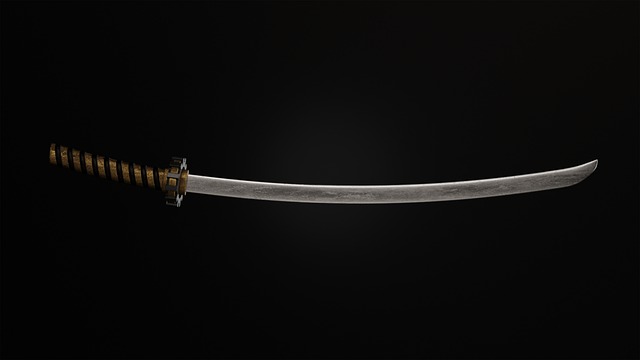 |
 |
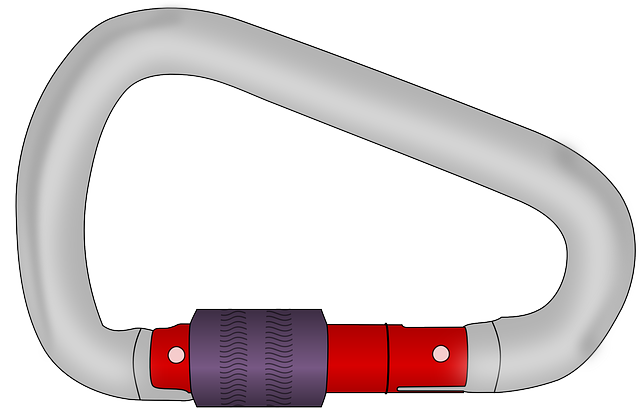 |
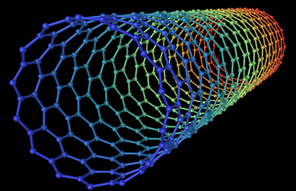 |
|
|---|---|---|---|---|
 |
|---|
For a rod under tension,
Rod cross-sectional area = A meter2 Tensile force = F Meter Tensile stress = P = F/A Pascal
Tensile strain is stretching, and is measured as a fractional change in length. For a rod under strain,
Rod length = X Meter Rod change in length = x Meter Strain = s = x/X Dimensionless
The tensile modulus is resistance to strain, and can be thought of as stiffness. This is a form of Hooke's law. For a rod under stress,
Stress on the rod = P Pascals Rod tensile modulus = T Pascals Rod strain = s = P/T Dimensionless
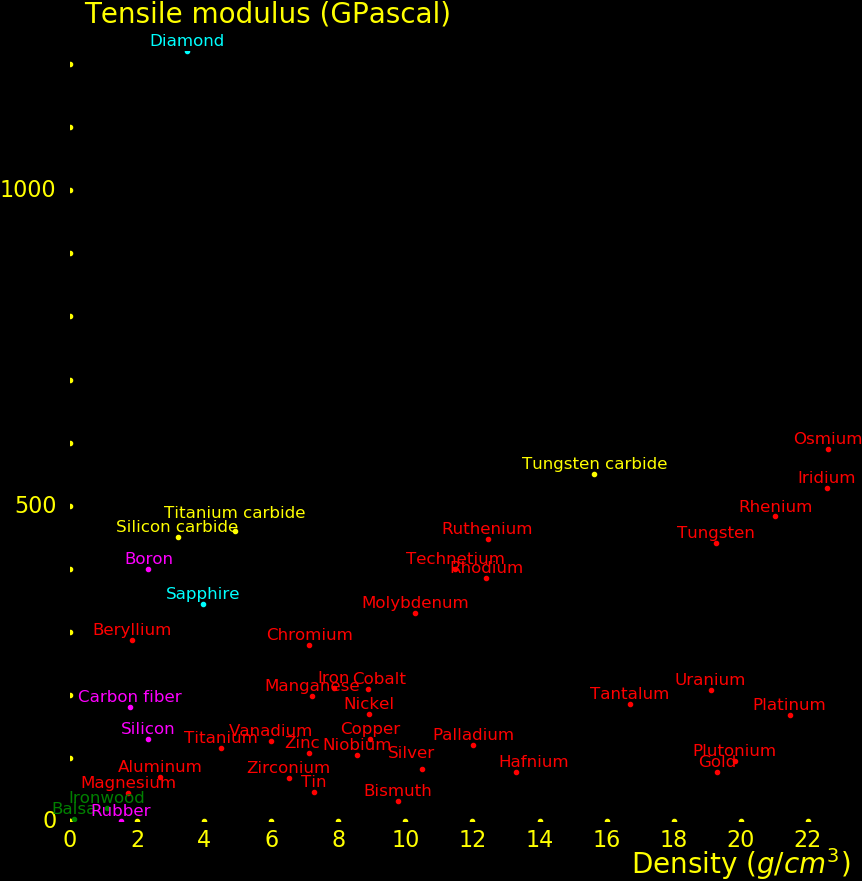 |
|---|
A material's "tensile strength" is the maximum tensile stress it can take before breaking.
Tensile strength = tbreak Newton/meter2 (Pascals) Cross-sectional area = A meter2 Breaking force = Fbreak = tbreak A Newton
A material's "tensile yield strength" is the maximum stress it can take before deforming irreversibly. For metals, the yield strength is usually 3/4 of the tensile strength, and for wood, the yield strength is only slightly less than the tensile strength.
For engineering, we focus on yield strength rather than tensile strength.
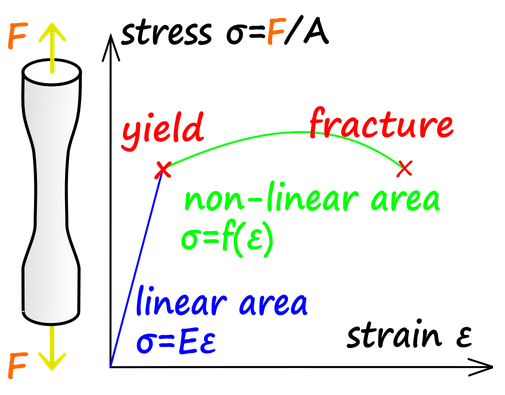 |
|---|
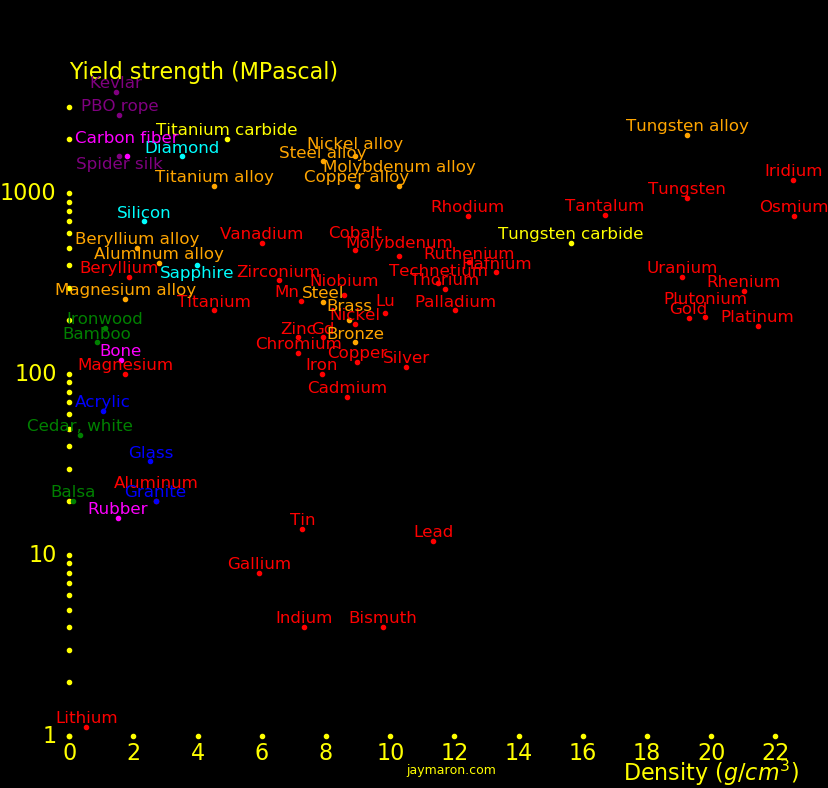 |
|---|
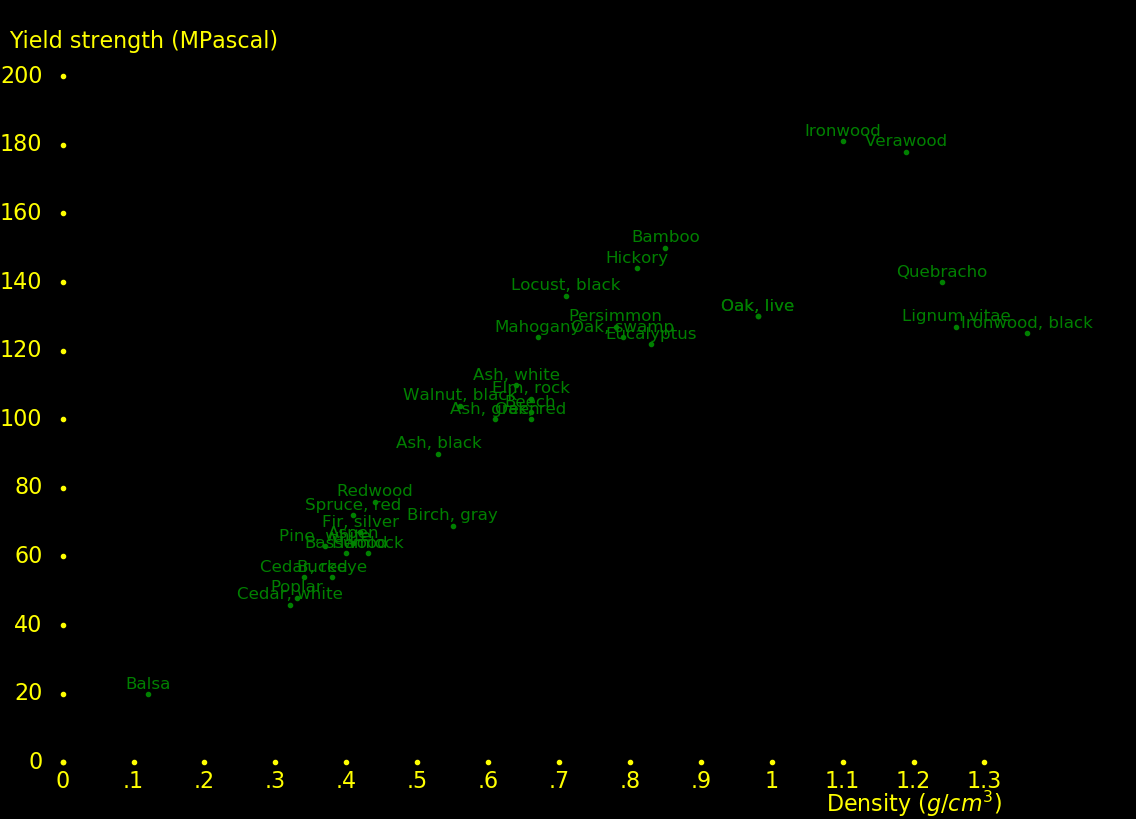 |
|---|
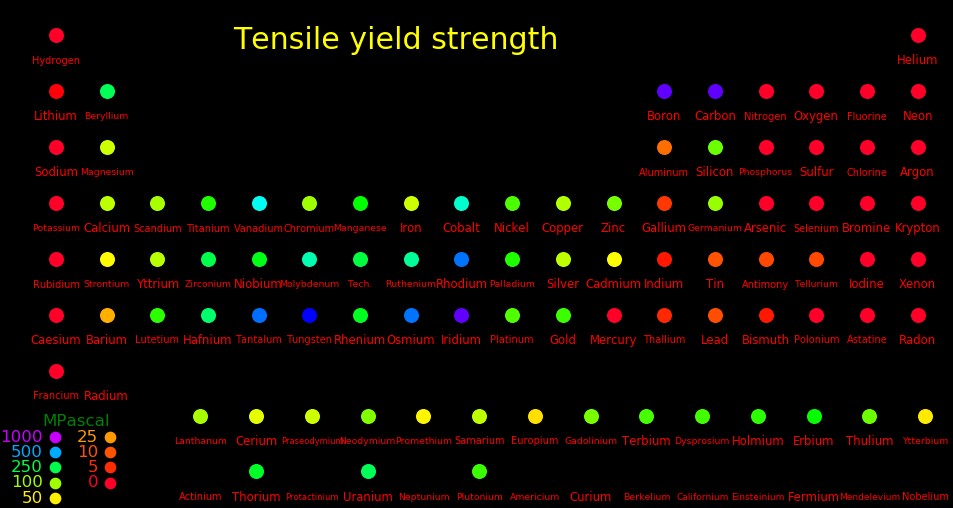 |
|---|
A material's "tensile yield strain" is the maximum strain it can take before yielding. For metals, the value varies widely.
Alloying a metal doesn't change the tensile modulus, but it improves yield strain.
Yield strength = t Pascals Tensile modulus = T Pascals Yield strain = S = t/T Dimensionless
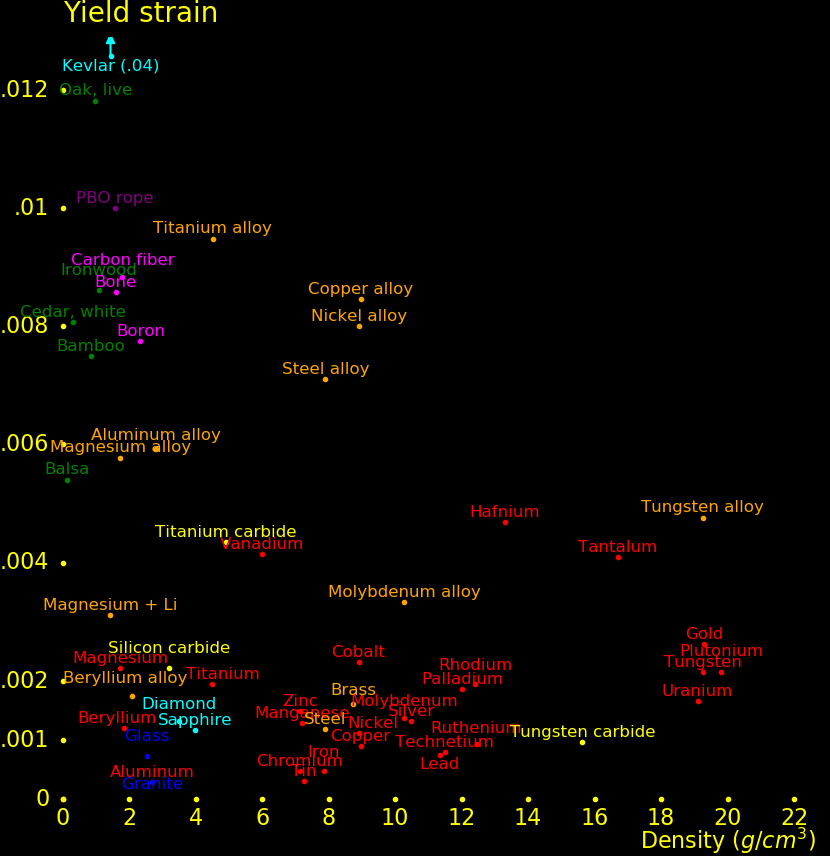 |
|---|
Density = ρ kg/meter2 Cross-sectional area = A meter2 Force = F Newton Tensile stress = P = F/A Pascals Tensile modulus = T Pascals Tensile yield stress = t Pascals Tensile breaking stress= tbreak Pascals Strain = s = P/T Dimensionless Tensile yield strain = S = t/T Dimensionless Tensile energy/volume = evol = ½ T s2 Joule/meter3 Tensile energy/mass = e = ½ T s2/ρ Joule/kg
The table shows the "strong metals", the metals with good strength/density.
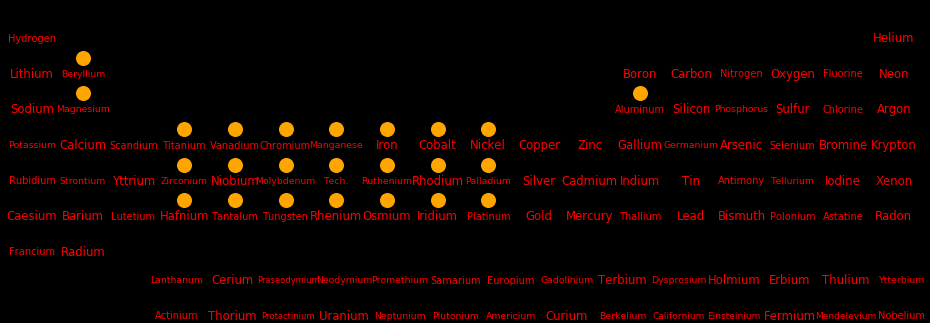 |
|---|
For bridges, what counts is strength/density.
For wood and for the strong metals,
Tensile modulus / Density ~ 25 MJoules/kg
Beryllium is an exception, with a value of 137 MJoules/kg.
The plot shows the tensile modulus divided by density.
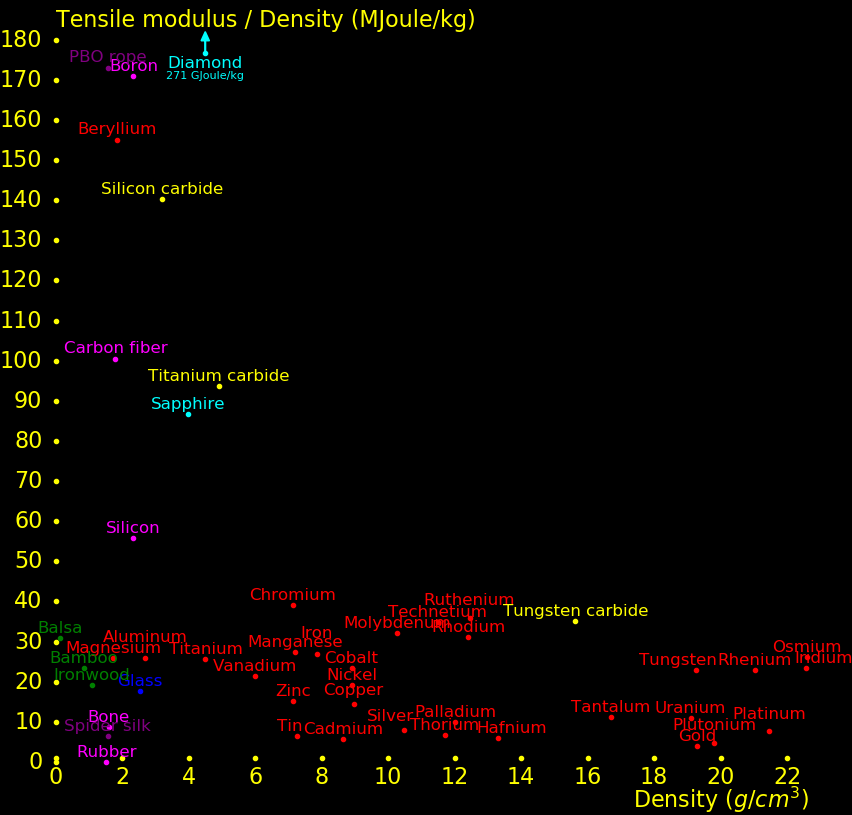 |
|---|
For many applications, the measure of the quality of a material is the elastic energy/mass it can take before yielding. For this, a material should have a large tensile modulus and a large yield strain.
Tensile modulus = T Tensile yield strength = t Tensile yield strain = S Density = ρ Tensile energy/volume = evol = ½ T S2 Joule/meter3 Tensile energy/mass = e = ½ T S2/ρ Joule/kg
The best materials are polymers such as Kevlar.
Alloys outperform pure metals. The best alloy is titanium alloy.
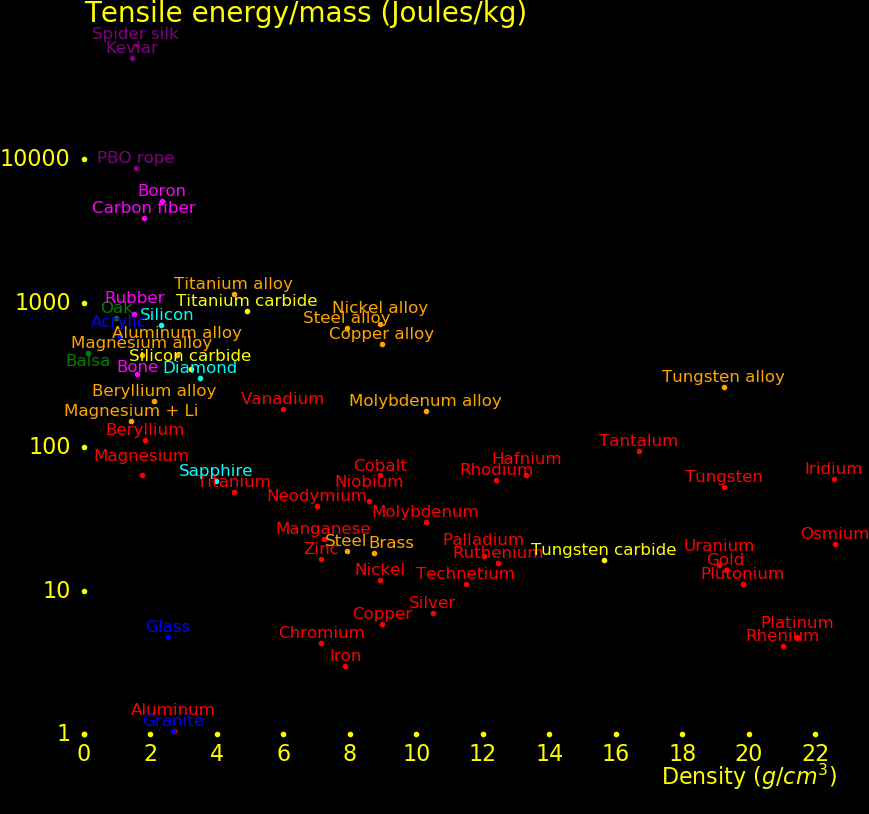 |
|---|
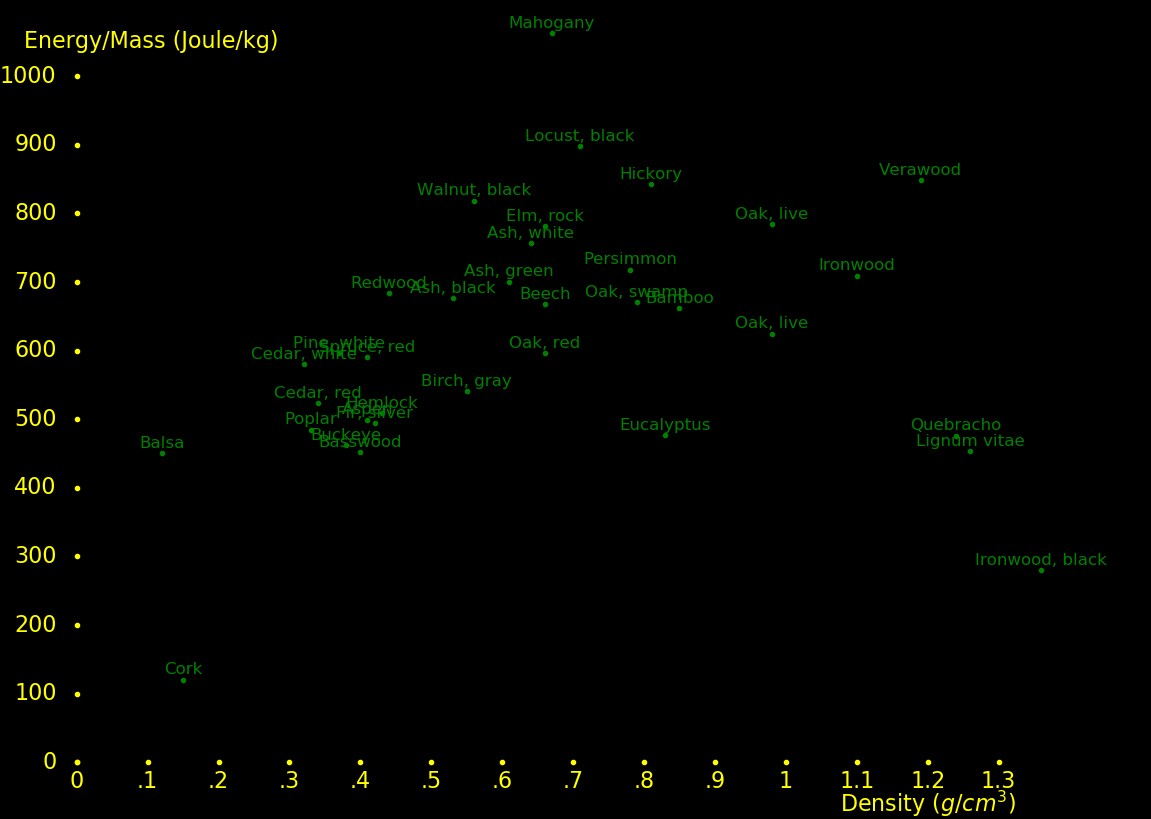 |
|---|
The types of deformation are tension, shear, and bulk compression.
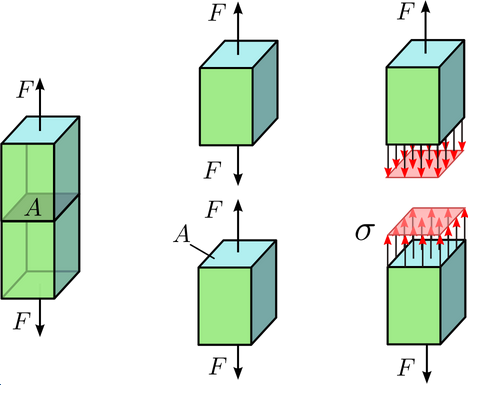 |
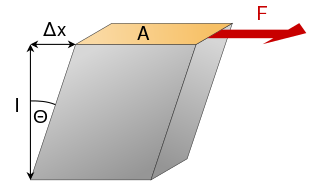 |
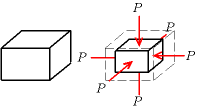 |
|---|---|---|
A wire shortens when stretched and widens when compressed.
dX = Fractional increase in length of the wire dY = Fractional decrease in diameter of the wire PoissonRatio = dY / dX
 |
 |
|---|---|
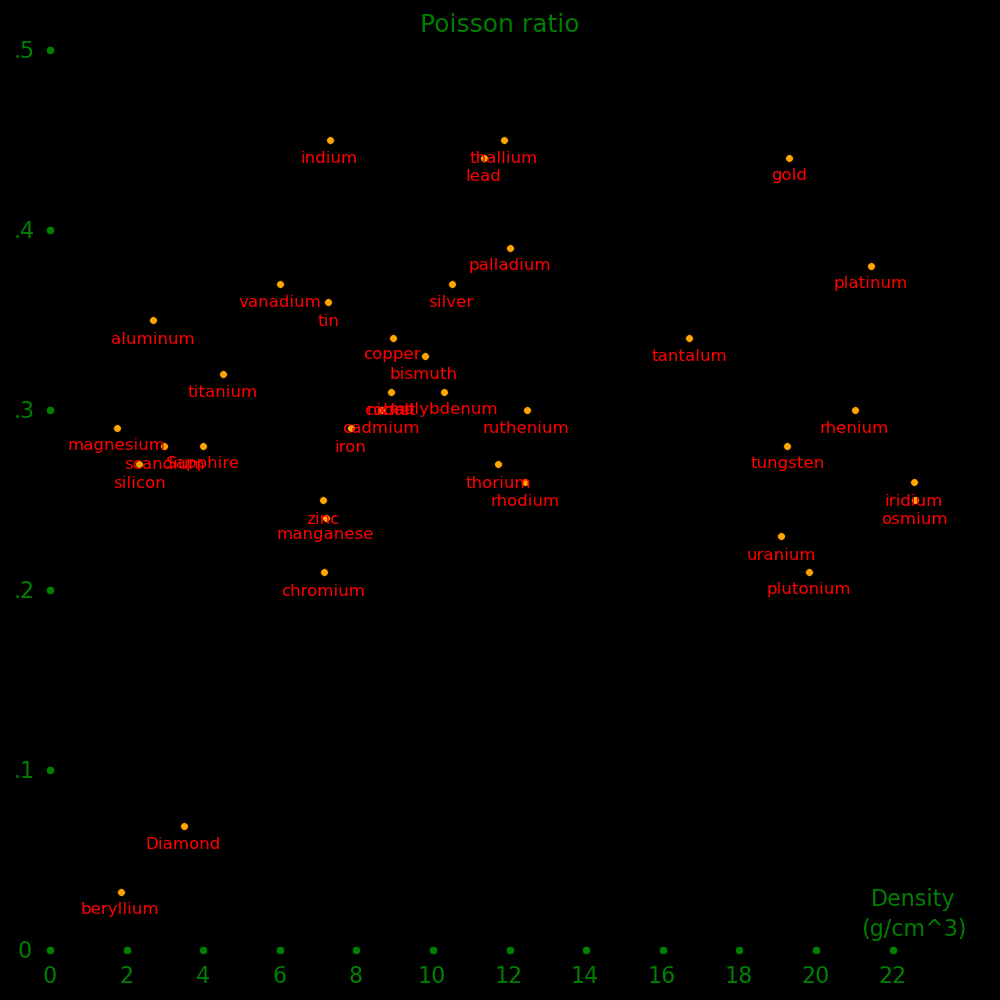 |
|---|
For an isotropic material, the tensile, shear, and bulk moduli are related through the dimensionless Poisson ratio.
Tensile modulus = T Pascals Shear modulus = Tshear Pascals Bulk modulus = Tbulk Pascals Poisson ratio = U dimensionless T = 2 (1 + U) Tshear = 3 (1 - 2U) Tbulk
For beams, the types of stresses are:
 |
 |
 |
|---|---|---|
Tensile strength relates to the strength of wires.
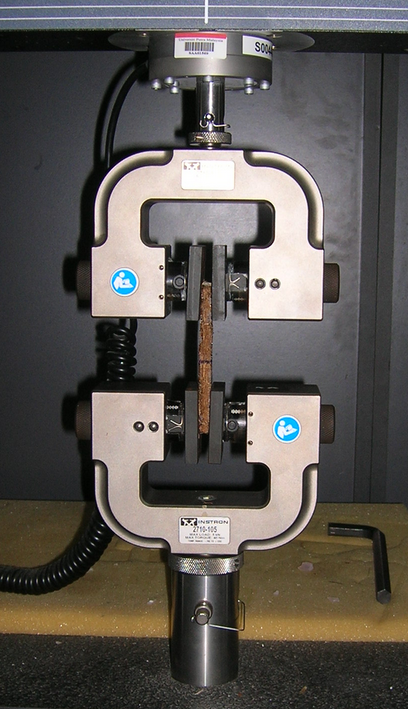 |
|---|
Tensile yield strength = t Newton/meter2 (Pascals) Cross-sectional area = A meter2 Yield force = F = tA Newton
 |
|---|
For bending, the yield force of a beam is determined by the shear yield strength.
Beam length = X meter Beam width = Y meter Beam height = Z meter The force is in the Z direction Beam yield force = f Newton Tensile yield strength = t Pascal Poisson ratio = U dimensionless Shear yield strength = tshear = ½ t / (1+U) Pascal Bending yield force = f = ⅔ tshear Y Z2 / X
Z matters more than Y. If you have a beam with a 2x4 cross section, it's best
to align the beam so that Z=4 and Y=2, rather than with Z=2 and Y=4.
Short columns fail by crushing and long columns fail by buckling.
Crushing strength is determined by bulk yield strength.
Bulk yield strength = tbulk Newton/meter2 (Pascals)
Cross-sectional area = A meter2
Crushing force = F = bbulkA Newton
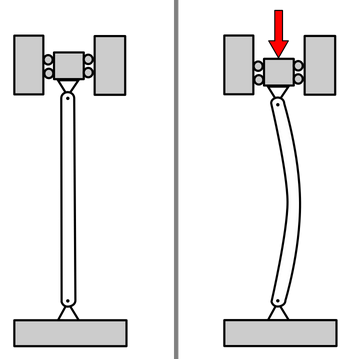 |
|---|
Long columns fail by buckling, and strength is determined by tensile yield strength.
For a column that is cylindrical and hollow,
Column length = L
Column outer radius = R
Column inner radius = r
Column boundary factor = K dimensionless
= .5 if both ends are fixed
= 2 if one end is fixed and the other end is free to move laterally
= 1 if both ends are pinned (hinged and free to rotate)
= .699 if one end is fixed and the other is pinned
Tensile yield strength = t
Buckling force = f = ½ π3 t (R4-r4) / (K L)2
If a column's buckling limit is equal to its squashing limit, and if r=0,
R/L = (K/π) (tbulk/t)1/2
Beam length = L Beam radius = R Beam tension strength ~ R2 Beam bending strength ~ R3/L Beam buckling strength ~ R4/L2
For beams and columns, the lower the density, the better.
For a square beam with Y=Z,
Density = ρ Mass = M = X Y Z ρ Beam yield force = F = ⅔ s Y Z2 / X = ⅔ S M3/2 ρ-3/2 / X5/2
At fixed length and mass, the measure of quality is t/ρ3/2.
For a cylindrical column,
Density = ρ Mass = M = π R2 L ρ Column effective length= K = 1/2 dimensionless For a column that's fixed at both ends Column buckling force = F = ½ π3 t R4 / (K L)2 = ½ π3 t M2 ρ-2 / (K2 L4)
At fixed length and mass, the measure of quality is t ρ-2.
The measure of merit depends on the application. If force/mass is what counts, then the measure of merit is
Tensile yield strength / Density Beam under tension Tensile yield strength / Density3/2 Beam under shear Tensile yield strength / Density2 Beam under compression
For many applications, the measure of merit for a material is energy/mass, where "energy" is the maximum elastic energy the material can take before breaking. This applies to things like racquets, aircraft, and swords. The cases are:
Case Measure of merit Tension Energy / Mass Shear Energy / Mass / Density1/2 Compression Energy / Mass / Density
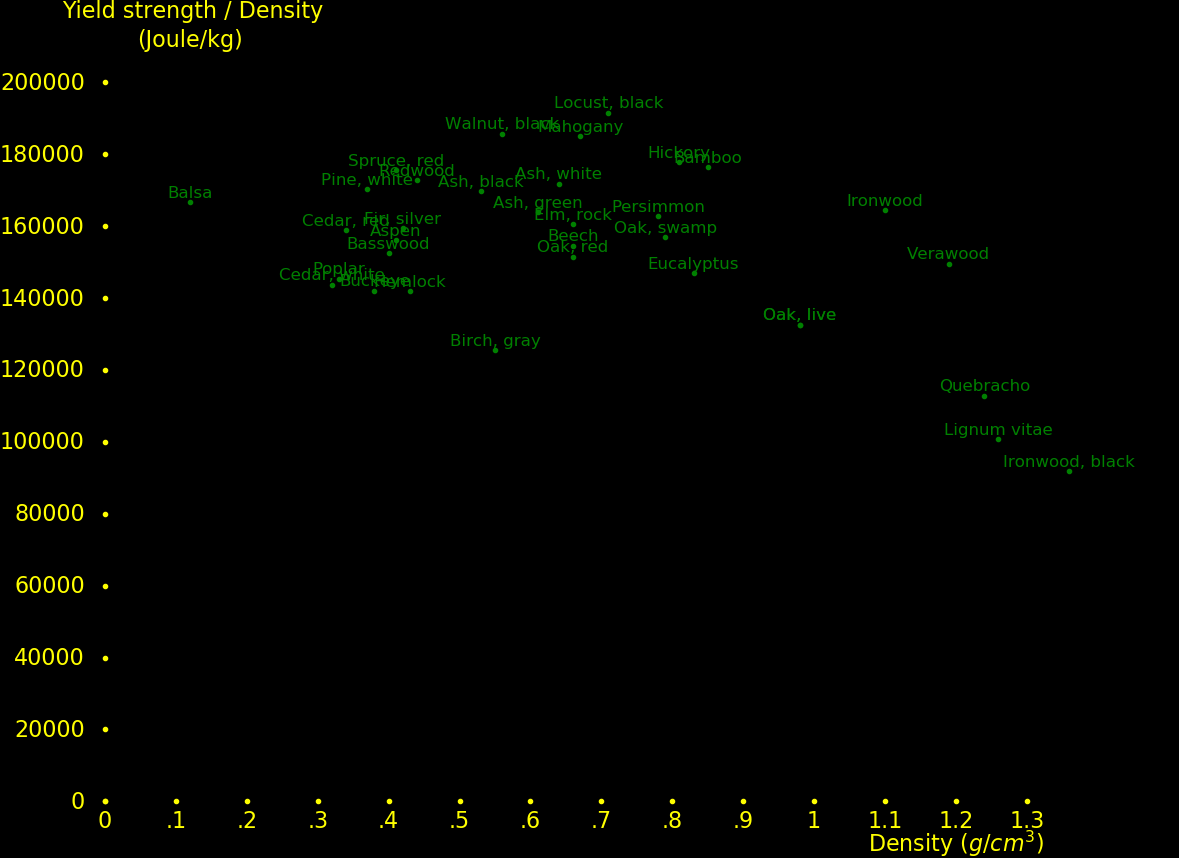 |
|---|
 |
|---|
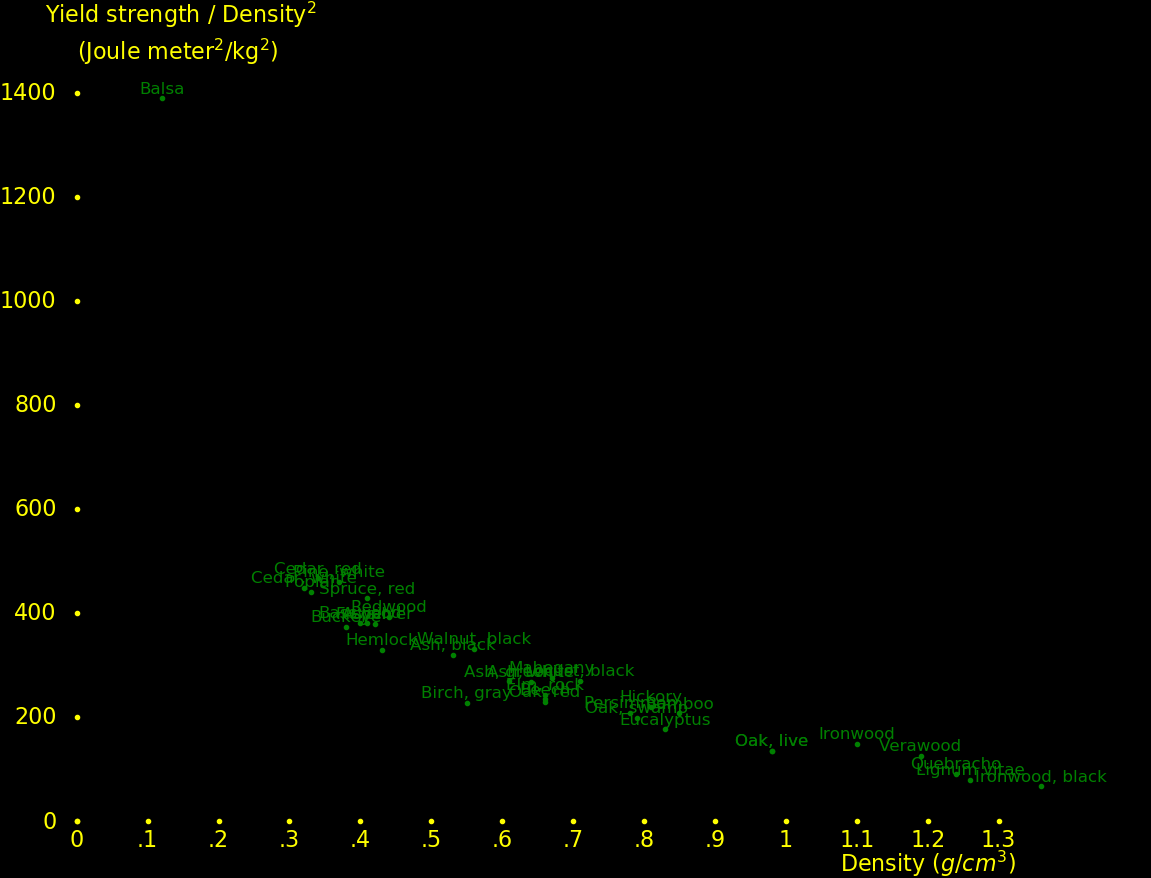 |
|---|
 |
|---|
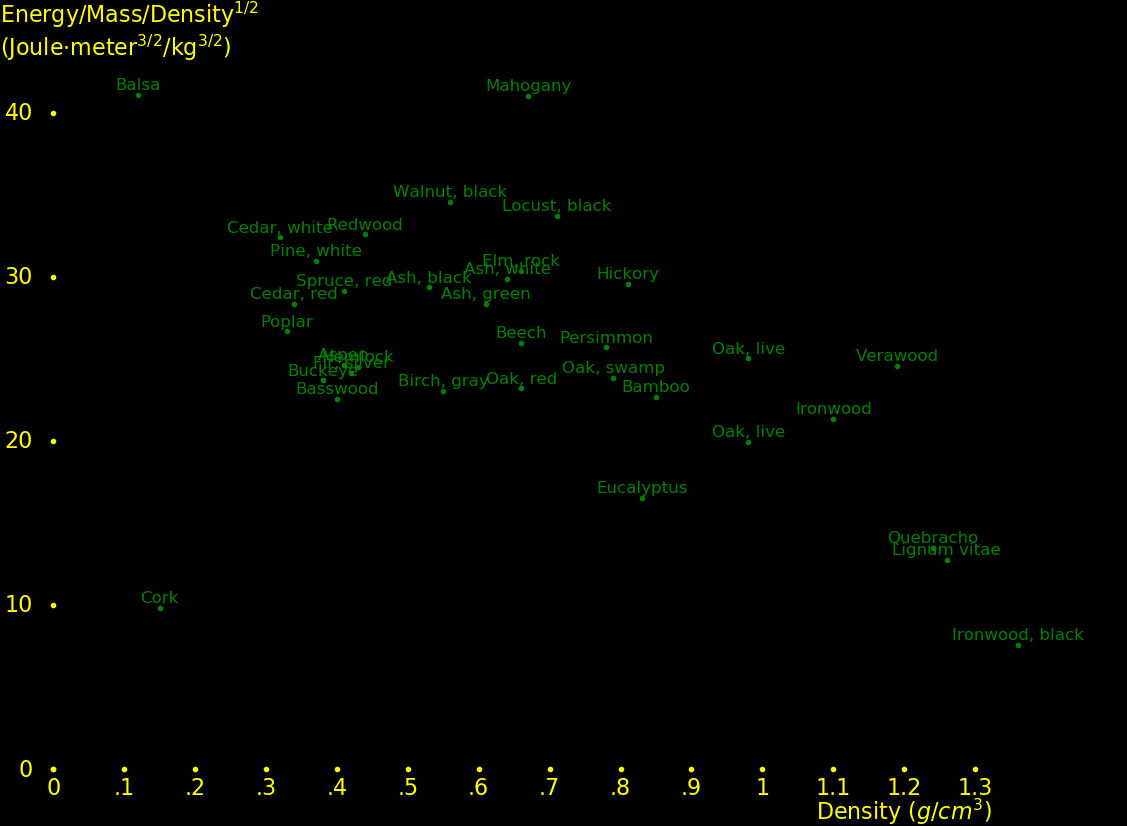 |
|---|
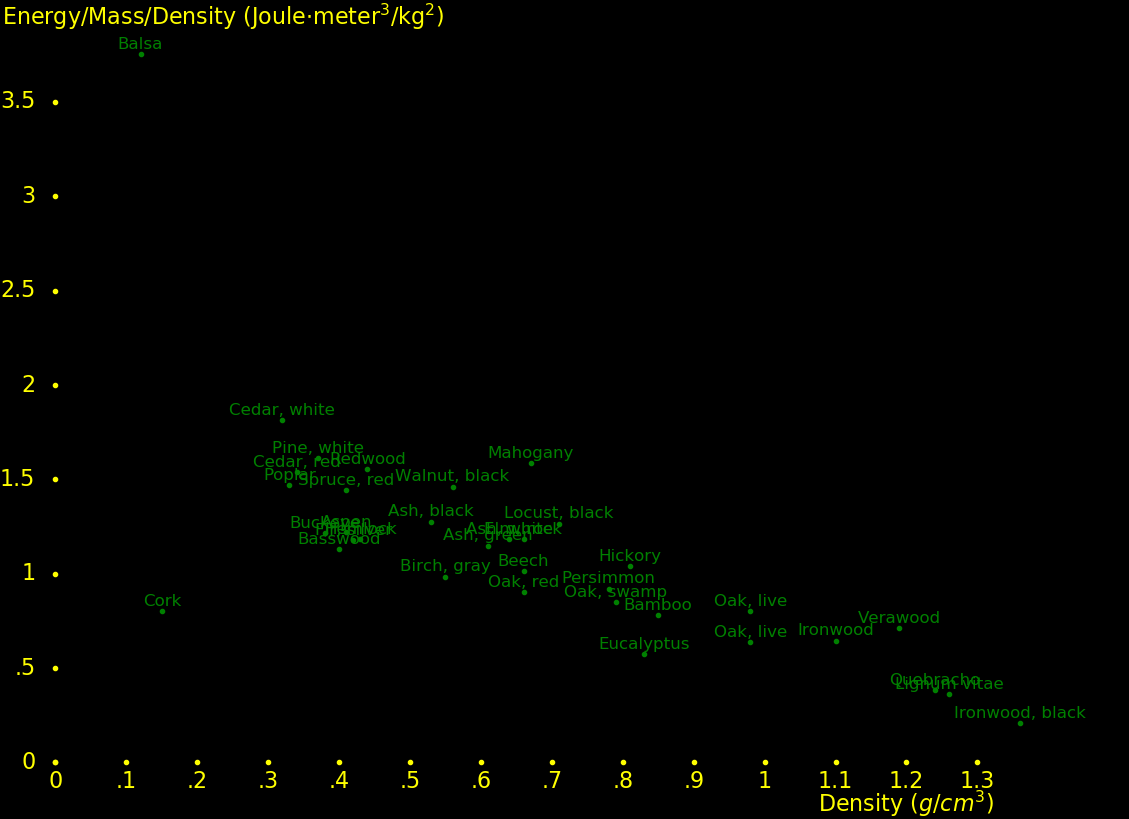 |
|---|
To compare wood to other materials,
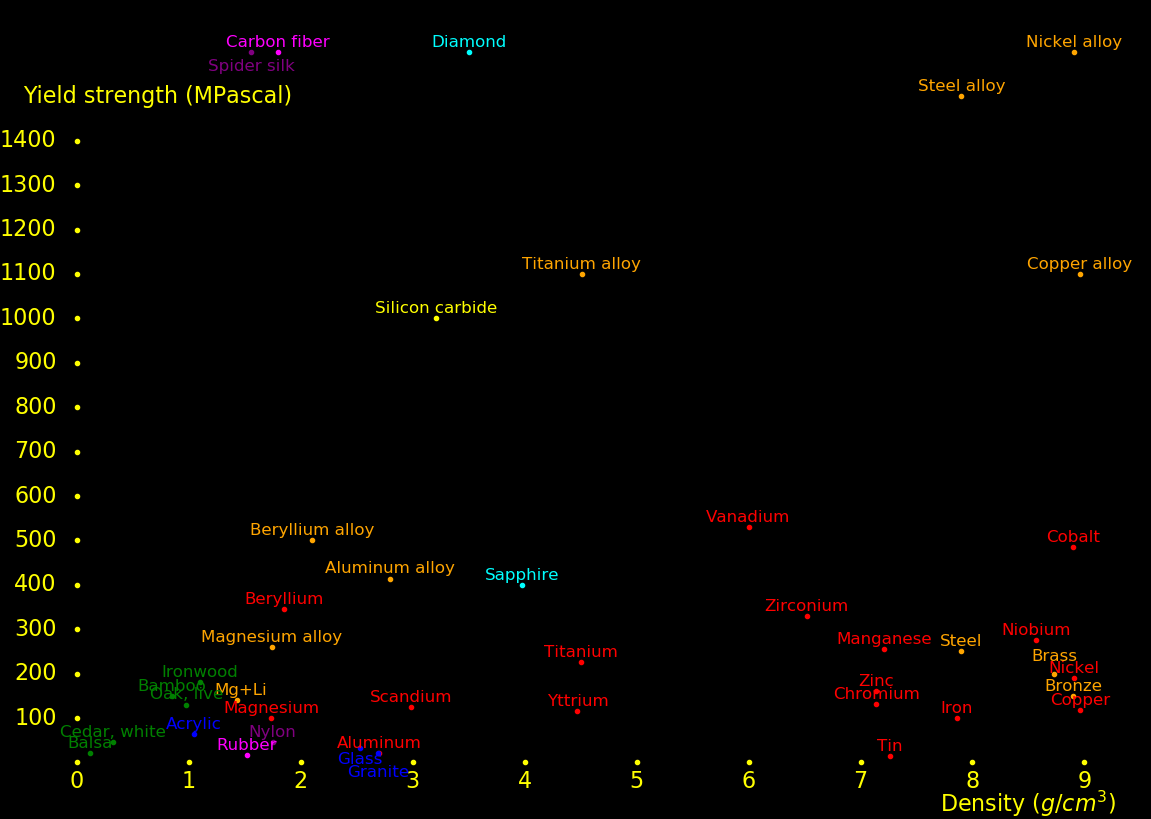 |
|---|
 |
|---|
For a vertical tree trunk, "longitudinal" is the vertical direction. "Radial" is the direction from the tree center axis, going outward in the horizonal plane. "Tangential" is the direction along a tree ring, in the horizontal plane.
Poisson numbers:
Longitudinal Radial Tangential
Wood, low density .4 .25 .2
Wood, high density .43 .35 .18
The strongest direction is the longitudinal direction and the weakest direction is the radial direction. For a beam under bending stress, you should align the longitudinal grain with the long axis of the beam, and you should align the tangential grain with the direction of the force.
 |
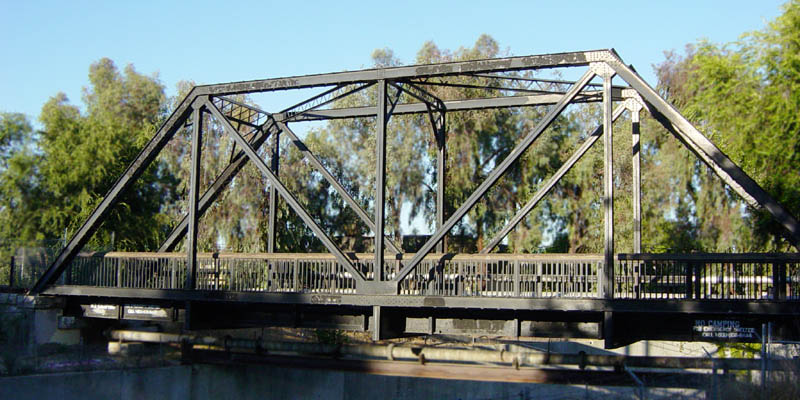 |
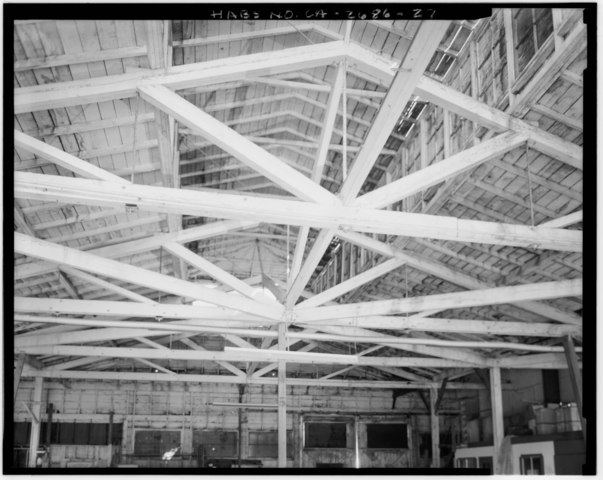 |
 |
 |
|---|---|---|---|---|
A hollow beam is weaker than a solid beam, but it has a better stength/mass ratio. This is the point of a truss. A truss consists of a set of upper and lower beams connected by struts. The struts deliver forces between the beams and they resist warp. Struts are arranged as triangles because triangles resist warp better than squares.
In a Pratt truss, diagonal beams are under tension and vertical beams are under compression.
A Howe truss is like a Pratt truss except that the diagonals slant the opposite way. In a Howe truss, diagonal beams are under compression and vertical beams are under tension.
Beams under compression should be wider than beams under tension. Compression is harder than tension.
Bridges from centuries ago tended to use wood for compression elements and steel rods for tension elements.
Triangles are stronger than squares. A structure needs triangles to resist warping.
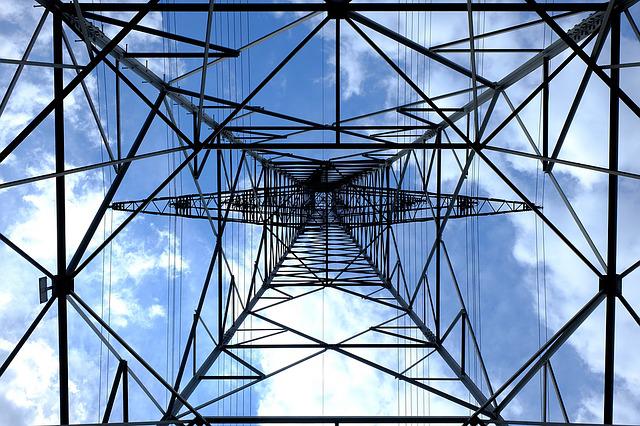 |
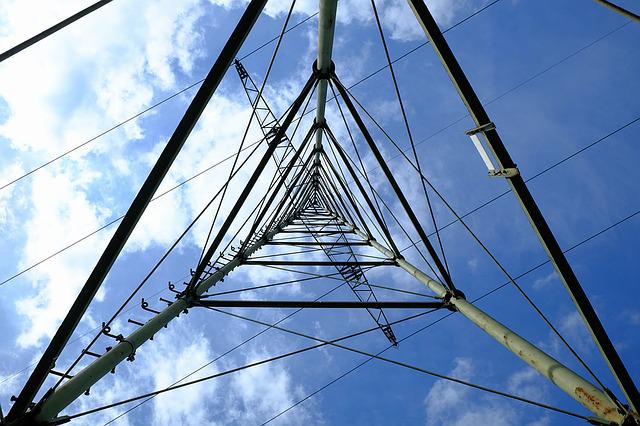 |
 |
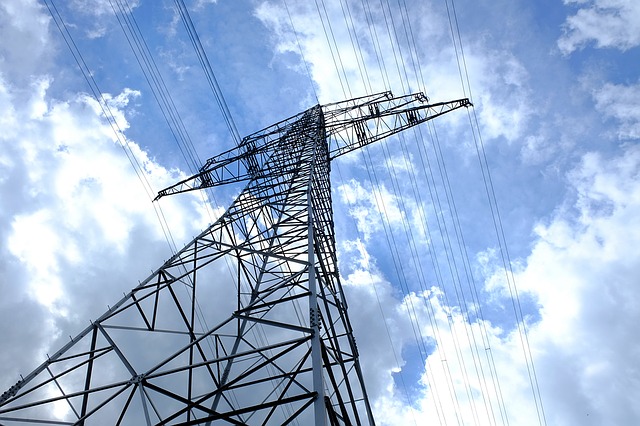 |
|---|---|---|---|
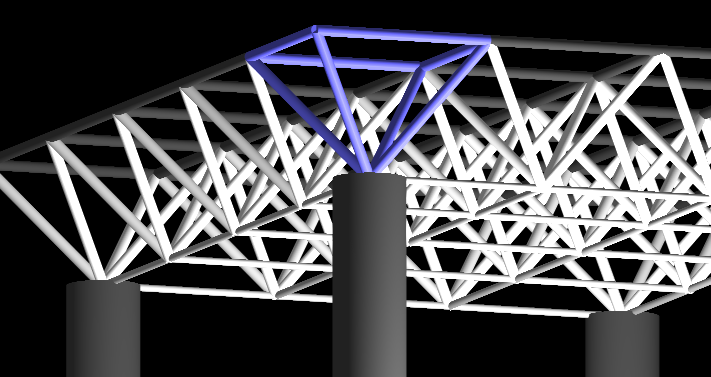 |
 |
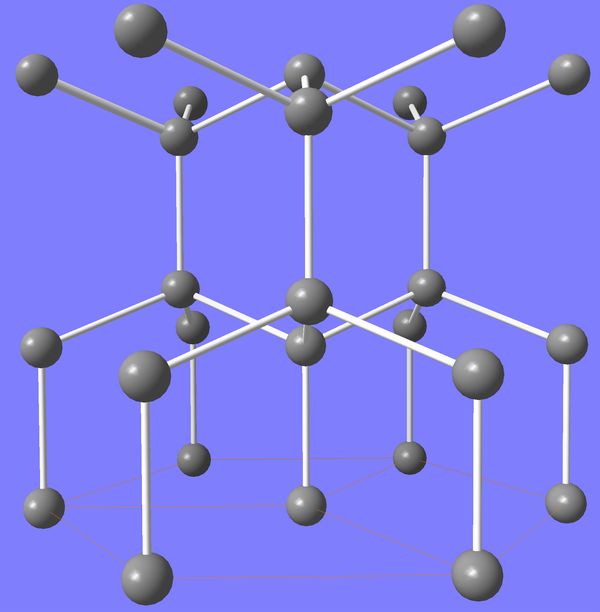 |
|---|---|---|
Tension is easy. If you can use pure tension, do it.
 |
 |
 |
|---|---|---|
 |
 |
|---|---|
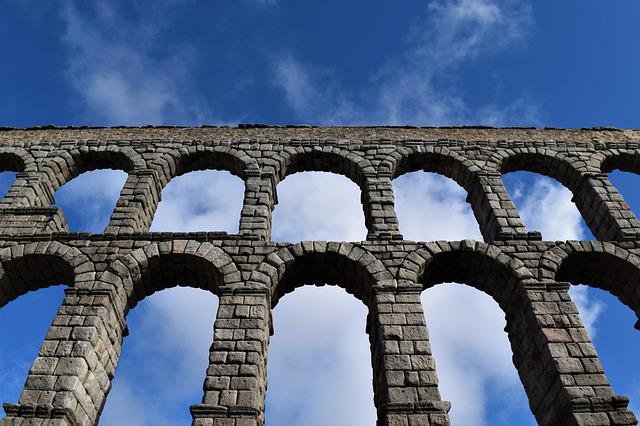 |
 |
|
|---|---|---|
A cable hangs as a catenary, and the ideal form for an arch is a catenary.
A hanging catenary transforms the load into pure tension.
An arch transforms the load into pure compression.
For a suspension bridge supporting a road, if the cable is heavier than the road, then the cable hangs as a catenary. If the road is heavier than the cable, the cable hangs as a parabola.
If you want height, use a concave catenary. If you want volume, use a convex catenary.
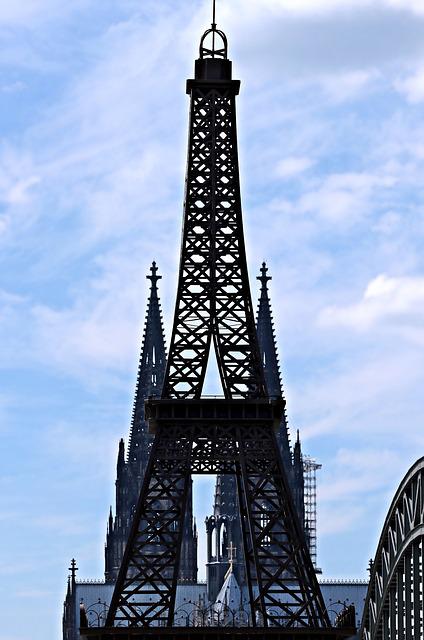 |
 |
|---|---|
 |
 |
.jpg) |
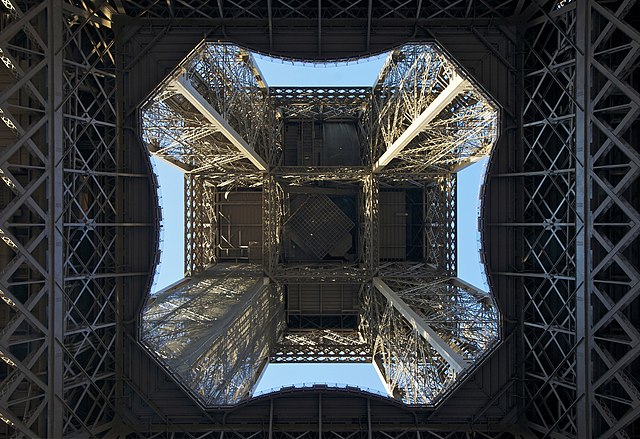 |
|---|---|---|---|
The arch can go above or below.
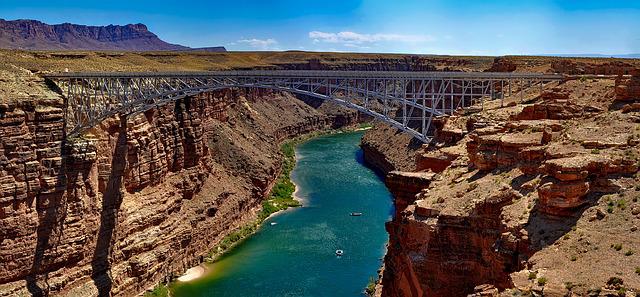 |
 |
|---|---|
You can combine an arch and a truss.
 |
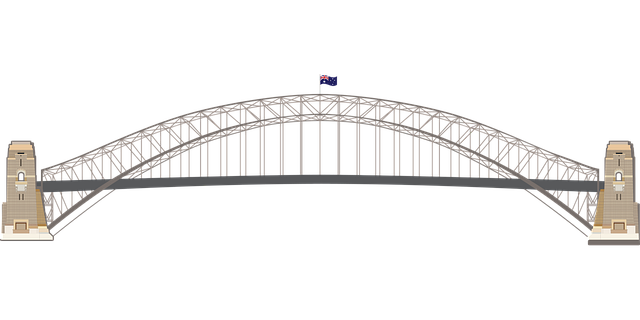 |
 |
 |
 |
|---|---|---|---|---|
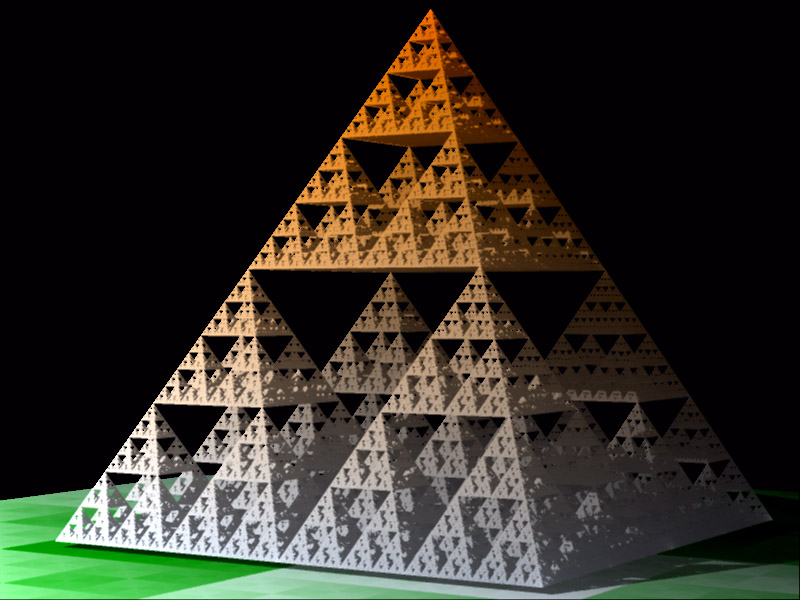 |
|---|
 |
 |
 |
 |
|---|---|---|---|
 |
 |
|---|---|
Concrete and ceramics typically have much higher compressive strengths than tensile strengths. Concrete is typically mixed with steel bars to improve tensile strength.
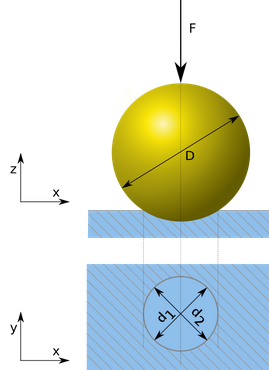 |
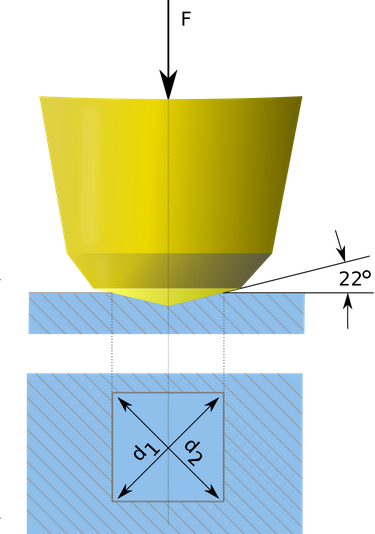 |
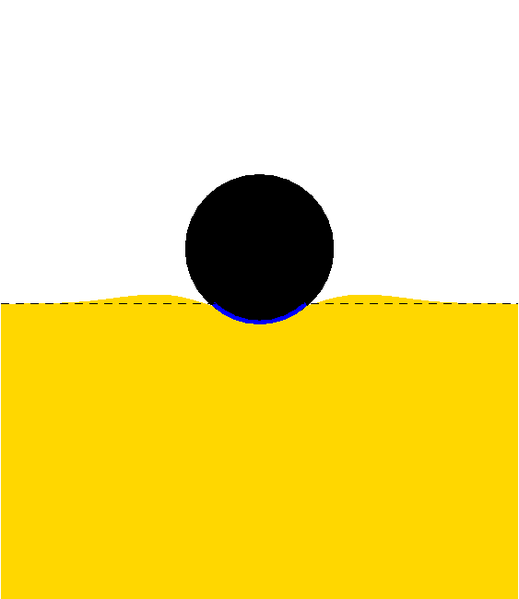 |
 |
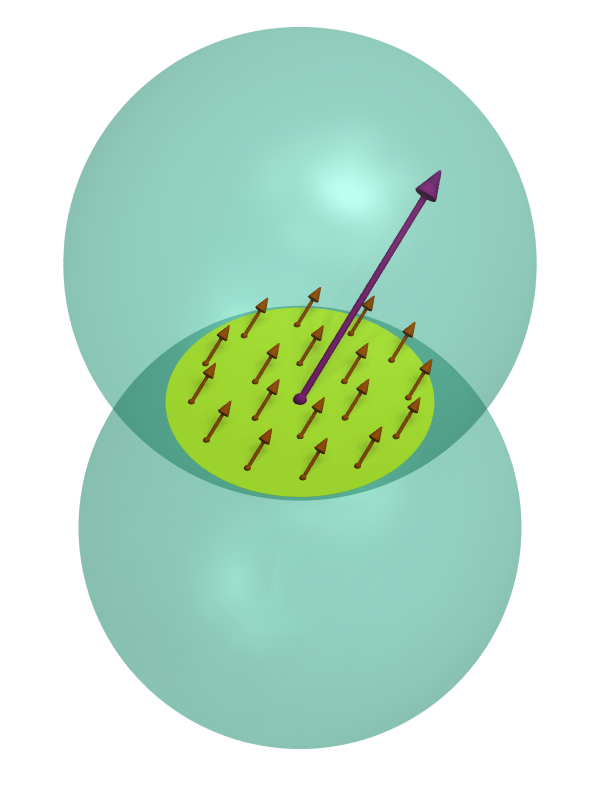 |
|---|---|---|---|---|
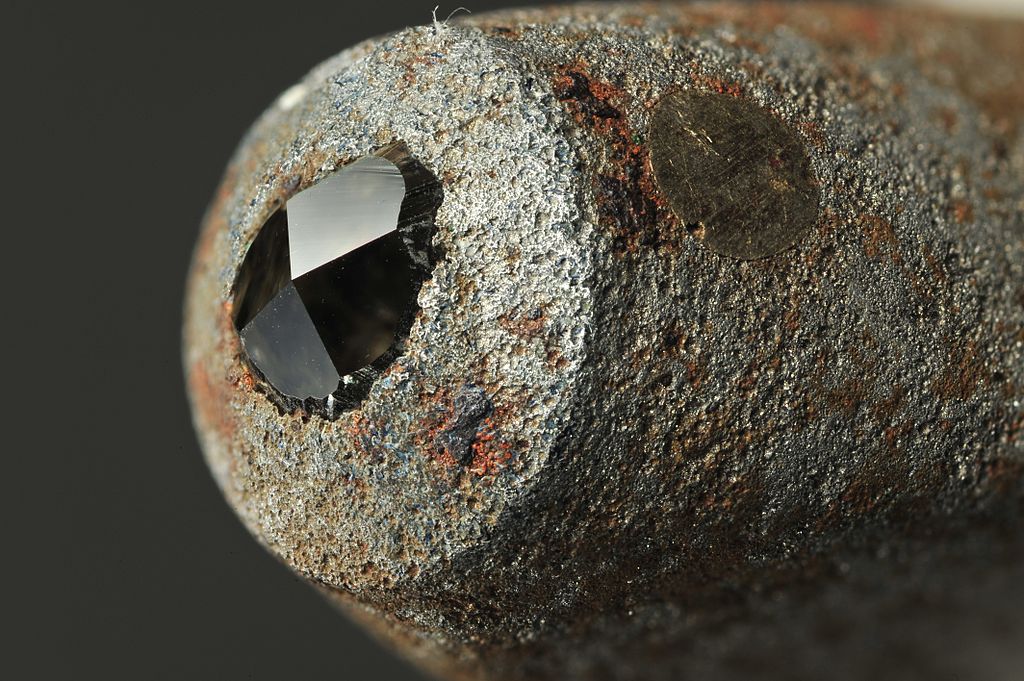 |
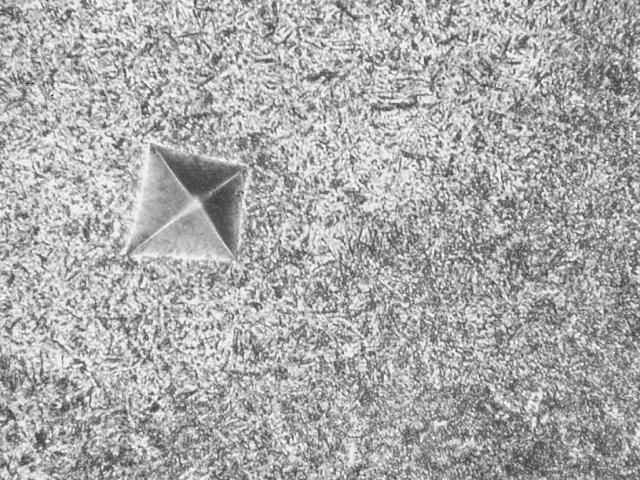 |
.png) |
|---|---|---|
Brinell = A measure of a material's resistance to dents, measured in Pascals Mohs = A dimensionless measure of a material's resistance to dentsThe Mohs scale of mineral hardness reflect's a material's ability to resist scratching. If two materials are scraped together then the material with the lower Mohs value will be scratched more. Diamond has the largest Mohs value of any material.
Mohs
Diamond 10
RhB2 9.5
Silicon carbide 9.5
Corundum 9
Tungsten carbide 9
Chromium 8.5
Emerald 8
Topaz 8
Tungsten 8
Hardened steel 8
Quartz 7
Osmium 7
Rhenium 7
Vanadium 7
If a material has a large Brinell hardness then it has a large Mohs hardness. The reverse is not necessarily true. Materials exist with a large Mohs hardness and a small Brinell hardness.
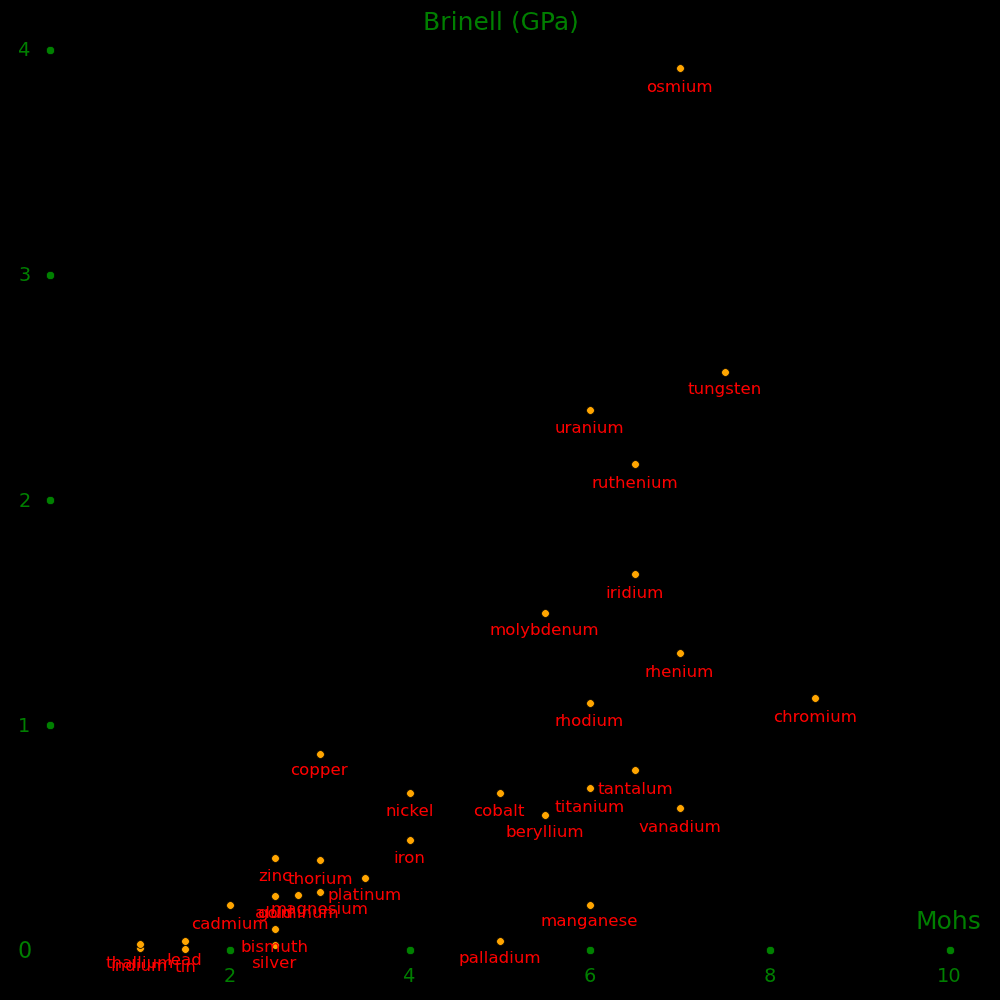 |
|---|
The Brinell hardness is related to the tensile modulus and tensile strength.
 |
|---|
For tension, what usually matters is tensile strength divided by density. Materials with a high value include:
Young's Yield Tensile Tensile Strength/ Tough/ Density Poisson
modulus stress strengh strain density density
GPa Gpa GPa MNewton/kg kJ/kg g/cm^3
Graphene 1050 160 .152 160 12190 1.0
Nanotube 1000 63 .063 48 1480 1.34 Carbon nanotube
Colossal tube 1000 7 .116 Carbon nanotube with large radius
Zylon 270 5.8 .010 3.7 1.56 .5
Kevlar 155 3.76 .023 2.6 57 1.44 .5
Vectran UM 103 3.0 .029 1.4 .5
Vectran HT 75 3.2 .043 1.4 .5
Vectran NT 52 1.1 .021 1.4 .5
Diamond 1220 1.6 2.8 .0023 .80 .92 3.5
Sapphire 345 .4 1.9 .0055 .48 1.315 3.98
Carbon fiber 181 1.6 .0088 .91 4.04 1.75
Beryllium carbide 303 .517 1.9 .12
Rubber, butyl .007 .020 2.86 .92
Balsa 3.7 .020 .12
Pine, white 9 .063 .37
Bamboo 20 .15 .85
Ironwood 21 .181 .181 .0086 .65 1.1
Beryllium 287 .345 .448 .0016 .189 1.85
Magnesium + Li 45 .14 1.43
Magnesium + Y2O3 45 .31 1.76
Magnesium alloy 45 .100 .232 .0052 .344 1.74
Aluminum + Be 70 .41 2.27
Aluminum alloy 70 .414 .483 .0069 .595 2.8
Titanium 120 .225 .37 .0031 .054 4.51
Steel + Co, Ni 220 2.07 .0094 8.6
Moly + W, Hf 1.8 14.3
Aluminum amorphous 70 1.97 2.67 LiMgAlScTi
Titanium amorphous 120 1.20 4.6 Titanium + AlVCrMo
Chromium amorphous 2.26 6.5 AlCrFeCoNiTi
Molybden amorphous 1.22 12.3 VNbMoTaW
Molybdenum + W, Hf 1.8 14.3
 |
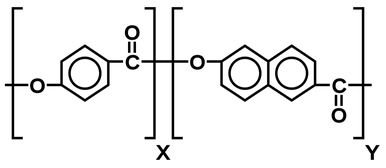 |
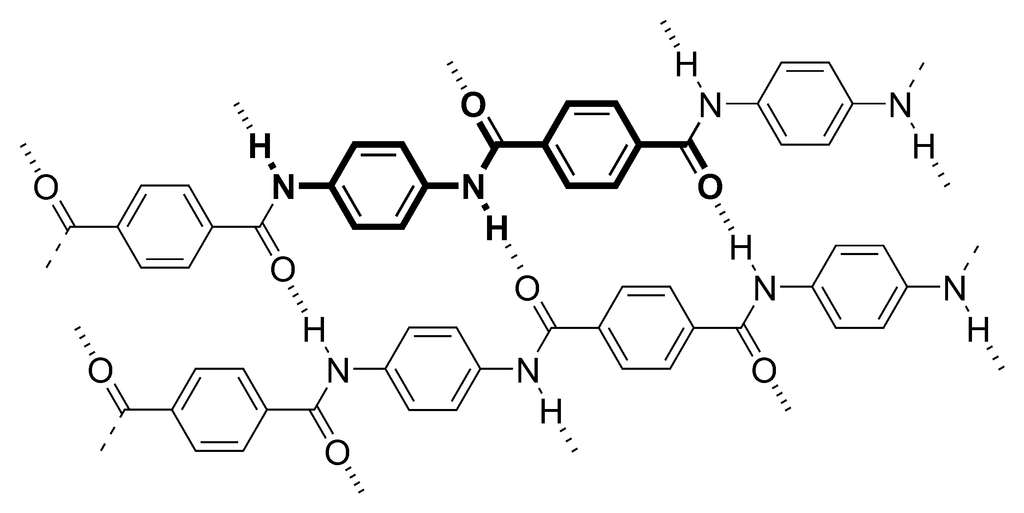 |
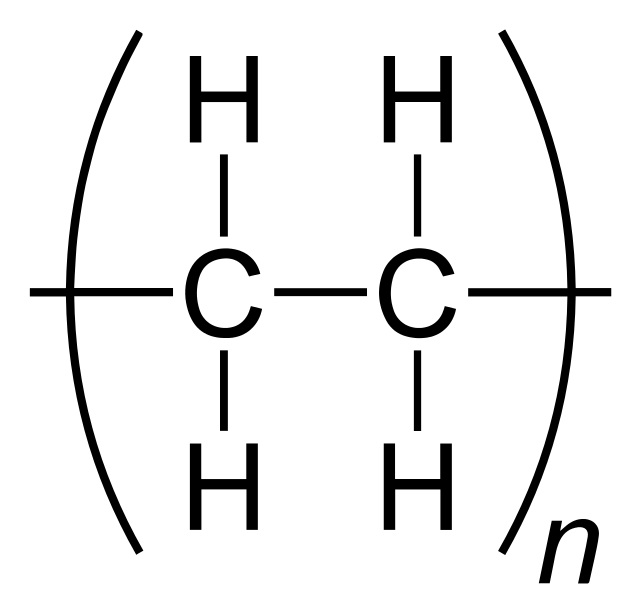 |
|---|---|---|---|
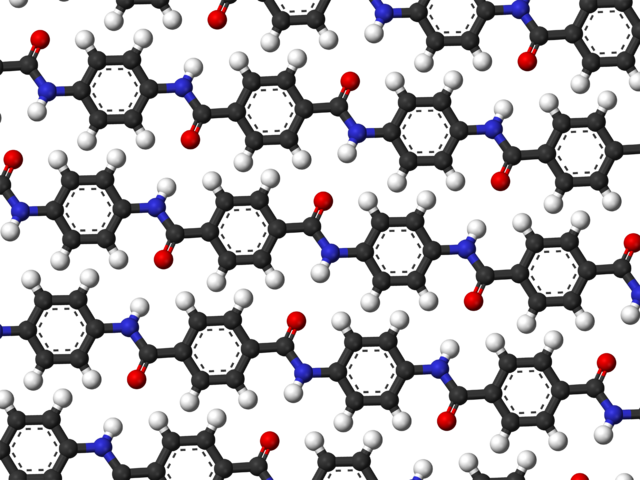 |
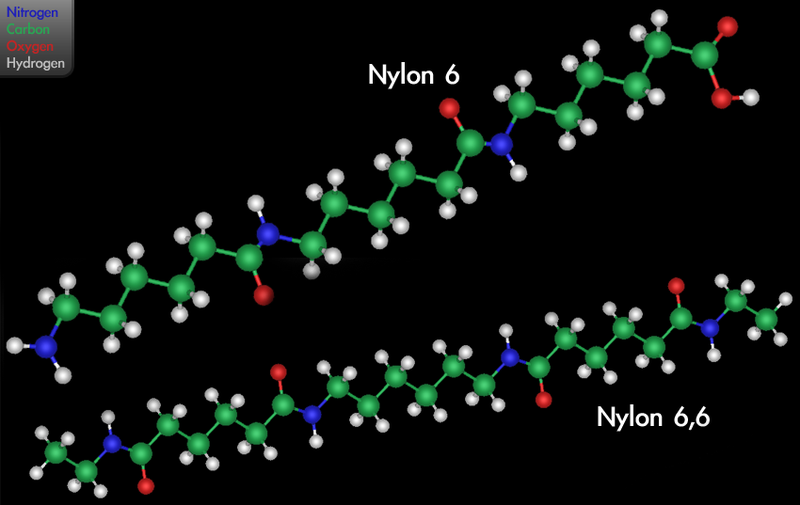 |
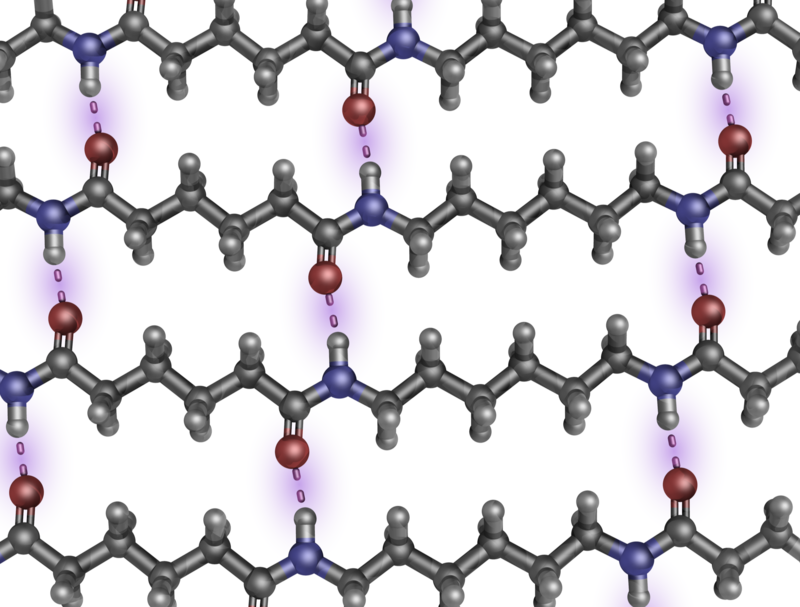 |
|---|---|---|
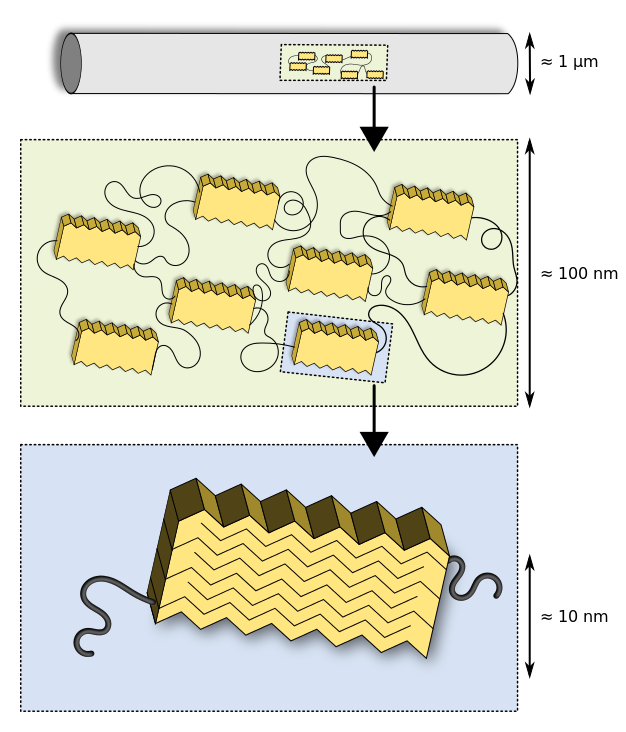 |
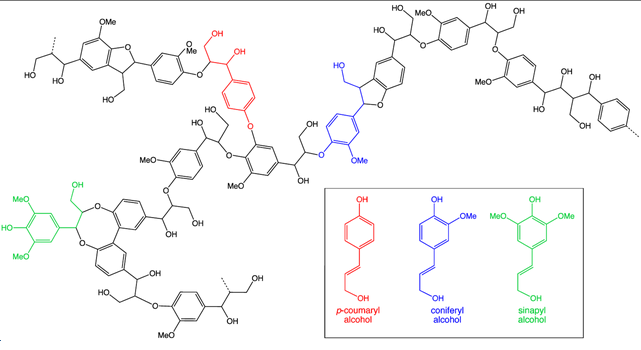 |
|---|---|
Lignin comprises 30 percent of wood and it is the principal structural element.
Year Young Tensile Strain Density Common
(GPa) strength (g/cm3) name
(GPa)
Gut Ancient .2
Cotton Ancient .1 1.5
Hemp Ancient 10 .3 .023
Duct tape .015
Gorilla tape .030
Polyamide 1939 5 1.0 .2 1.14 Nylon, Perlon
Polyethylene 1939 117 1.4 Dacron
Polyester 1941 15 1.0 .067 1.38
Polypropylene 1957 .91
Carbon fiber 1968 3.0 1.75
Aramid 1973 135 3.0 .022 1.43 Kevlar
HMPE 1975 100 2.4 .024 .97 Dyneema, Spectra
PBO 1985 280 5.8 .021 1.52 Zylon
LCAP 1990 65 3.8 .058 1.4 Vectran
Vectran HT 75 3.2 .043 1.41 Vectran
Vectran NT 52 1.1 .021 1.41 Vectran
Vectran UM 103 3.0 .029 1.41 Vectran
Nanorope ~1000 3.6 .0036 1.3
Nanotube 1000 63 .063 1.34
Graphene 1050 160 .152 1.0
Strain = Strength / Young
Carbon fiber is not useful as a rope.
A string ideally has both large strength and large strain, which favors Vectran.
Suppose Batman has a rope made out of Zylon, the strongest known polymer.
Batman mass = M = 100 kg (includes suit and gear) Gravity constant = g = 10 meters/second2 Batman weight = F = 1000 Newtons Zylon density = D = 1520 kg/meter3 Zylon tensile strength = Pz = 5.8⋅109 Newtons/meter2 Rope load = P = 1.0⋅109 Newtons/meter2 (safety margin) Rope length = L 100 meters Rope cross section = A = F/P =1.0⋅10-6 meters2 Rope radius = R =(A/π)½= .56 mm Rope mass = Mr = DAL = .15 kg
Density Tensile Young
strength
(g/cm^3) (Gpa) (Gpa)
Balsa .12 .020 3.7
Corkwood .21
Cedar .32 .046 5.7 Northern white
Poplar .33 .048 7.2 Balsam
Cedar .34 .054 8.2 Western red
Pine .37 .063 9.0 Eastern white
Buckeye .38 .054 8.3 Yellow
Butternut .40 .057 8.3
Basswood .40 .061 10.3
Spruce, red .41 .072 10.7
Aspen .41 .064 10.0
Fir, silver .42 .067 10.8
Hemlock .43 .061 8.5 Eastern
Redwood .44 .076 9.6
Ash, black .53 .090 11.3
Birch, gray .55 .069 8.0
Walnut, black .56 .104 11.8
Ash, green .61 .100 11.7
Ash, white .64 .110 12.5
Oak, red .66 .100 12.7
Elm, rock .66 .106 10.9
Beech .66 .102 11.8
Birch, yellow .67 .119
Mahogany .67 .124 10.8 West Africa
Locust .71 .136 14.5 Black or Yellow
Persimmon .78 .127 14.4
Oak, swamp .79 .124 14.5 Swamp white
Gum, blue .80 .118 16.8
Hickory .81 .144 15.2 Shagbark
Eucalyptus .83 .122 18.8
Bamboo .85 .169 20.0
Oak, live .98 .130 13.8
Ironwood 1.1 .181 21.0
Lignum Vitae 1.26 .127 14.1
Data #1
Data #2
Density Tensile Young
strength
(g/cm^3) (Gpa) (Gpa)
Polyamide .11 4.5
Polyimide .085 2.5
Acrylic .07 3.2
Polycarbonate .07 2.6
Acetyl copoly .06 2.7
ABS .04 2.3
Polypropylene .91 .04 1.9
Polystyrene .04 3.0
Polyethylene .95 .015 .8
 |
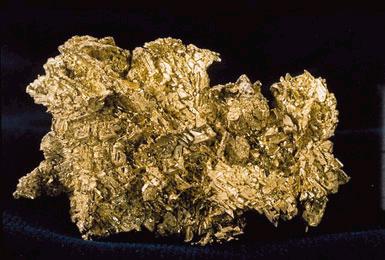 |
|
|---|---|---|
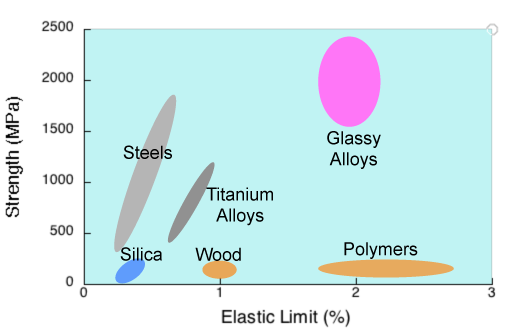 |
 |
|
|---|---|---|
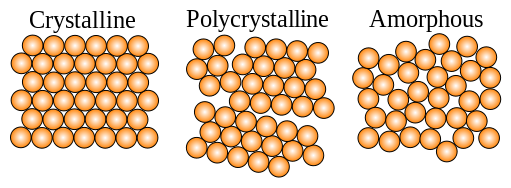 |
|---|
New alloys have been discovered that are stronger and ligher than diamond. These alloys have an amorphous structure rather than the crystalline structure of conventional alloys. A crystaline alloy tends to be weak at the boundaries between crystals and this limits its strength. Amorphous alloys don't have these weaknesses and can be stronger.
Pure metals and alloys consisting of 2 or 3 different metals tend to be crystaline while alloys with 5 or more metals tend to be amorphous. The new superalloys are mixes of at least 5 different metals.
A material's strength is characterized by the "yield strength" and the quality is the ratio of the yield strength to the density. This is often referred to as the "strength to weight ratio".
Yield strength = Y (Pascals) Density = D (kg/meter3) Quality = Q = Y/D (Joules/kg)The strongest allyos are:
Yield strength Density Quality
(GPa) (g/cm3) (MJoule/kg)
Magnesium + Lithium .14 1.43 98
Magnesium + Y2O3 .31 1.76 177
Aluminum + Beryllium .41 2.27 181
Amorphous LiMgAlScTi 1.97 2.67 738
Diamond 1.6 3.5 457
Titanium + AlVCrMo 1.3 4.6 261
Amorphous AlCrFeCoNiTi 2.26 6.5 377
Steel + Cobalt, Nickel 2.07 8.6 241
Amorphous VNbMoTaW 1.22 12.3 99
Molybdenum+ Tungsten, Hafnium 1.8 14.3 126
The strongest pure metals are weaker than the strongest alloys.
Yield strength Density Quality
(GPa) (g/cm3) (MJoule/kg)
Magnesium .10 1.74 57
Beryllium .34 1.85 184
Aluminum .02 2.70 7
Titanium .22 4.51 49
Chromium .14 7.15 20
Iron .10 7.87 13
Cobalt .48 8.90 54
Molybdenum .25 10.28 24
Tungsten .95 19.25 49
Beryllium + Li → Doesn't exist. The atoms don't mix Beryllium + Al → Improves strength Magnesium + Li → Weaker and lighter than pure Mg. Lightest existing alloy Magnesium + Be → Only tiny amounts of beryllium can be added to magnesium Magnesium + Carbon tubes → Improves strength, with an optimal tube fraction of 1% Aluminum + Li,Mg,Be,Sc → Stronger and lighter than aluminum Titanium + Li,Mg,Sc → Stronger and lighter than titanium Steel + Cr,Mo → Stronger and more uncorrodable than steel. "Chromoly" Copper + Be → Stronger than beryllium and is unsparkable
Melting point (Celsius)
Tungsten 3422
Rhenium 3186
Osmium 3033
Tantalum 3017
Molybdenum 2623
Niobium 2477
Iridium 2446
Ruthenium 2334
Hafnium 2233
Technetium 2157
Rhodium 1964
Vanadium 1910
Chromium 1907
Most alloys weaken with increasing temperature except for a small subset called "superalloys" that strengthen with temperature, such as Ni3Al and Co3Al. This is called the "yield strength anomaly".
Nickel alloys in jet engines have a surface temperature of 1150 Celsius and a bulk temperature of 980 Celsius. This is the limiting element for jet engine performance. Half the mass of a jet engine is superalloy.
Current engines use Nickel superalloys and Cobalt superalloys are under development that will perform even better.
Yield strength in GPa as a function of Celsius temperature.
20 600 800 900 1000 1100 1200 1400 1600 1800 1900 Celsius
VNbMoTaW 1.22 .84 .82 .75 .66 .48 .4
AlMohNbTahTiZr 2.0 1.87 1.60 1.2 .74 .7 .25
Nickel superalloy 1.05 1.20 .90 .60 .38 .15
Tungsten .95 .42 .39 .34 .31 .28 .25 .10 .08 .04
Below 1100 Celsius AlMohNbTahTiZr has the best strength-to-mass ratio and above
this VNbMoTaW has the best ratio. Both alloys supersede nickel superalloy
and both outperform tungsten, the metal with the highest melting point.
Data:
Entropy, nickel superalloy
Yield strength (GPa)
Copper .27
Brass .41 30% zinc
Bronze .30 5% tin
Phosphor bronze .69 10% tin, .25% phosphorus
Copper + beryllium 1.2 2% beryllium, .3% cobalt
Copper + nickel + zinc .48 18% nickel, 17% zinc
Copper + nickel .40 10% nickel, 1.25% iron, .4% manganese
Copper + aluminum .17 8% aluminum
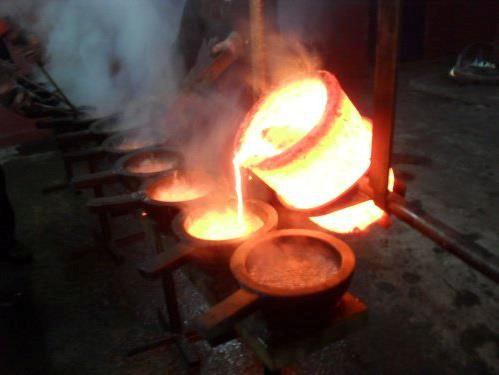 |
 |
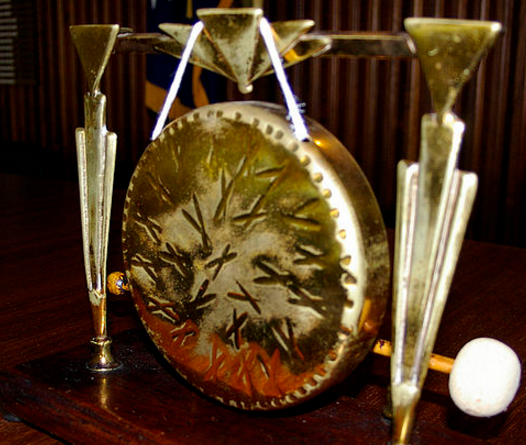 |
|
|---|---|---|---|
Bells and cymbals are made from bell bronze, 4 parts copper and 1 part tin.
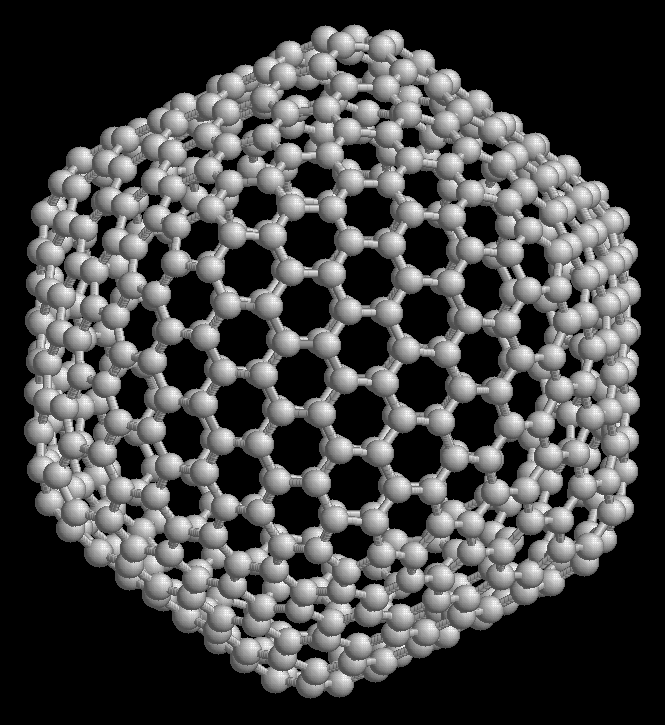 |
 |
 |
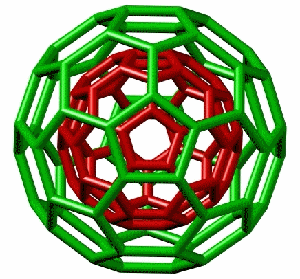 |
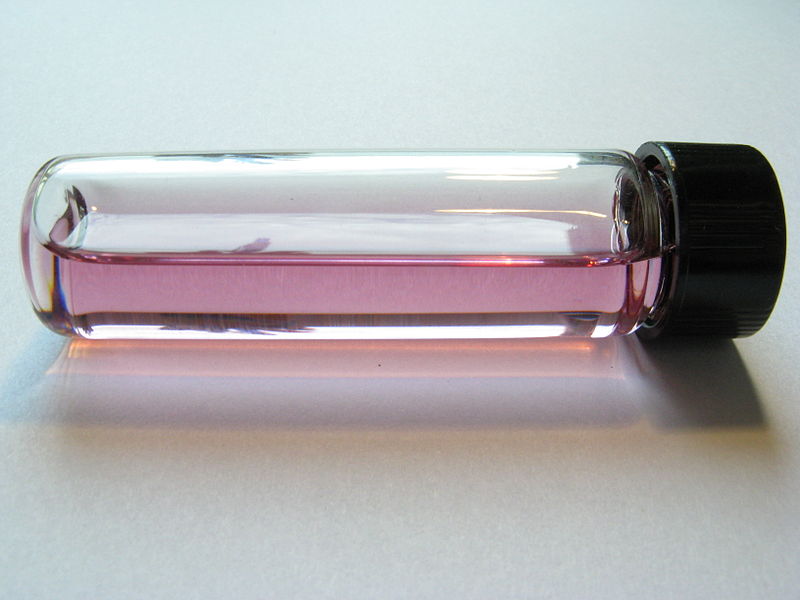 |
|---|---|---|---|---|
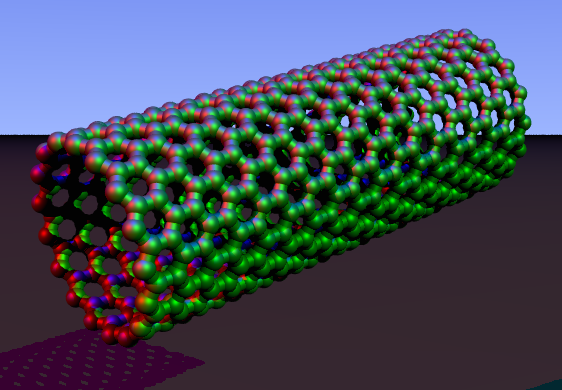 |
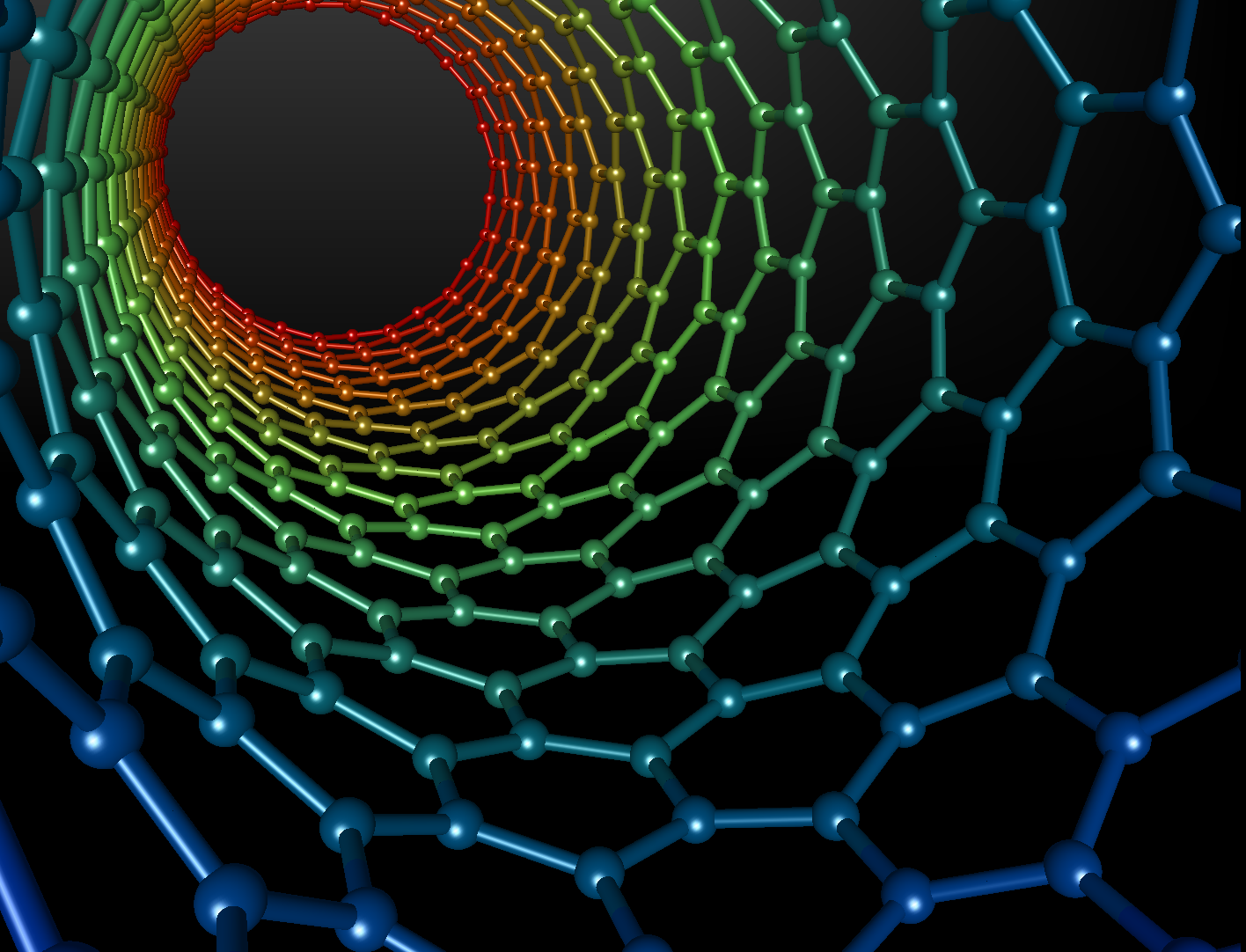 |
 |
.gif) |
|---|---|---|---|
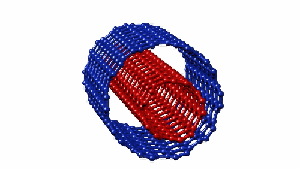 |
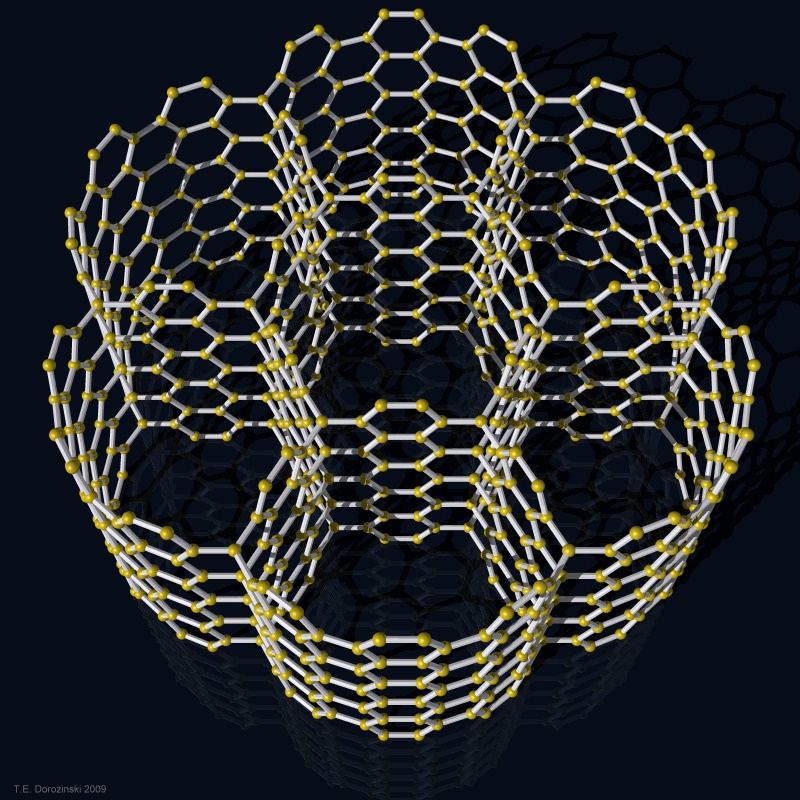 |
 |
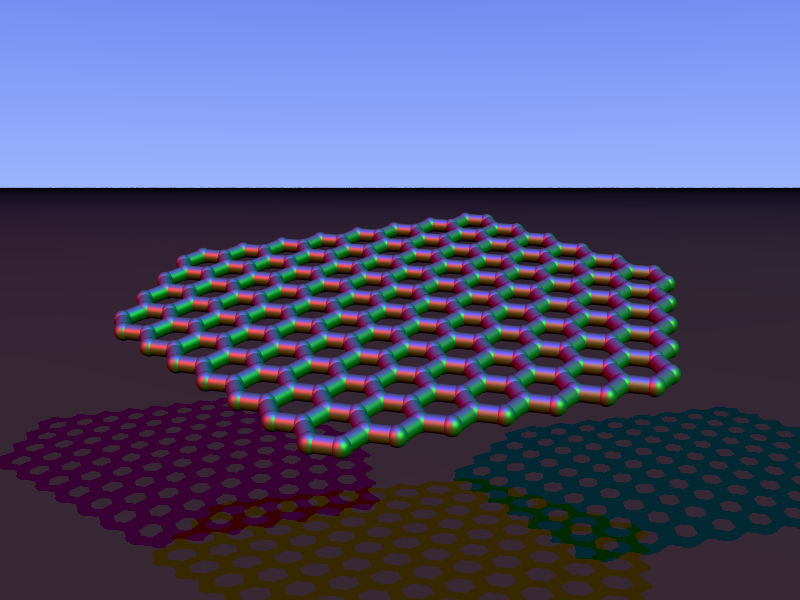 |
|---|---|---|---|
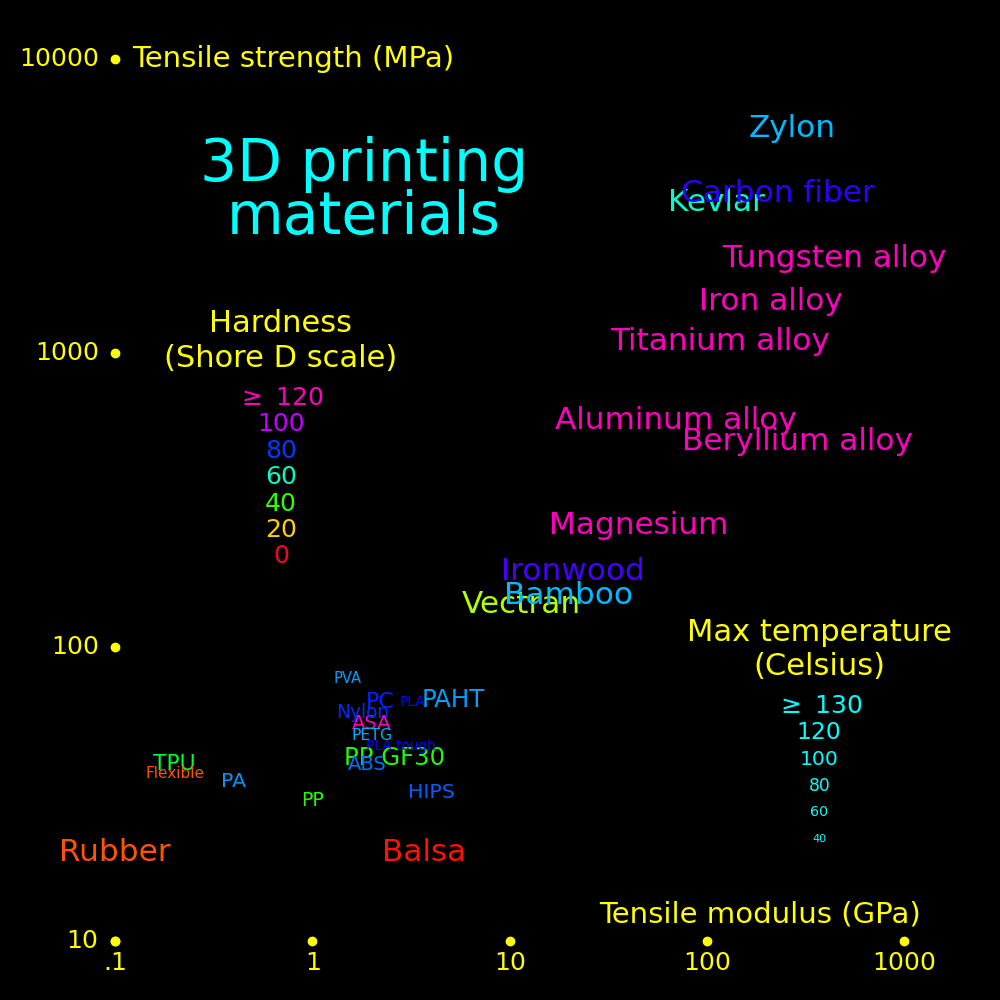 |
|---|
Young's Tensile Hardness Max temp Density Toughness Price/kg
modulus strength /density
GPa MPa Shore D Celsius g/cm3 kJoule/kg $/kg
PVA 1.5 78 72 64 1.23 1650 75
PC Polycarbonate 2.2 65 82 112 1.23 58
PLA 3.2 65 84 56 1.32
PLA Tough 2.8 46 84 56 1.32
PAHT CF15 5.2 66 72 127 1.10
Nylon 1.8 60 81 88 1.15 45
ASA 2 55 110 95 1.07 39
PETG 2.0 50 71 70 1.27 40
TPU .2 40 48 110 1.45
Carbon fiber filled 4 46 52 1.3
Flexible .2 37 10 67 1.21 50
ABS 1.9 40 76 95 1.07
HIPS 4 32 77 100 1.04 28
PP Polypropylene 1 30 42 90 .9 90
PP GF30 2.6 42 42 126 .9
Metal filled 4 25 52 3 85
PA .4 35 73 100 1.00
Diamond 1220 1600 3.5 300
Graphene 1050 160000 1.0
Kevlar 112 3620 170 1.44 40600 Aramid
Zylon 270 5800 1.56 PBO, Polyoxazole
Vectran 11.5 140 1.40
Rubber, butyl .004 17 1.25 28900
Carbon fiber 228 3500 88 1.8 16000
Balsa 3.7 20 4.9 .2
Bamboo 20 150 70 .85
Ironwood 21 181 90 1.1
Beryllium alloy 287 500 2.1
Magnesium alloy 45 260 1.74
Aluminum alloy 70 590 2.7
Titanium alloy 116 1100 4.51 1160
Iron alloy 211 1500 7.9
Tungsten alloy 441 2100 19.25
.png) |
 |
 |
 |
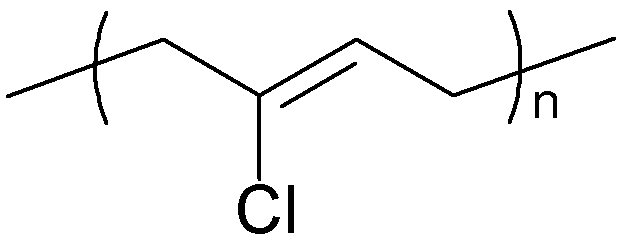 |
|---|---|---|---|---|
 |
 |
 |
|---|---|---|
Gold and silver were known since antiquity because they occur naturally in pure form.
Gold mining started in 6000 BCE and silver smelting started in 4000 BCE.
Iron can occasionally be found as iron meteorites.
Copper was discovered around 7500 BCE by smelting copper minerals in a wood fire.
Around 3200 BCE it was found that copper is strenghened by tin, and this is bronze.
Around 2000 BCE it was found that copper is also strengthed by zinc, and this is brass.
The earliest metals were smeltable with a wood fire and they consist of copper,
lead, silver, tin, zinc, and mercury. They come from the following minerals:
The next metal to be discovered was iron (c. 1200 BC), which requires a bellows-fed coal
fire to smelt.
No new metals were discovered until cobalt in 1735.
Once cobalt was discovered, it was realized that
new minerals may have new metals, and the race was on to find new minerals. This gave
nickel, chromium, manganese, molybdenum, and tungsten.
Chromium is lighter and stronger than steel and was discovered in 1797. It
satisfies the properties of mithril from "Lord of the Rings" and Valyrian steel
from "Game of Thrones".
There's no reason chromium couldn't have
been discovered earlier.
Coal smelting can't produce the metals lighter than chromium. These need
electrolysis. The battery was invented in 1799, enabling electrolysis, and
the lighter metals were discovered shortly after. These include aluminum, magnesium, titanium,
and beryllium. Once you have
Carbon fiber eclipses metals. The present age could be called the carbon age. The carbon age became
mature in 1987 when Jimmy Connors switched from a wood to a carbon racket.
The plot shows the strength of materials.
Wood rivals alloys for strength.
Gold was the densest element known until the discovery of platinun in 1735. It
was useful as an uncounterfeitable currency until the discovery of tungsten in
1783, which has the same density as gold. Today, we could use iridium,
platinum, or rhenium as an uncounterfeitable currency.
Prior to 1800, metals were obtained by smelting minerals, and the known metals
were gold, silver, copper, iron, tin, zinc, mercury, cobalt, manganese,
chromium, molybdenum, and tungsten. Elements to the left of chromium titanium
and scandium cant's be obtained by smelting, and neither can aluminum,
magnesium, and beryllium. They require electrolysis, which was enabled by
Volta's invention of the battery in 1799.
Prior to 1800, few elements were known in pure form. Electrolyis enabled the
isolation of most of the rest of the elements. The periodic table then became
obvious and was discovered by Mendeleev 1871. The battery launched modern
chemistry, and the battery could potentially have been invented much earlier.
Electrolysis enabled the isolation of sodium and potassium in 1807, and these were used
to smelt metals that can't be smelted with carbon.
For a metal, the stiffness is characterized by the "shear strength" and the
sword worthiness is characterized by the shear strength over the density
(the "strength to weight ratio"). For example for iron,
This plot includes all metals with a strength/density at least as large as lead,
plus mercury.
Beryllium is beyond the top of the plot.
In prehistoric times iron meteorites were the only source of metallic iron.
They consist of 90% iron and 10% nickel.
Most metals are in oxidized form. The only metals that can be found in
pure form are gold, silver, copper, platinum, palladium, osmium, and iridium.
Smelting is a process for removing the oxygen to produce pure metal.
The ore is heated in a coal furnace and the carbon seizes the oxygen from
the metal. For copper,
For iron, the oxidation state is reduced in 3 stages until the
pure iron is left behind.
The following table gives the temperature required to smelt each element with
carbon.
The farther to the right on the periodic table, the lower the smelting
temperature, a consequence of "electronegativity".
The battery was invented in 1800, launching the field of electrochemistry
and enabling the the isolation of non-carbon-smeltable elements.
Davy used electrolysis in 1807 to isolate sodium and potassium and then he used
these metals to smelt other metals. To smelt beryllium with potassium,
BeO + 2 K ↔ Be + K2O.
Titanium can't be carbon smelted because it forms the carbide Ti3C.
For an expanded discussion of smelting physics, see jaymaron.com/metallurgy.html.
Thermite is smelting with aluminum. For example, to smelt iron with aluminum,
The following table shows reactions that change the oxidation state of a metal.
"M" stands for an arbitrary metal and the magnitudes are scaled to one mole of
O2. The last two columns give the oxidation state of the metal on
the left and right side of the reaction. An oxidation state of "0" is the pure
metal and "M2O" has an oxidation state of "1".
These elements are not necessarily on the Science Olympiad list.
We list minerals by element, with the most abundant mineral for each element listed first.
Corundum is a crystalline form of aluminium oxide (Al2O3). It is transparent in
its pure form and can have different colors when metal impurities are
present.
The critical electric field for electric breakdown for the following materials is:
Relative permittivity is the factor by which the electric field between
charges is decreased relative to vacuum. Relative permittivity is dimensionless.
Large permittivity is desirable for capacitors.
A ferromagnetic material amplifies a magnetic field by a factor called the "relative
permeability".
Resistivity in 10^-9 Ohm Meters
All superconductors are described by the BCS theory unless stated otherwise.
Titan has a temperature of 94 Kelvin, allowing for superconducting equipment.
The temperature of Mars is too high at 210 Kelvin.
For a system in thermodynamic equilibrium each degree of freedom has
a mean energy of ½ k T. This is the definition of temperature.
The sound speed is proportional to the thermal speed of gas molecules. The
thermal speed of a gas molecule is defined in terms of the mean energy per
molecule.
For air, γ = 7/5 and
We can change the sound speed by using a gas with a different value of M.
In a gas, some of the energy is in motion of the molecule and some is in
rotations and vibrations. This determines the adiabatic constant.
The fact that Newton's calculation differed from the measured speed is due to
the fact that air consists of diatomic molecules (nitrogen and oxygen). This
was the first solid clue for the existence of atoms, and it also contained a
clue for quantum mechanics.
In Newton's time it was not known that changing the volume of a gas changes its
temperature, which modifies the relationship between density and pressure.
This was discovered by Charles in 1802 (Charles' law).
Carbon dioxide doesn't have a liquid state at standard temperature and pressure.
It sublimes directly from a solid to a vapor.
For an object to have an atmosphere, the thermal energy must be much less than the
escape energy.
The threshold for capturing an atmosphere appears to be around Z = 1/25, or
When an object collapses by gravity, its temperature increases such that
For an ideal gas,
The Earth's core is composed chiefly of iron. What is the temperature of an iron
atom moving at the Earth's escape speed?
We first derive the law for a 1D gas and then extend it to 3D.
Suppose a gas molecule bounces back and forth between two walls separated
by a distance L.
Time between collisions = 2 L / V
The average force on a wall is
A typical globular cluster consists of millions of stars.
If you measure the total gravitational and kinetic energy of the stars, you will
find that
Suppose a system consists of a set of objects interacting by a potential. If
the system has reached a long-term equilibrium then the above statement about
energies is true, no matter how chaotic the orbits of the objects. This is the
"Virial theorem". It also applies if additional forces are involved. For
example, the protons in the sun interact by both gravity and collisions and the
virial theorem holds.
For a gas,
For a diatomic gas there are also two rotational degrees of freedom. In this
case d=5.
In general,
The fact that Gamma=7/5 for air was a clue for the existence of both atoms,
molecules, and quantum mechanics.
For dark energy,
As a substance expands it does work on its surroundings according to its pressure.
Dark matter consists of pointlike particles but they rarely interact with other
particles and so they exert no pressure.
Valyrian steel is a fictional substance from "Game of Thrones" that is
stronger, lighter, and harder than steel. The only elements that qualify are
beryllium, titanium, and vanadium, none of which were known in Earth history
until the 18th century. Valyrian steel could be of these elements,
an alloy, or a magical substance. According to George Martin, magic is
involved.
The fact that it is less dense than steel means that it can't be a fancy form
of steel such as Damascus steel or Wootz steel. Also, fancy steel loses its
special properties if melted and hence cannot be reforged, whereas Valyrian steel
swords can be reforged.
In Earth history, the first metal discovered since iron was cobalt in 1735.
This launched a frenzy to smelt all known minerals and most of the smeltable
metals were discovered by 1800. Then the battery and electrochemstry were
discovered in 1800 and these were used to obtain the unsmeltable metals, which
are lithium, beryllium, magnesium, aluminum, titanium, vanadium, niobium, and
Uranium. Almost all of the strong alloys use these metals, and so the Valyrians
must have used either electrochemistry or magic to make Valyrian steel.
The following metals and alloys are both stronger and lighter than steel and
could hypothetically be Valyrian steel.
Petyr Baelish: Nothing holds an edge like Valyrian steel.
Tyrion Lannister: Valyrian steel blades were scarce and costly, yet thousands
remained in the world, perhaps two hundred in the Seven Kingdoms alone.
George Martin: Valyrian steel is a fantasy metal. Which means it has magical
characteristics, and magic plays a role in its forging.
George Martin: Valyrian steel was always costly, but it became considerably
more so when there was no more Valyria, and the secret of its making were lost.
Ned Stark's stord "Ice" is melted down and reforged into two smaller swords,
"Oathkeeper" and "Widow's Wail". This rules out Valyrian steel being Wootz steel
because Wootz steel loses its special properties when reforged.
Appearances of Valyrian steel in Game of Thrones:
Vantablack is the blackest known substance, composed of carbon nanotubes and
invented in 2014. "Vanta" stands for Vertically Aligned Nano tube Arrays.
Viscosity is analogous to electrical conductivity and thermal conductivity.
For a given instrument there is a characteristic ideal tension for the strings.
If the tension is too low or high the string becomes unplayable. The tension can
be varied to suit the performer's taste but it can't be changed by an extreme
degree.
The height of the string is the distance from the fingerboard, at the end of the fingerboard.
The frequency of a string and the speed of a wave on the string are
related by:
The speed of a wave on a string is
The larger the radius the more difficult the string is to play and the more
impure the overtones. The radius can be minimized by using a material with a
high density. This is why cello, bass, and bass guitar strings are often made of
tungsten.
High-density strings are only appropriate for low-frequency strings because
they have a low wavespeed. High-frequency strings require a material with low
density.
String manufacturers almost never state the density and radius of the string.
You can infer the density from the type of metal used, with numbers given the
table below.
The speed of sound in air has an analogous form as the speed of a wave on a string.
If the tension force on a string exceeds the "Tensile strength" then the string
breaks.
A space elevator requires a material with Z > 100.
Gut was usually used in the Baroque age because steel alloys hadn't been
perfected. A-strings were tuned to a frequency of around 420 Hertz.
Modern steel made possible the 660 Hertz E-string and the high-frequency strings
on a piano.
You can use zylon to make a bass sound like a violin.
Tungsten is a high-density metal that can be used to make low-frequency strings
("Darth Vader" strings). You can make a violin sound like a bass.
The larger the diameter of a string the more difficult it is to play. Diameter
sets the lower limit of the frequency of a string.
If a string is made of tungsten with a density of 19.25 g/cm^3 then the
diameter of the lowest string on each instrument is
The "Tungsten" lines are string diameters for tungsten and the "Zylon" lines
are string diameters for zylon. Tungsten diameters assume a density of 19.3
g/cm^3 and zylon diameters assume a density of 1.5 g/cm^3. The zylon lines cut
off at the right at the frequency where the string breaks.
The price is for strings made of gold with a density 19.3 g/cm^3, the same
as for tungsten.
If the strings are made from iridium or osmium then the metal price is half this.
For tungsten strings the price of the tungsten is negligible.
Even though iridium is half the price of gold, gold wire may be cheaper because
gold is easier to forge.
When a beam is bent it exerts a restoring force. If a string is too stiff it
acts like a beam and becomes impossible to play. The stiffness is inversely
proportional to the Young's modulus. This is why metal strings are usually
wound around a flexible core.
Examples of beam vibrations.
Strings typically have a flexible core with a low Young's modulus and a high-density
metallic winding.
The overtones of an ideal string are exact integer ratios.
If the string is non-ideal then the overtones can change.
The principal source of non-ideality is the finite thickness of the string.
String stiffness also contributes non-ideality.
Plucked strings exhibit inharmonicity. Bowed strings are "mode-locked" so that
the harmonics are exact integer ratios. Reed instruments and the human voice
are also mode locked.
The coefficient of inharmonicity can be expressed in terms of density as
Low strings are more inharmonic than high strings.
The higher the note you play on a string, the smaller the effective string length
and the more inharmonic the note. This is what prevents you from playing notes
of arbitrarily high frequency.
The following is a table of inharmonicity coefficients for various instruments.
We have assumed standard values for the string tension and we assume the string
has the density of steel.
The lower the frequency of a string, the more inharmonic it is. Low-frequency
strings typically consist of a synthetic core (for
elasticity) and an outer metallic winding (for density).
You can't use metal for the entire string because metal is too stiff (the Young's
modulus is too high.
An ideal core material has a high tensile strengh, so that you can use a small
core diameter, and a low Young's modulus, to minimize inharmonicity. The
synthetic material that is best suited for this is Vectran (see the table
above).
For constant string length the ideal force doesn't depend on frequency.
If "r" is too large compared to "R" then the string loses density. We assume that
r is is a fixed fraction of R and that r/R ~ 2/5.
Using
Let
The following table shows a set of example parameters for low-frequency strings.
We assume a core of Vectran (density=1400 kg/m^3) and a winding of
osmium (density=22600 kg/m^3).
![]()
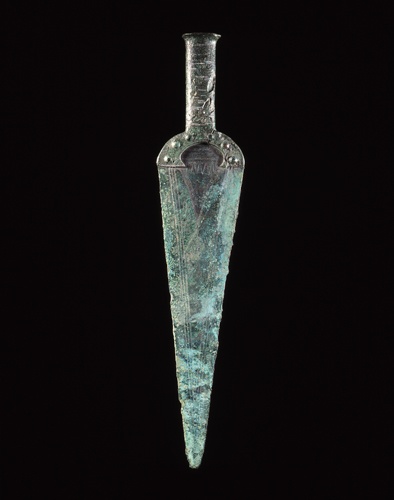
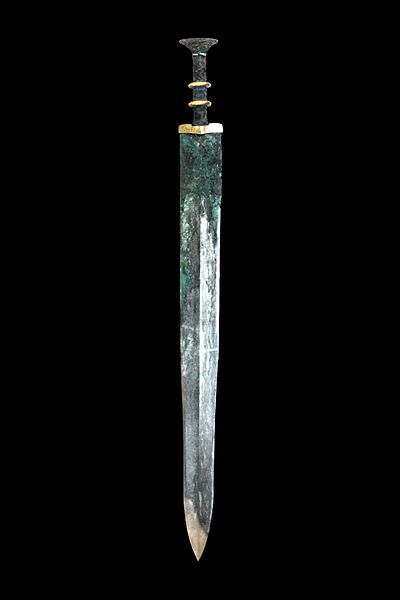
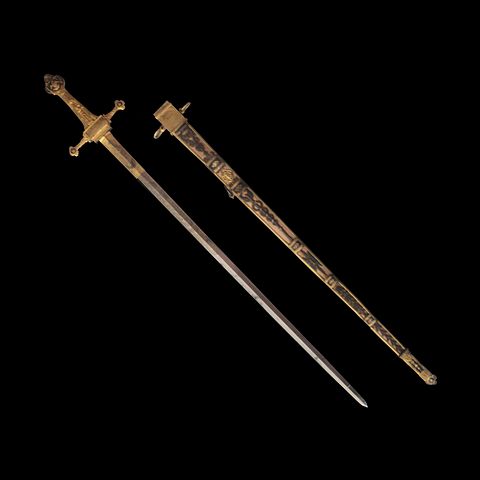


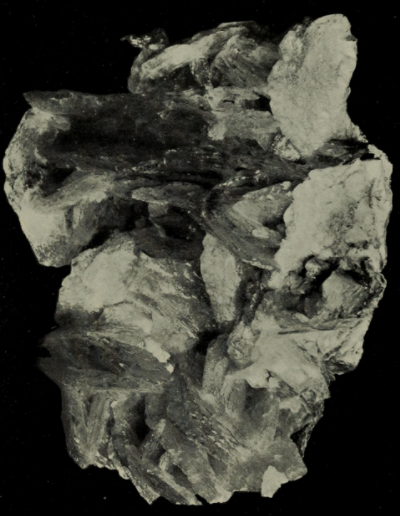
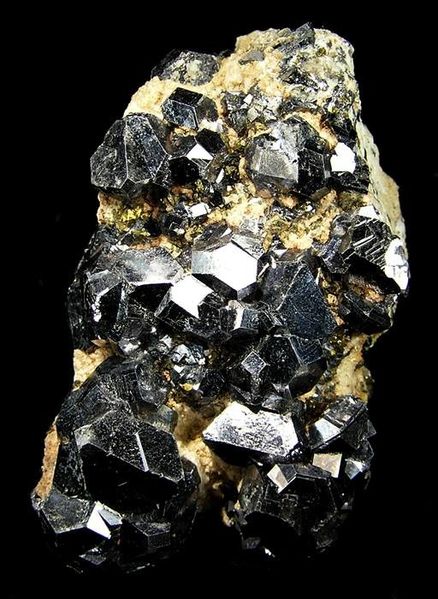
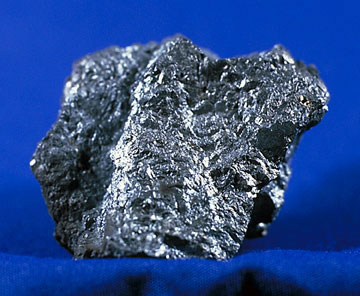
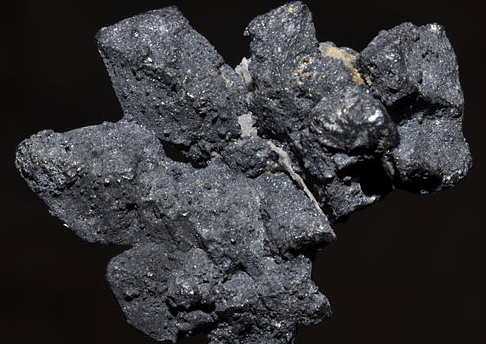
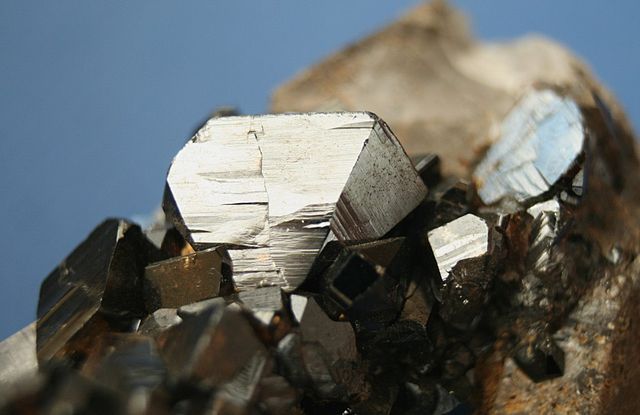
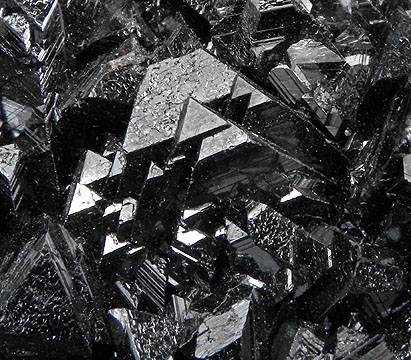

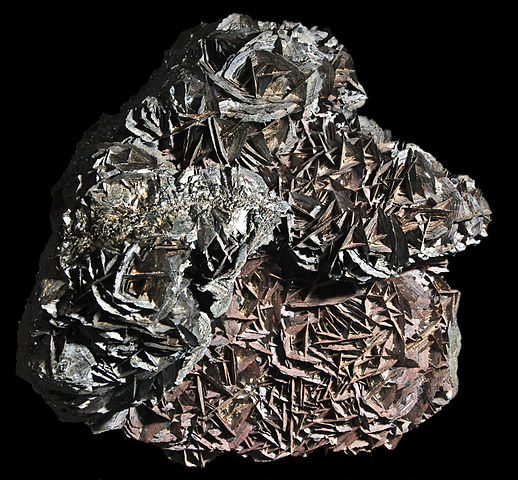
.jpg)
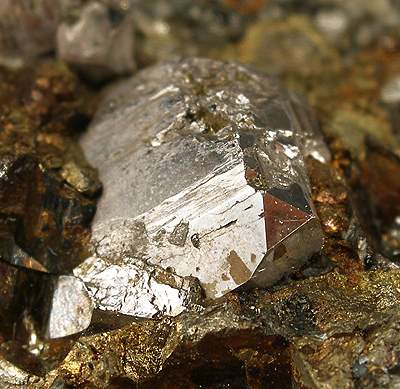
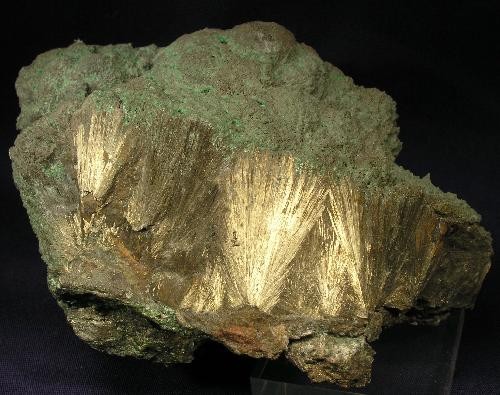
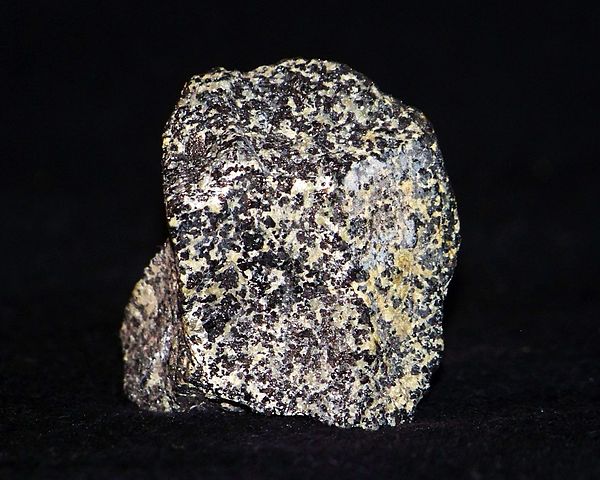
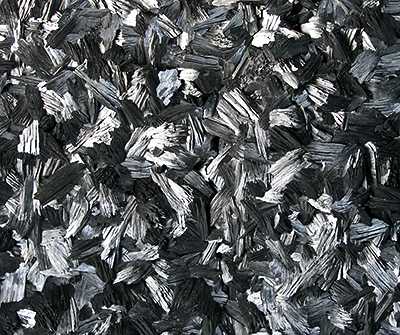


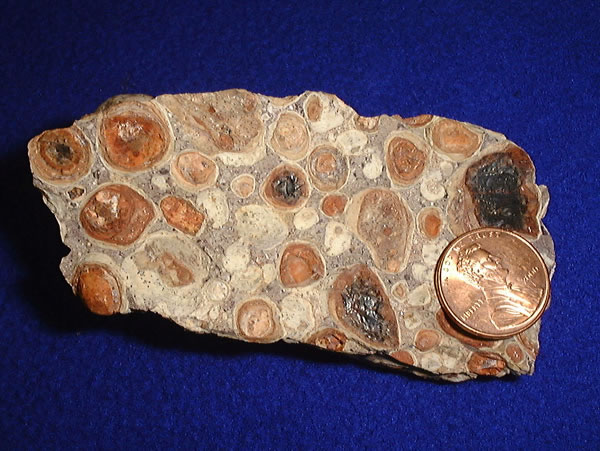
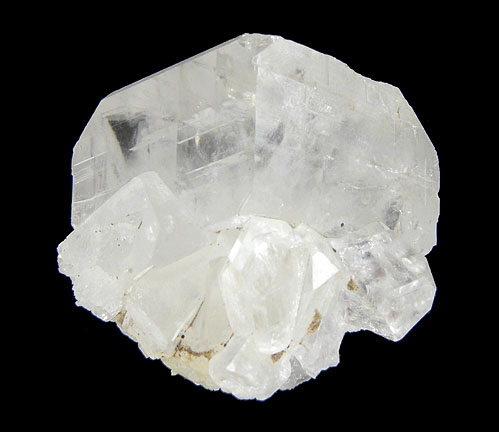
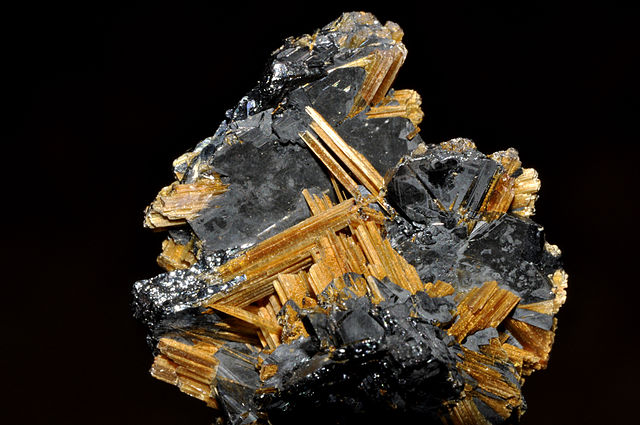

Alloys can be much stronger than pure metals.

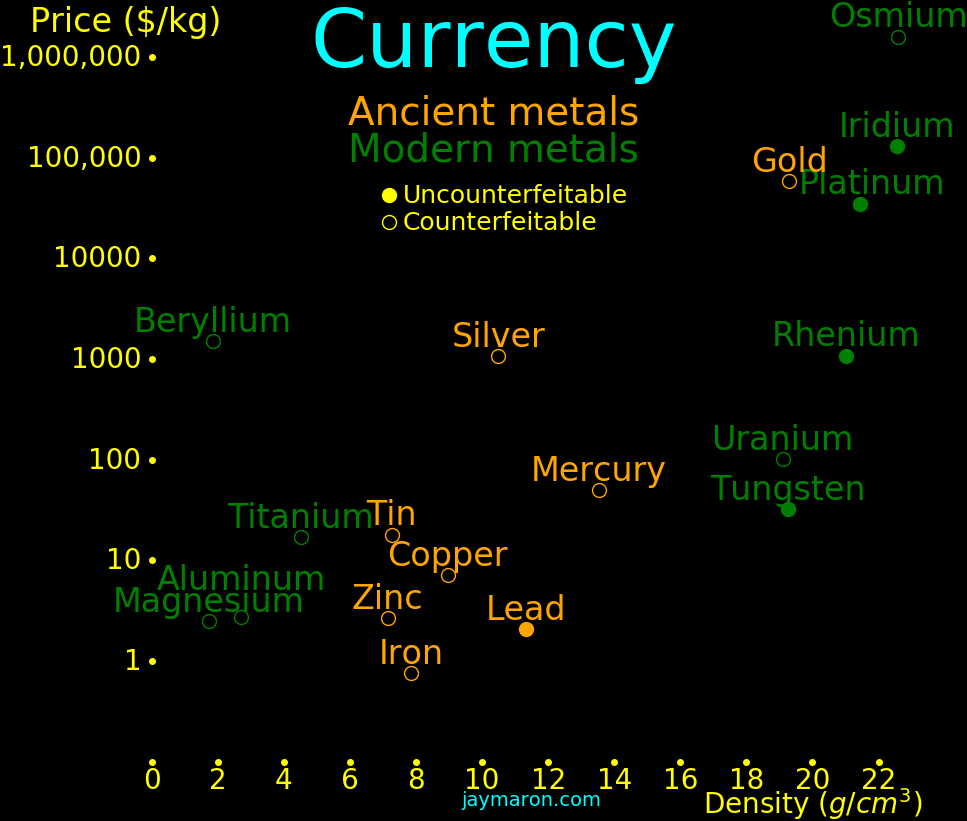
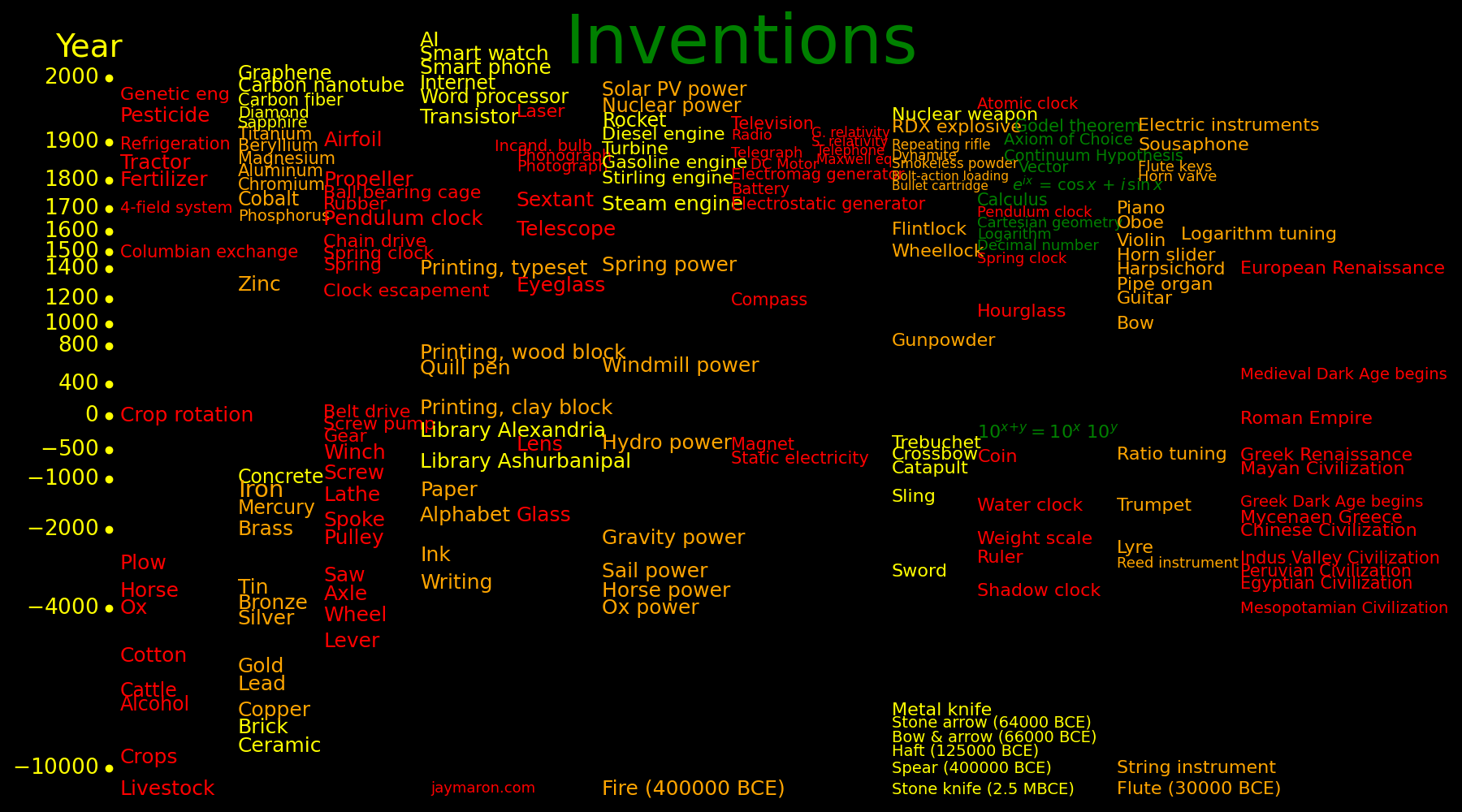
Discovery Method of Source
(year) discovery
Carbon Ancient Naturally occuring
Gold Ancient Naturally occuring
Silver Ancient Naturally occuring
Sulfur Ancient Naturally occuring
Lead -6500 Smelt with carbon Galena PbS
Copper -5000 Smelt with carbon Chalcocite Cu2S
Bronze (As) -4200 Copper + Arsenic Realgar As4S4
Tin -3200 Smelt with carbon Calamine ZnCO3
Bronze (Sn) -3200 Copper + Tin
Brass -2000 Copper + Zinc Sphalerite ZnS
Mercury -2000 Heat the sulfide Cinnabar HgS
Iron -1200 Smelt with carbon Hematite Fe2O3
Arsenic 1250 Heat the sulfide Orpiment As2S3
Zinc 1300 Smelt with wool Calamine ZnCO3 (smithsonite) & Zn4Si2O7(OH)2·H2O (hemimorphite)
Antimony 1540 Smelt with iron Stibnite Sb2S3
Phosphorus 1669 Heat NaPO3 Excrement
Cobalt 1735 Smelt with carbon Cobaltite CoAsS
Platinum 1735 Naturally occuring
Nickel 1751 Smelt with carbon Nickeline NiAs
Bismuth 1753 Isolated from lead
Hydrogen 1766 Hot iron + steam Water
Oxygen 1771 Heat HgO
Nitrogen 1772 Isolated from air
Manganese 1774 Smelt with carbon Pyrolusite MnO2
Molybdenum 1781 Smelt with carbon Molybdenite MoS2
Tungsten 1783 Smelt with carbon Wolframite (Fe,Mn)WO4
Chromium 1797 Smelt with carbon Crocoite PbCrO4
Palladium 1802 Isolated from Pt
Osmium 1803 Isolated from Pt
Iridium 1803 Isolated from Pt
Rhodium 1804 Isolated from Pt
Sodium 1807 Electrolysis
Potassium 1807 Electrolysis
Magnesium 1808 Electrolysis Magnesia MgCO3
Cadmium 1817 Isolated from zinc
Lithium 1821 Electrolysis of LiO2 Petalite LiAlSi4O10
Zirconium 1824 Smelt with potassium Zircon ZrSiO4
Aluminum 1827 Smelt with potassium
Silicon 1823 Smelt with potassium
Beryllium 1828 Smelt with potassium Beryl Be3Al2Si6O18
Thorium 1929 Smelt with potassium Gadolinite (Ce,La,Nd,Y)2FeBe2Si2O10
Vanadium 1831 Smelt VCl2 with H2 Vanadinite Pb5(VO4)3Cl
Uranium 1841 Smelt with potassium Uranite UO2
Ruthenium 1844 Isolated from Pt
Tantalum 1864 Smelt with hydrogen Tantalite [(Fe,Mn)Ta2O6]
Niobium 1864 Smelt with hydrogen Tantalite [(Fe,Mn)Ta2O6]
Fluorine 1886 Electrolysis
Helium 1895 From uranium ore
Titanium 1910 Smelt with sodium Ilmenite FeTiO3
Hafnium 1924 Isolated from zirconium
Rhenium 1928 Isolated from Pt
Scandium 1937 Electrolysis Gadolinite FeTiO3
-384 -322 Aristotle. Wrote "Meteorology"
-370 -285 Theophrastus. Wrote "De Mineralibus"
77 Pliny the Elder publishes "Natural History"
973 1050 Al Biruni. Published "Gems"
1546 Georgius Agricola publishes "On the Nature of Rocks"
1556 Georgius Agricola publishes "On Metals"
1609 de Boodt publishes a catalog of minerals
1669 Brand: Discovery of phosphorus
1714 John Woodward publishes "Naturalis historia telluris illustrata & aucta", a mineral catalog
1735 Brandt: Discovery of cobalt
1777 Lavoisier: Discovery of sulfur
1778 Lavoisier: Discovery of oxygen and prediction of silicon
1783 Lavoisier: Discovery of hydrogen
1784 T. Olof Bergman publishes "Manuel du mineralogiste, ou sciagraphie du regne mineral",
and founds analytical chemistry
1778 Lavoisier: Discovery of oxygen
1801 Rene Just Huay publishes "Traite de Mineralogie", founding crystallography
1811 Avogadro publishes "Avogadro's law"
1860 The Karlsruhe Congress publishes a table of atomic weights
1869 Mendeleev publishes the periodic table
Shear modulus = S = 82 GJoules/meter3
Density = D = 7900 kg/meter3
Sword worthiness = Q = S/D = 10.4 MJoules/kg



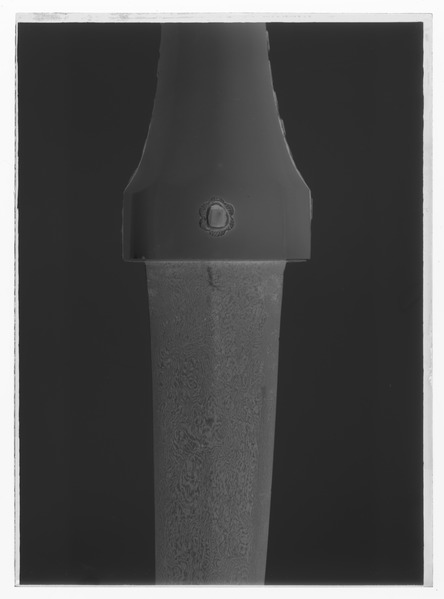
-600 Wootz steel developed in India and is renowned as the finest steel in the world.
1700 The technique for making Wootz steel is lost.
1790 Wootz steel begins to be studied by the British Royal Society.
1838 Anosov replicates Wootz steel.
Wootz steel is a mix of two phases: martensite (crystalline iron with .5% carbon),
and cementite (iron carbide, Fe, 6.7% carbon).

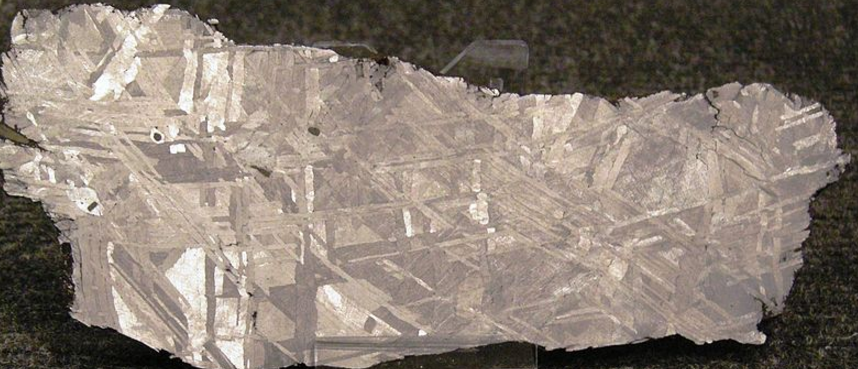
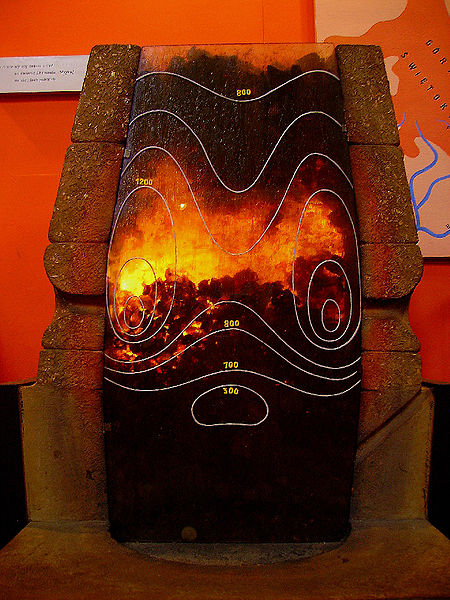
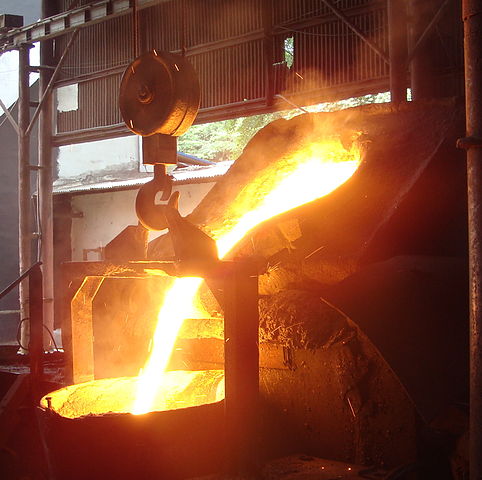
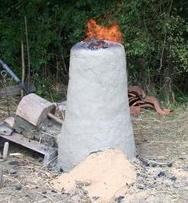
Cu2O + C → 2 Cu + CO
At low temperature copper stays in the form of Cu2O and at high
temperature it gives the oxygen to carbon and becomes pure copper.
3 Fe2O3 + C → 2 Fe3O4 + CO
Fe3O4 + C → 3 FeO + CO
FeO + C → Fe + CO
Oxidation state = Number of electrons each iron atom gives to oxygen
Oxidation state
CuO 2
Cu2O 1
Cu 0
Fe2O3 3
Fe3O4 8/3
FeO 2
Fe 0
Smelt Method Year Abundance
(C) (ppm)
Gold <0 * Ancient .0031
Silver <0 * Ancient .08
Platinum <0 * 1735 .0037
Mercury <0 heat -2000 .067
Palladium <0 chem 1802 .0063
Copper 80 C -5000 68
Sulfur 200 * Ancient 420
Lead 350 C -6500 10
Nickel 500 C 1751 90
Cadmium 500 C 1817 .15
Cobalt 525 ? 1735 30
Tin 725 C -3200 2.2
Iron 750 C -1000 63000
Phosphorus 750 heat 1669 10000
Tungsten 850 C 1783 1100
Potassium 850 e- 1807 15000
Zinc 975 C 1746 79
Sodium 1000 e- 1807 23000
Chromium 1250 C 1797 140
Niobium 1300 H 1864 17
Manganese 1450 C 1774 1120
Vanadium 1550 ? 1831 190
Silicon 1575 K 1823 270000
Titanium 1650 Na 1910 66000
Magnesium 1875 e- 1808 29000
Lithium 1900 e- 1821 17
Aluminum 2000 K 1827 82000
Uranium 2000 K 1841 1.8
Beryllium 2350 K 1828 1.9
Smelt: Temperature required to smelt with carbon
Method: Method used to purify the metal when it was first discovered
*: The element occurs in its pure form naturally
C: Smelt with carbon
K: Smelt with potassium
Na: Smelt with sodium
H: Smelt with hydrogen
e-: Electrolysis
heat: Heat causes the oxide to decompose into pure metal. No carbon required.
chem: Chemical separation
Discovery: Year the element was first obtained in pure form
Abundance: Abundance in the Earth's crust in parts per million
Elements with a low carbon smelting temperature were discovered in ancient
times unless the element was rare. Cobalt was discovered in 1735, the first new
metal since antiquity, and this inspired scientists to smelt every known
mineral in the hope that it would yield a new metal. By 1800 all the rare
elements that were carbon smeltable were discovered.
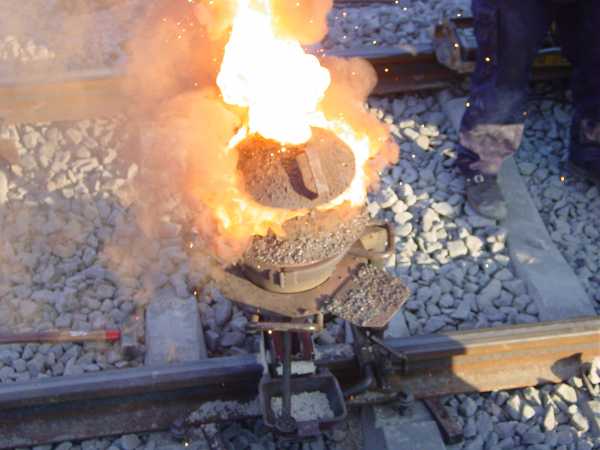
Fe2O3 + 2 Al → 2 Fe + Al2O3
Oxidation state Oxidation state
at left at right
2 M2O ↔ 4 M + O2 1 0
4 MO ↔ 2 M2O + O2 2 1
2 M3O4 ↔ 6 MO + O2 8/3 2
6 M2O3 ↔ 4 M3O4 + O2 3 8/3
2 M2O3 ↔ 4 MO + O2 3 2
2 MO ↔ 2 M + O2 2 0
2/3 M2O3 ↔ 4/3 M + O2 3 0
1 MO2 ↔ 1 M + O2 4 0
2 MO2 ↔ 2 MO + O2 4 2
.jpg)
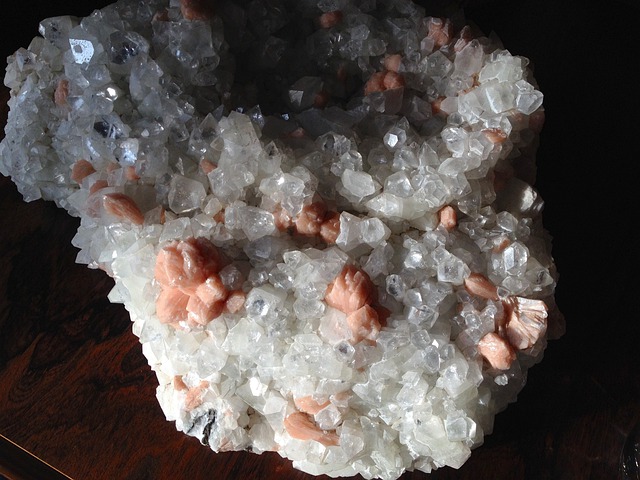

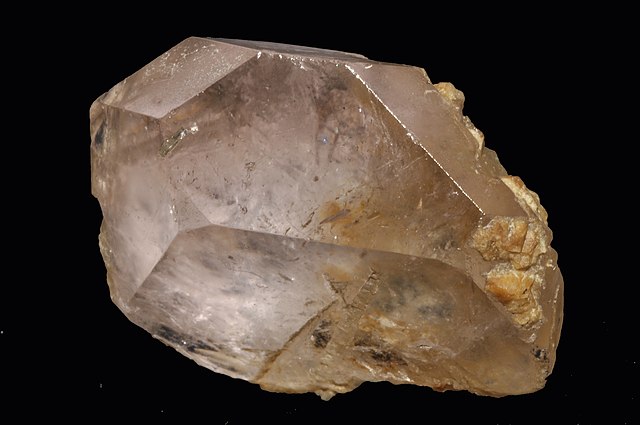
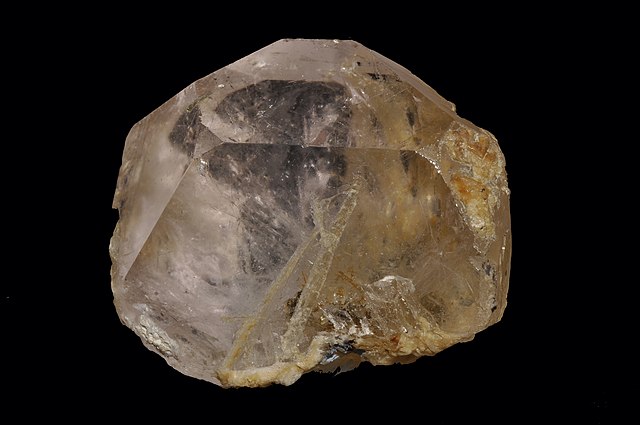

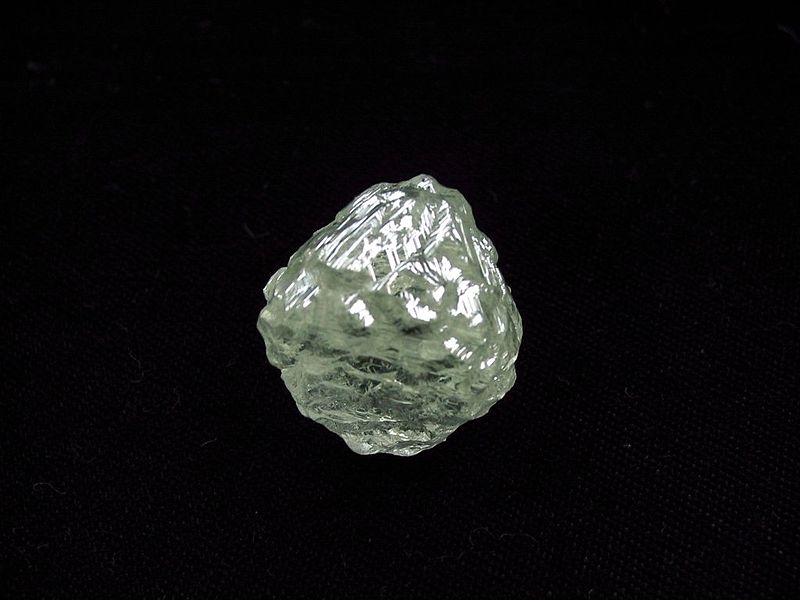
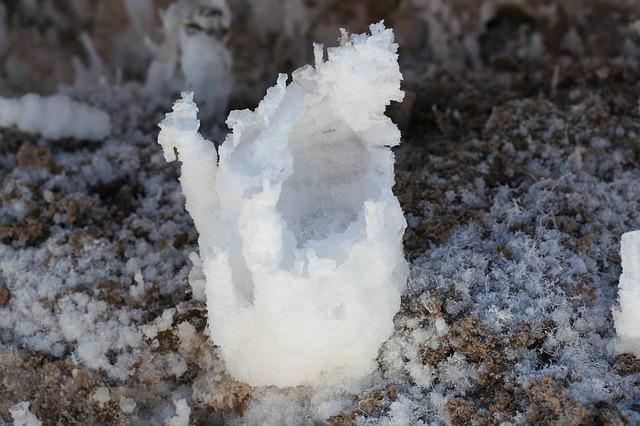
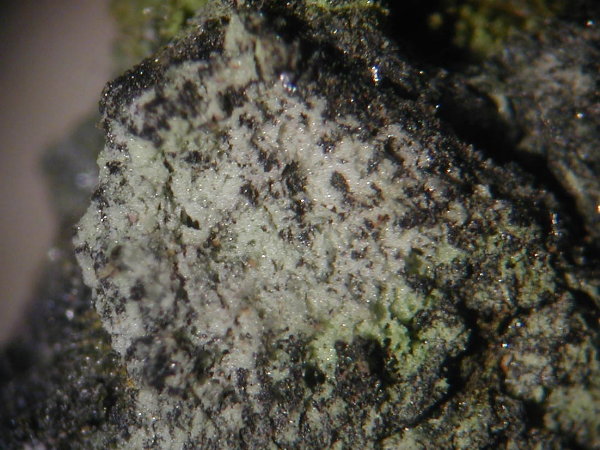

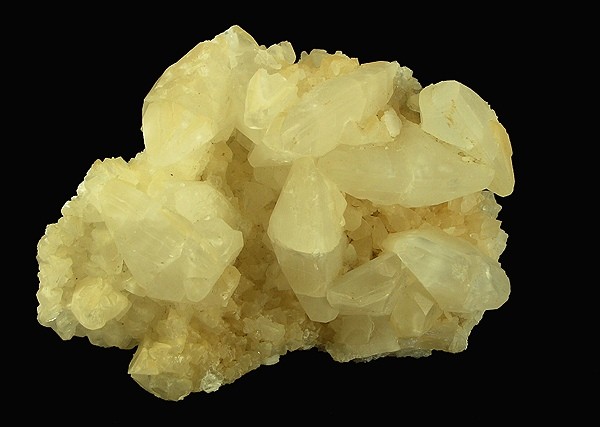
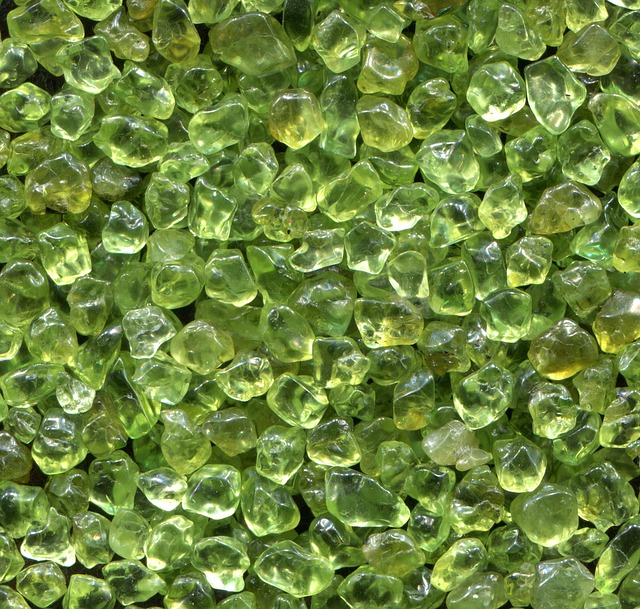
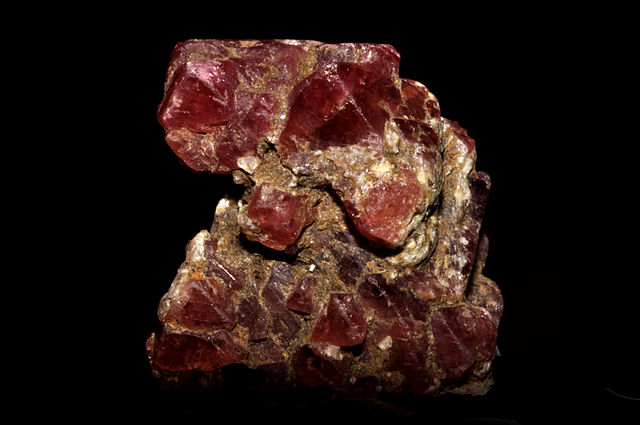

2(OH)6.jpg)
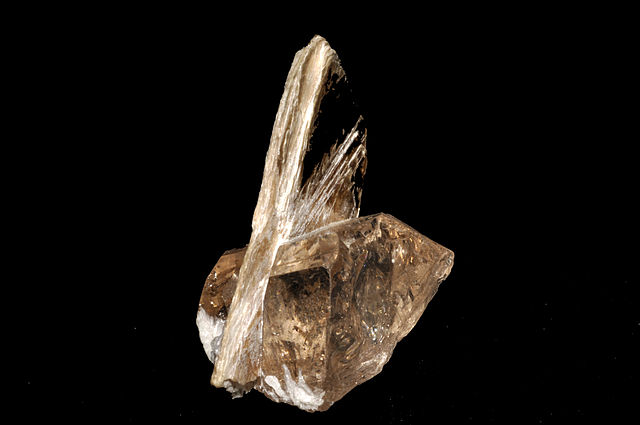

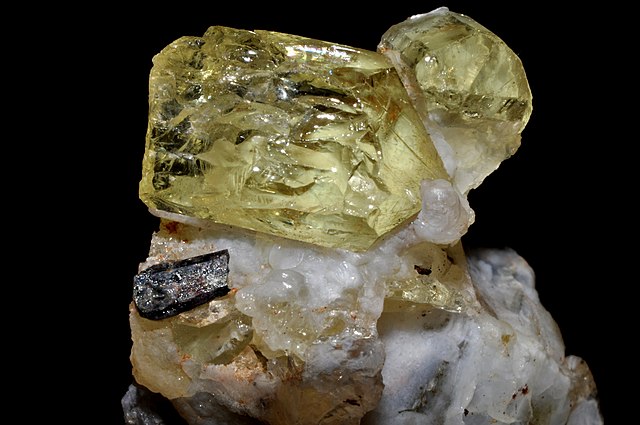

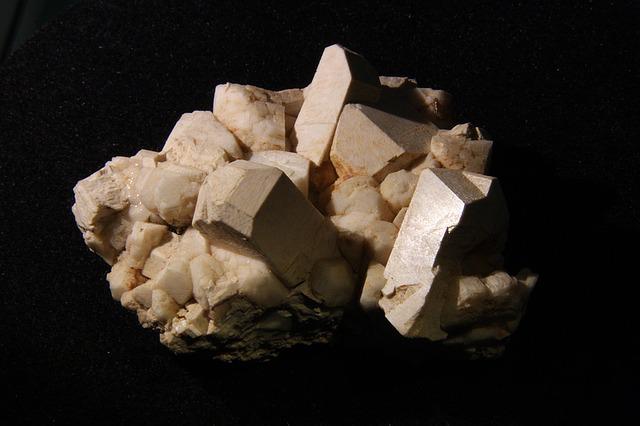
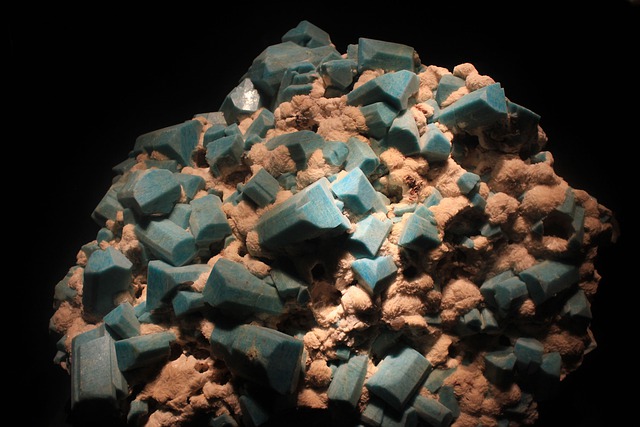
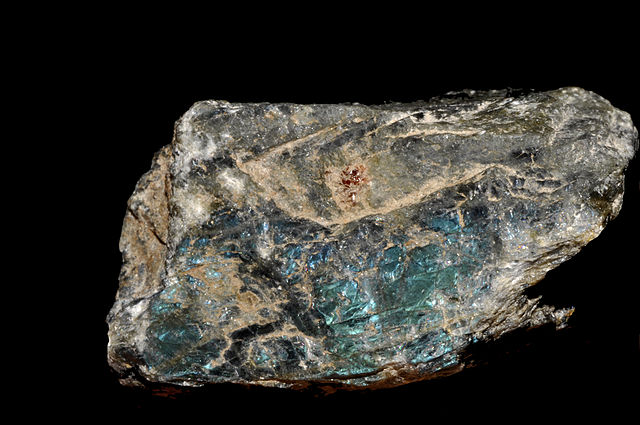

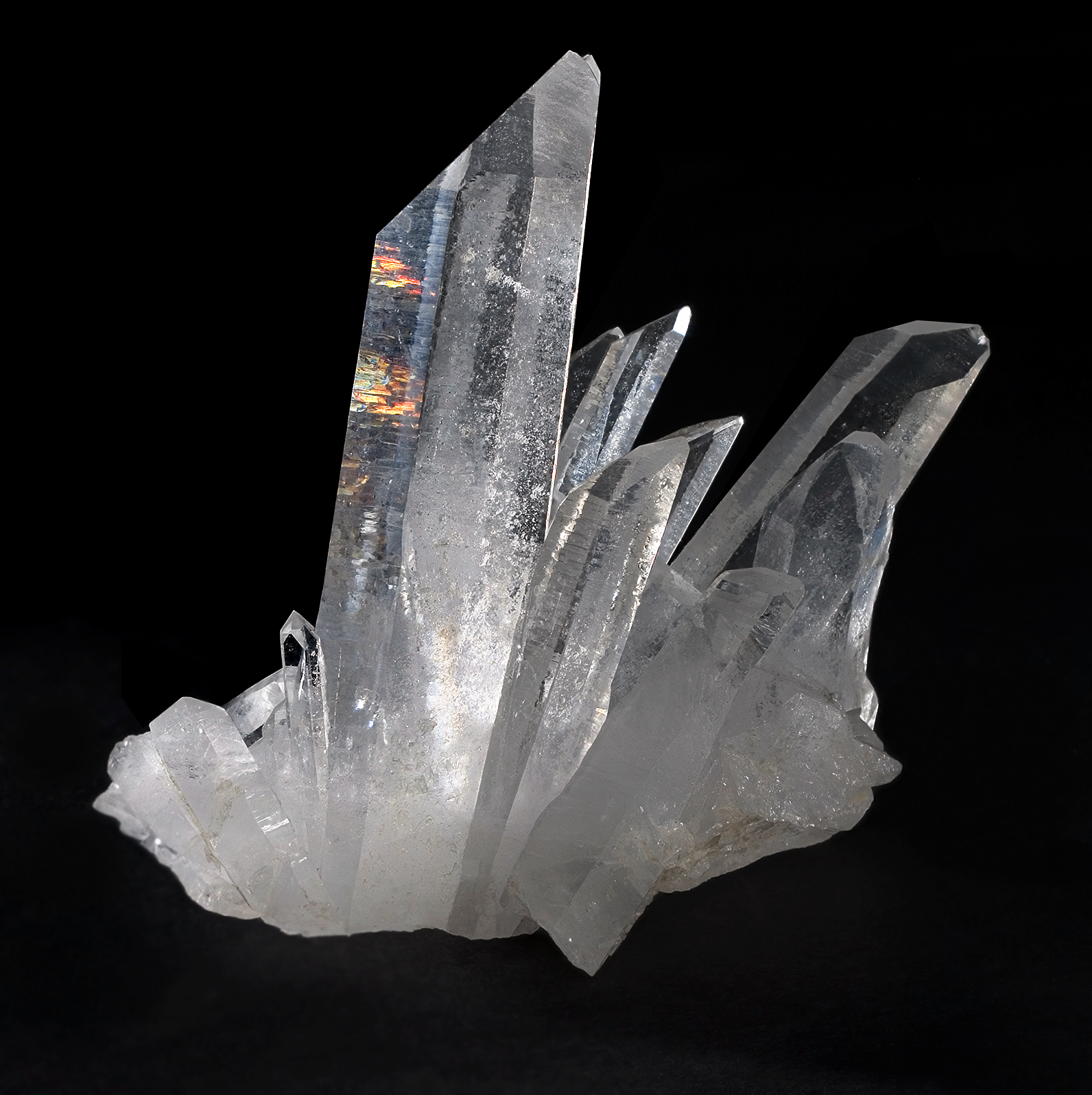
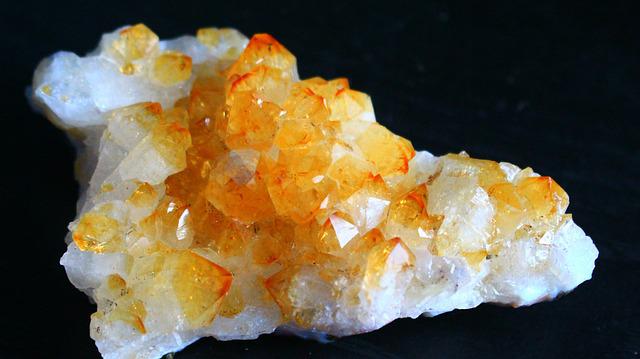
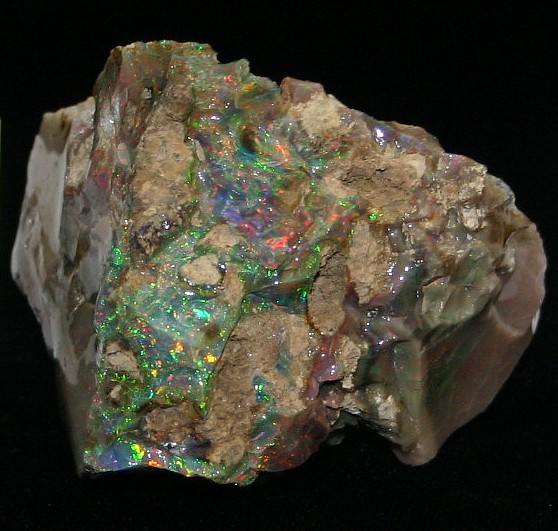

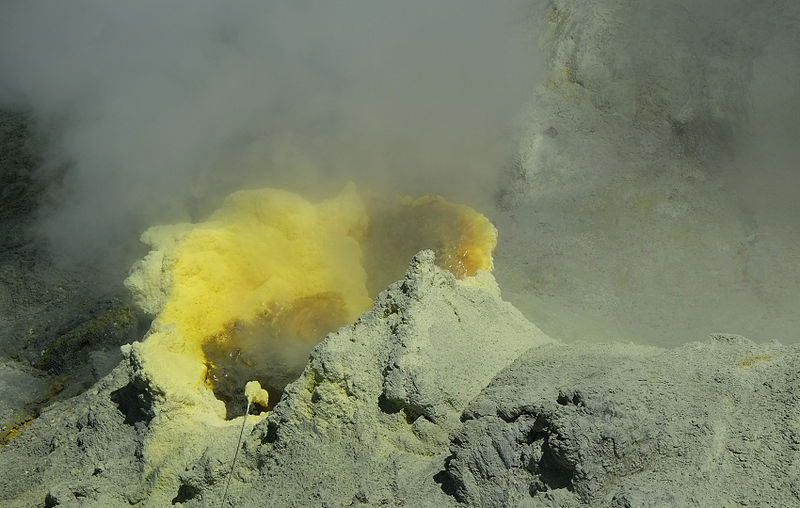
_.jpg)
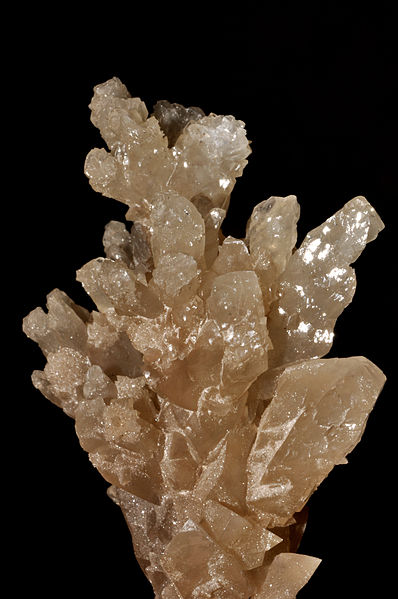
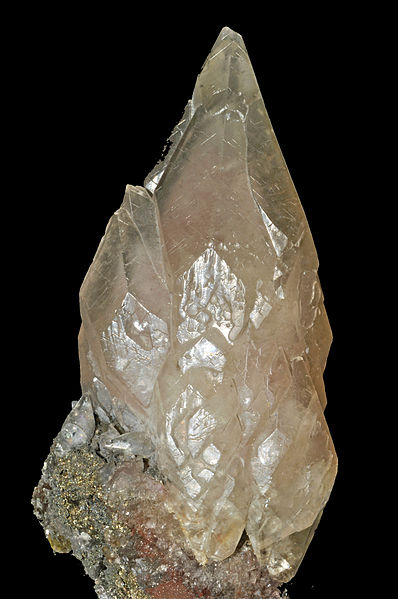

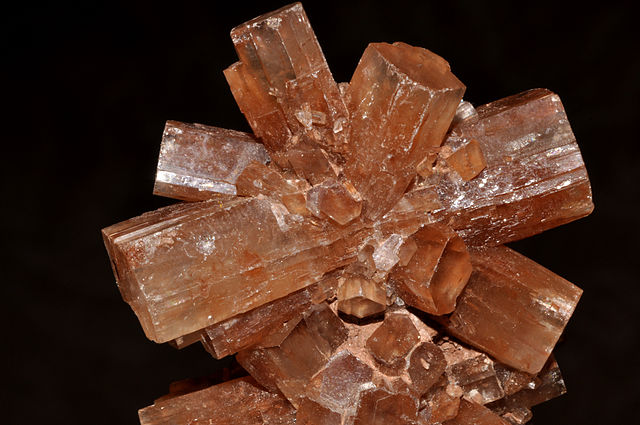
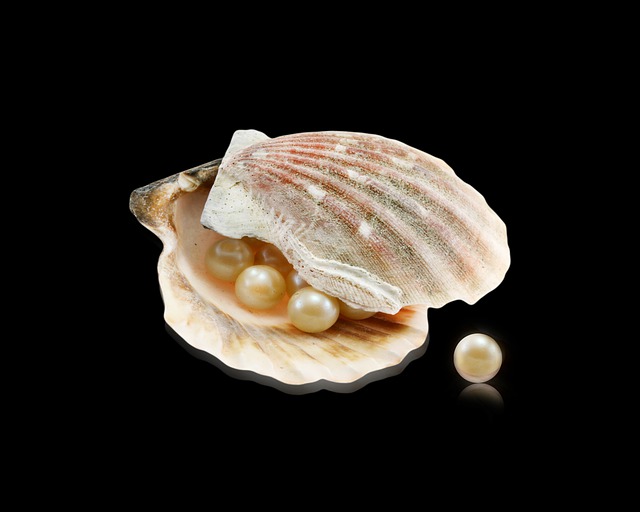


.jpg)


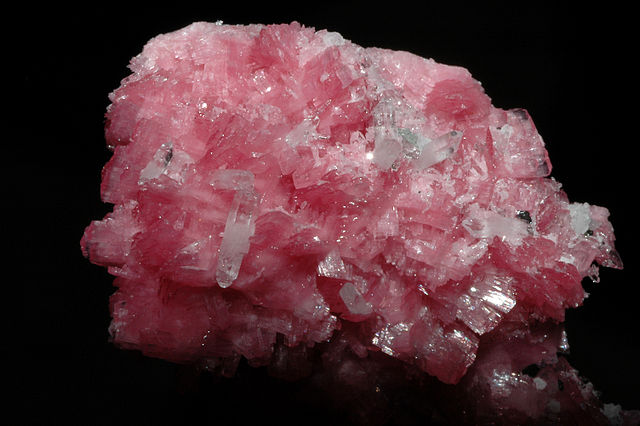
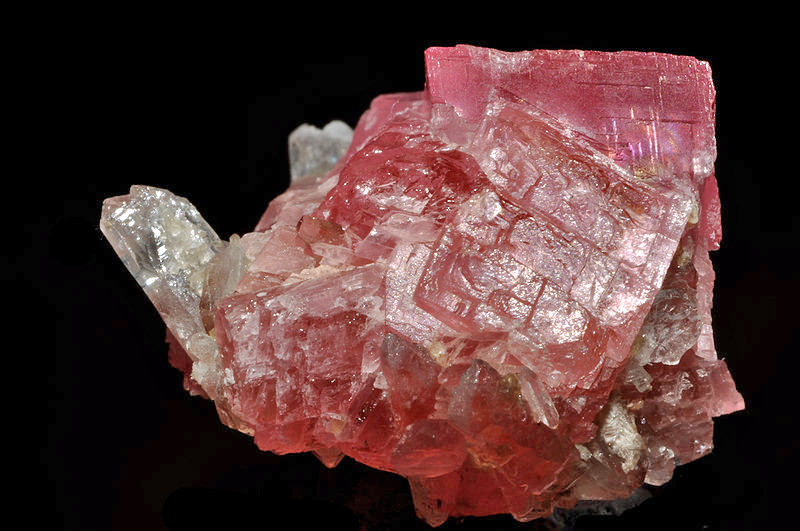


.jpg)




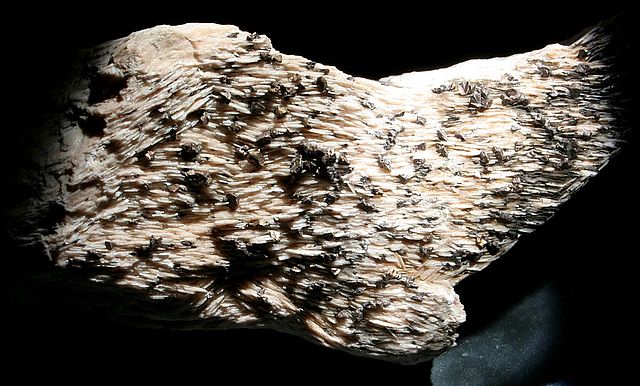
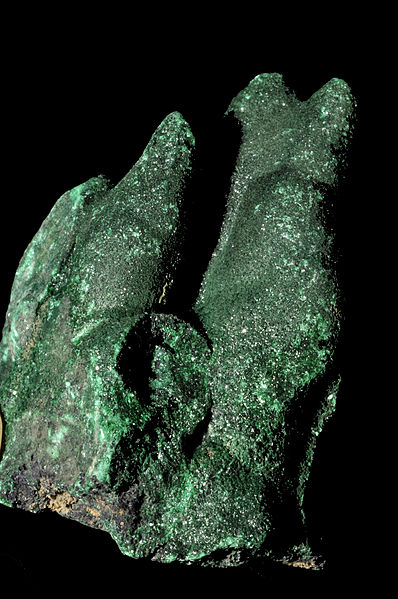
_3.jpg)
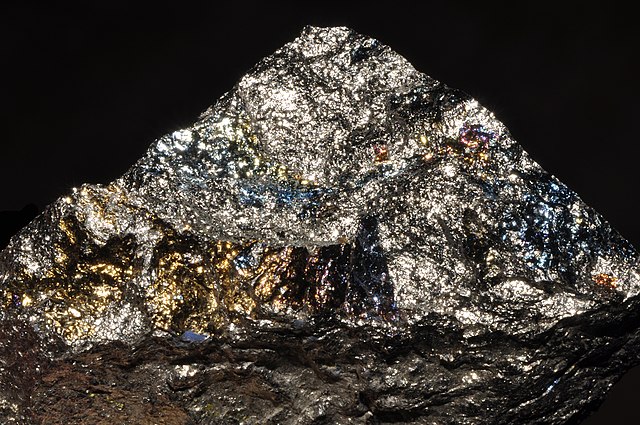
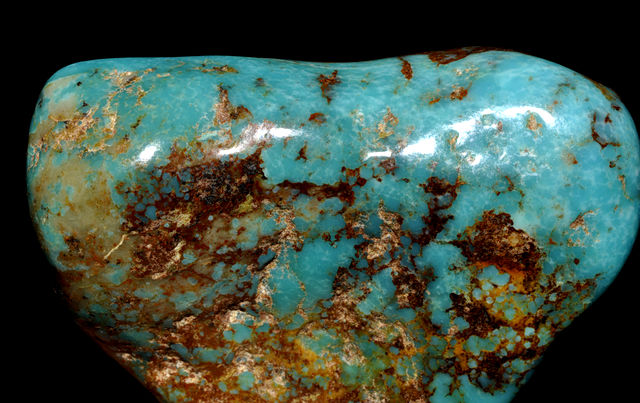

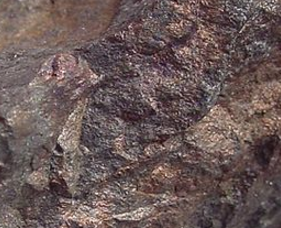
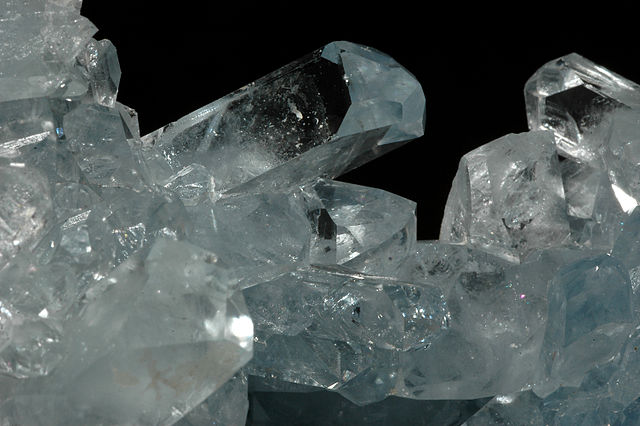

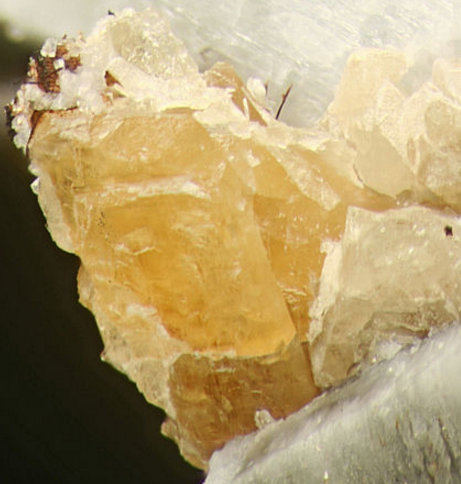


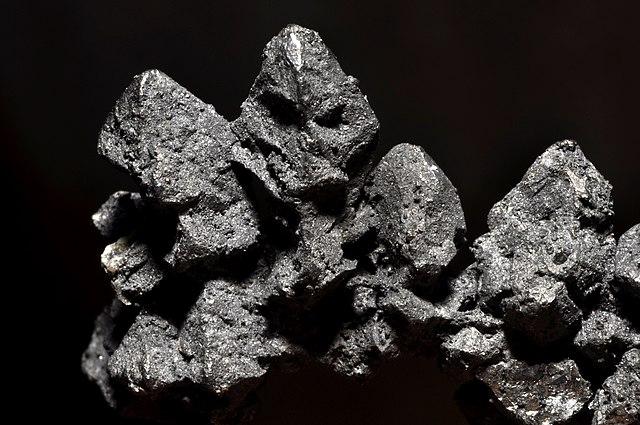


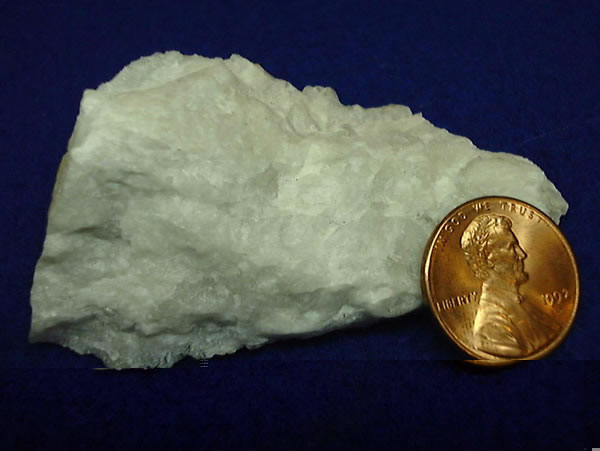

-178918.jpg)


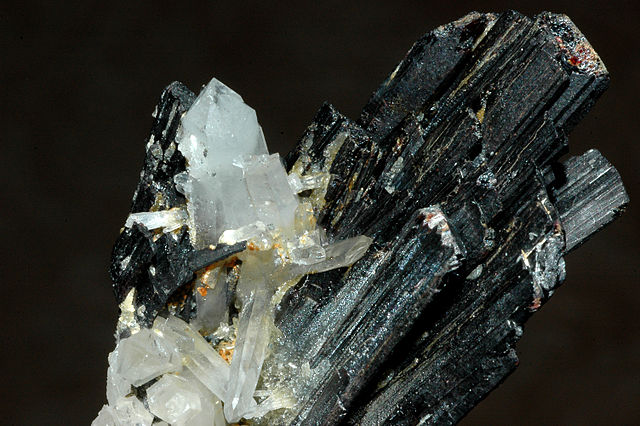

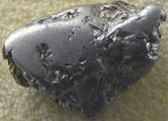





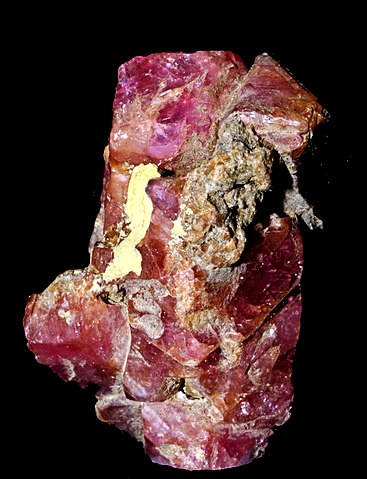



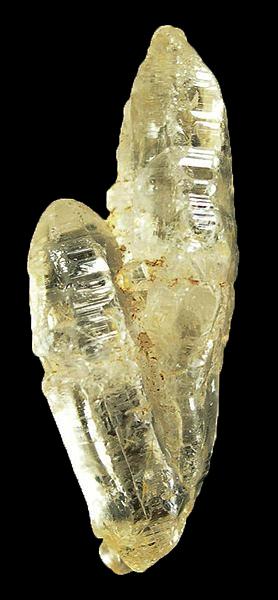
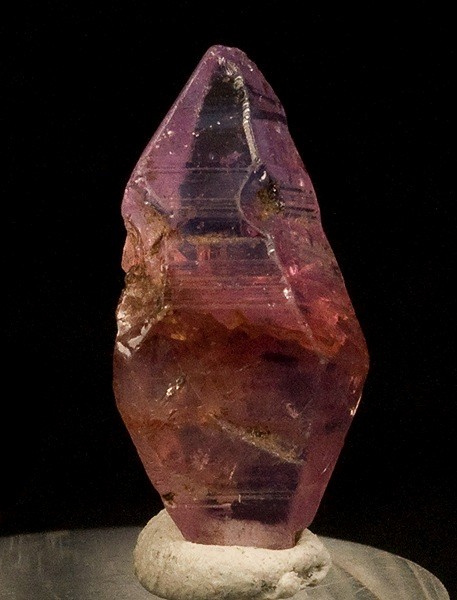





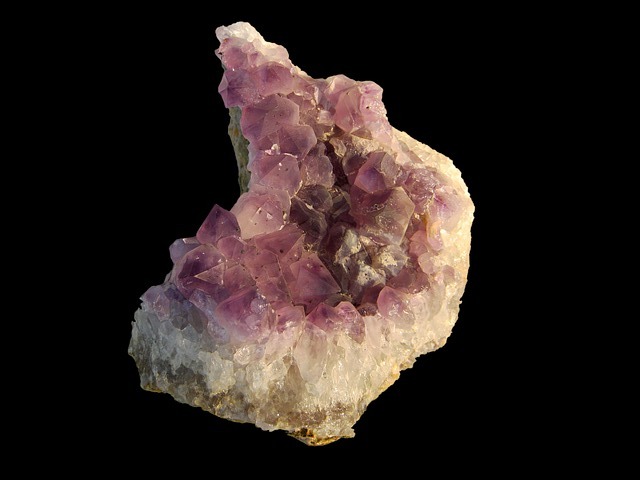


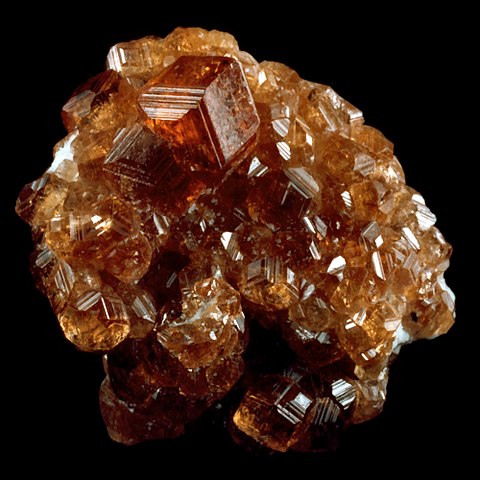




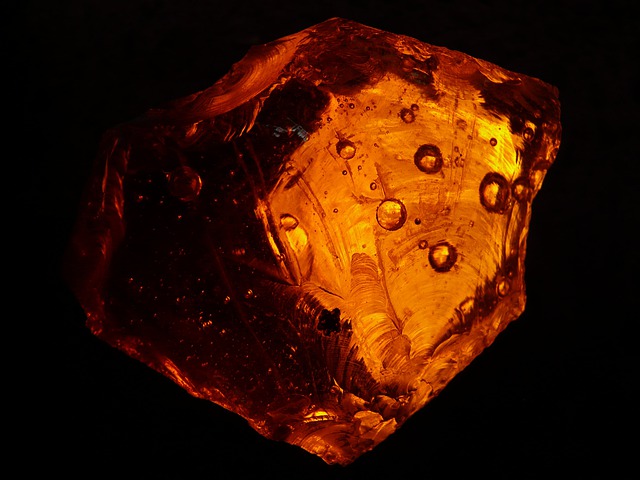
Color Colorant carat ($)
Painite 55000 CaZrAl9O15(BO3)
Diamond Clear 1400 C
Ruby Red Chromium 15000 Al2O3
Sapphire Blue Iron 650 Al2O3
Sapphire yellow Titanium Al2O3
Sapphire Orange Copper Al2O3
Sapphire Green Magnesium Al2O3
Emerald Green Chromium Be3Al2(SiO3)6
Beryl Aqua Iron Be3Al2(SiO3)6 AKA "aquamarine"
Morganite Orange Manganese 300 Be3Al2(SiO3)6
Topaz Topaz Al2SiO4(F,OH)2
Spinel Red Red MgAl2O4
Quartz Clear SiO2
Amethyst Purple Iron SiO2
Citrine Yellow SiO2
Zircon Red ZrSiO4
Garnet Orange [Mg,Fe,Mn]3Al2(SiO4)3 & Ca3[Cr,Al,Fe]2(SiO4)3
Garnet Blue 1500 [Mg,Fe,Mn]3Al2(SiO4)3 & Ca3[Cr,Al,Fe]2(SiO4)3
Opal SiO2·nH2O
Opal Black 11000 SiO2·nH2O
Jet Black Lignite
Peridot Green (Mg,Fe)2SiO4
Pearl White CaCO3
Jade Green NaAlSi2O6
Amber Orange Resin



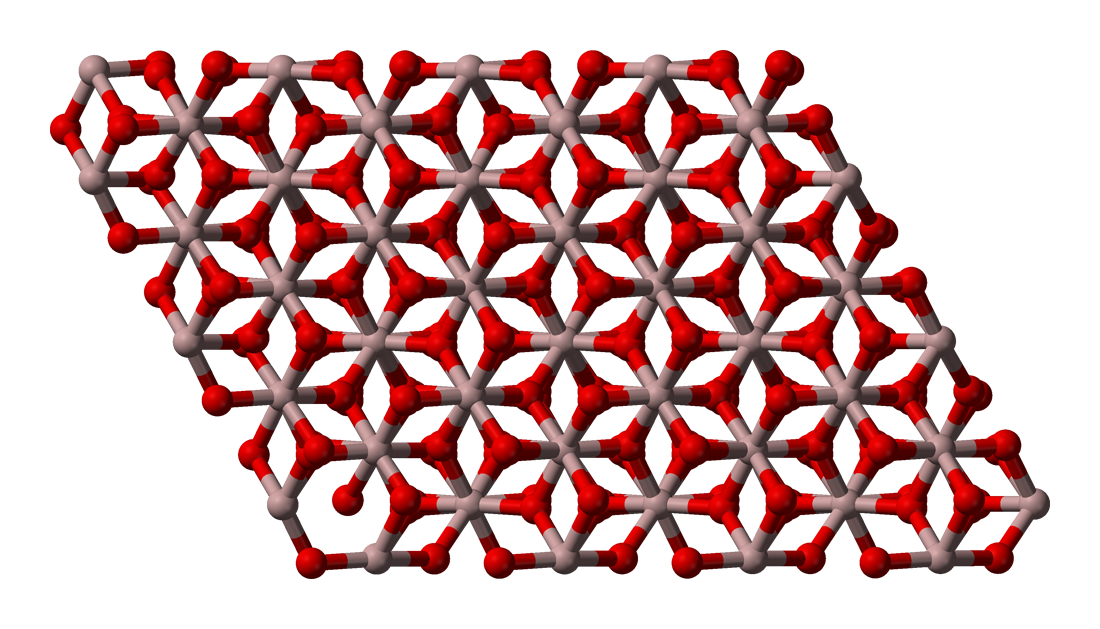
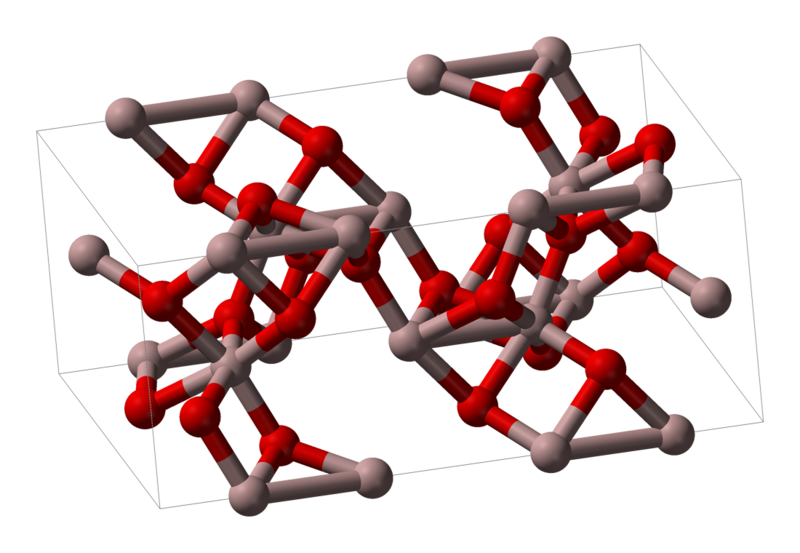


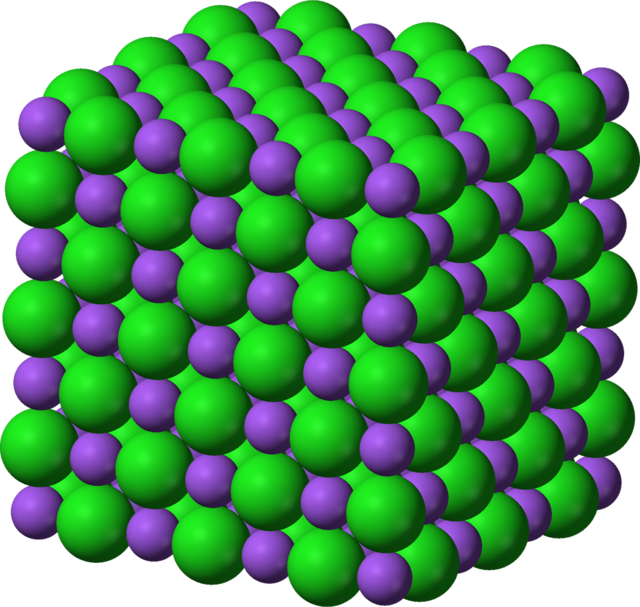
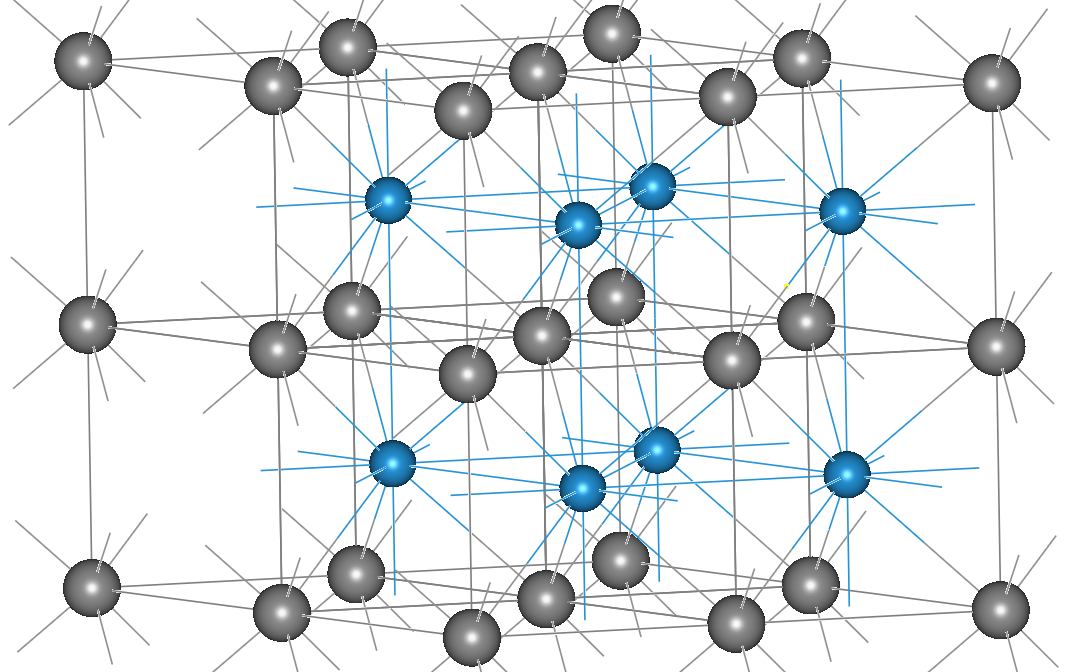
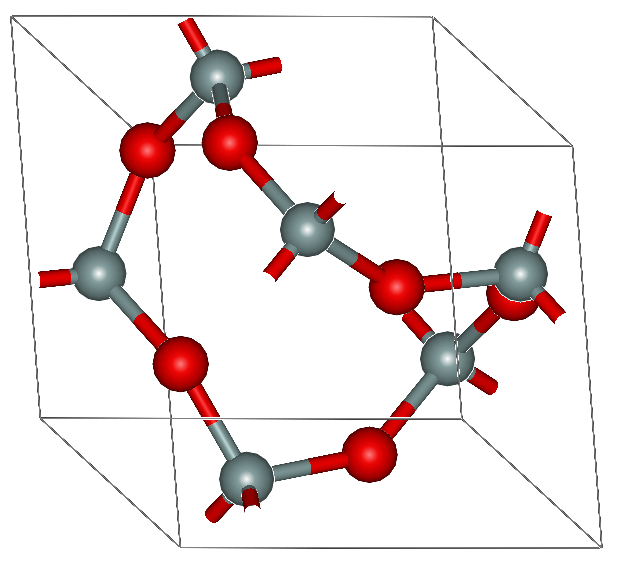
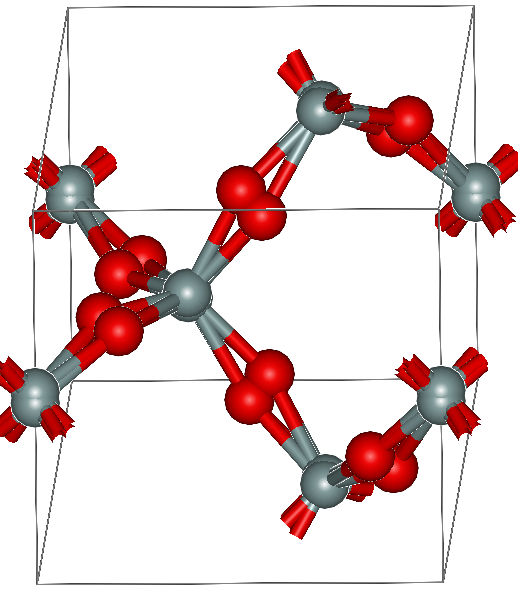
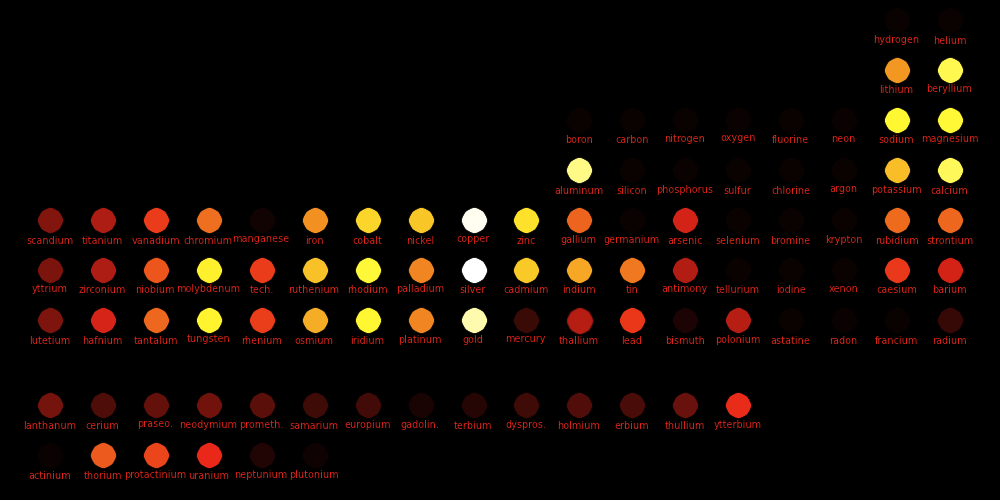
White: High conductivity
Red: Low conductivity
Electric Thermal Density Electric C/Ct Heat Heat Melt $/kg Young Tensile Poisson Brinell
conduct conduct conduct/ cap cap number hardness
(e7 A/V/m) (W/K/m) (g/cm^3) Density (AK/VW) (J/g/K) (J/cm^3K) (K) (GPa) (GPa) (GPa)
Silver 6.30 429 10.49 .60 147 .235 2.47 1235 590 83 .17 .37 .024
Copper 5.96 401 8.96 .67 147 .385 3.21 1358 6 130 .21 .34 .87
Gold 4.52 318 19.30 .234 142 .129 2.49 1337 24000 78 .124 .44 .24
Aluminum 3.50 237 2.70 1.30 148 .897 2.42 933 2 70 .05 .35 .245
Beryllium 2.5 200 1.85 1.35 125 1.825 3.38 1560 850 287 .448 .032 .6
Magnesium 2.3 156 1.74 1.32 147 1.023 1.78 923 3 45 .22 .29 .26
Iridium 2.12 147 22.56 .094 144 .131 2.96 2917 13000 528 1.32 .26 1.67
Rhodium 2.0 150 12.41 .161 133 .243 3.02 2237 13000 275 .95 .26 1.1
Tungsten 1.89 173 19.25 .098 137 .132 2.54 3695 50 441 1.51 .28 2.57
Molybdenum 1.87 138 10.28 .182 136 .251 2896 24 330 .55 .31 1.5
Cobalt 1.7 100 8.90 .170 .421 1768 30 209 .76 .31 .7
Zinc 1.69 116 7.14 .388 693 2 108 .2 .25 .41
Nickel 1.4 90.9 8.91 .444 1728 15
Ruthenium 1.25 117 12.45 2607 5600
Cadmium 1.25 96.6 8.65 594 2 50 .078 .30 .20
Osmium 1.23 87.6 22.59 .130 3306 12000
Indium 1.19 81.8 7.31 430 750 11 .004 .45 .009
Iron 1.0 80.4 7.87 .449 1811 211 .35 .29 .49
Palladium .95 71.8 1828
Tin .83 66.8 505 22 47 .20 .36 .005
Chromium .79 93.9 .449 2180
Platinum .95 .133 2041
Tantalum .76 .140 3290
Gallium .74 303
Thorium .68
Niobium .55 53.7 2750
Rhenium .52 .137 3459
Vanadium .5 30.7 2183
Uranium .35
Titanium .25 21.9 .523 1941
Scandium .18 15.8 1814
Neodymium .156 1297
Mercury .10 8.30 .140 234
Manganese .062 7.81 1519
Germanium .00019 1211
Diamondiso 10 3320
Diamond e-16 2200 .509
Nanotube 10 3500 Carbon nanotube. Electric conductivity = e-16 laterally
Tube bulk 200 Carbon nanotubes in bulk
Graphene 10 5000
Graphite 2 400 .709 Natural graphite
Al Nitride e-11 180
Brass 1.5 120
Steel 45 Carbon steel
Bronze .65 40
Steel Cr .15 20 Stainless steel (usually 10% chromium)
Quartz (C) 12 Crystalline quartz. Thermal conductivity is anisotropic
Quartz (F) e-16 2 Fused quartz
Granite 2.5
Marble 2.2
Ice 2
Concrete 1.5
Limestone 1.3
Soil 1
Glass e-12 .85
Water e-4 .6
Seawater 1 .6
Brick .5
Plastic .5
Wood .2
Wood (dry) .1
Plexiglass e-14 .18
Rubber e-13 .16
Snow .15
Paper .05
Plastic foam .03
Air 5e-15 .025
Nitrogen .025 1.04
Oxygen .025 .92
Silica aerogel .01
Siemens: Amperes^2 Seconds^3 / kg / meters^2 = 1 Ohm^-1
For most metals,
Electric conductivity / Thermal conductivity ~ 140 J/g/K
Teslas
Field generated by brain 10-12
Wire carrying 1 Amp .00002 1 cm from the wire
Earth magnetic field .0000305 at the equator
Neodymium magnet 1.4
Magnetic resonance imaging machine 8
Large Hadron Collider magnets 8.3
Field for frog levitation 16
Strongest electromagnet 32.2 without using superconductors
Strongest electromagnet 45 using superconductors
Neutron star 1010
Magnetar neutron star 1014
MVolt/meter
Air 3
Glass 12
Polystyrene 20
Rubber 20
Distilled water 68
Vacuum 30 Depends on electrode shape
Diamond 2000
Relative permittivity
Vacuum 1 (Exact)
Air 1.00059
Polyethylene 2.5
Sapphire 10
Concrete 4.5
Glass ~ 6
Rubber 7
Diamond ~ 8
Graphite ~12
Silicon 11.7
Water (0 C) 88
Water (20 C) 80
Water (100 C) 55
TiO2 ~ 150
SrTiO3 310
BaSrTiO3 500
Ba TiO3 ~ 5000
CaCuTiO3 250000
Relative Magnetic Maximum Critical
permeability moment frequency temperature
(kHz) (K)
Metglas 2714A 1000000 100 Rapidly-cooled metal
Iron 200000 2.2 1043
Iron + nickel 100000 Mu-metal or permalloy
Cobalt + iron 18000
Nickel 600 .606 627
Cobalt 250 1.72 1388
Carbon steel 100
Neodymium magnet 1.05
Manganese 1.001
Air 1.000
Superconductor 0
Dysprosium 10.2 88
Gadolinium 7.63 292
EuO 6.8 69
Y3Fe5O12 5.0 560
MnBi 3.52 630
MnAs 3.4 318
NiO + Fe 2.4 858
CrO2 2.03 386
293 K 300 K 500 K
Beryllium 35.6 37.6 99
Magnesium 43.9 45.1 78.6
Aluminum 26.5 27.33 49.9
Copper 16.78 17.25 30.9
Silver 15.87 16.29 28.7
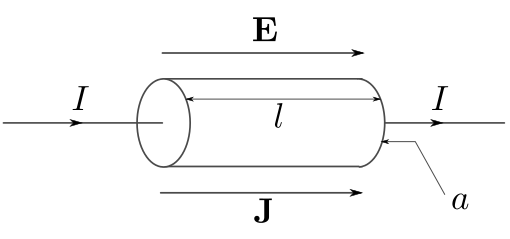
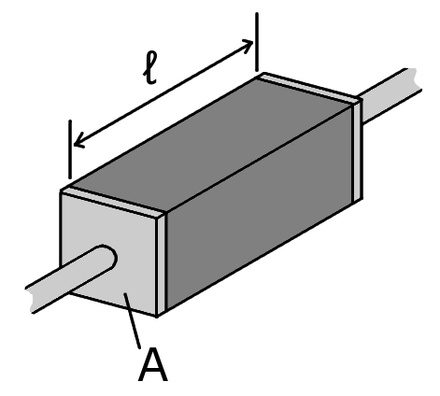
Electric quantities | Thermal quantities
|
Q = Charge Coulomb | Etherm= Thermal energy Joule
I = Current Amperes | Itherm= Thermal current Watts
E = Electric field Volts/meter | Etherm= Thermal field Kelvins/meter
C = Electric conductivity Amperes/Volt/meter | Ctherm= Thermal conductivity Watts/meter/Kelvin
A = Area meter^2 | A = Area meter^2
Z = Distance meter | Z = Distance meter^2
J = Current flux Amperes/meter^2 | Jtherm= Thermal flux Watts/meter^2
= I / A | = Ittherm / A
= C * E | = Ctherm * Etherm
V = Voltage Volts | Temp = Temperature difference Kelvin
= E Z | = Etherm Z
= I R | = Itherm Rtherm
R = Resistance Volts/Ampere = Ohms | Rtherm= Thermal resistance Kelvins/Watt
= Z / (A C) | = Z / (A Ct)
H = Current heating Watts/meter^3 |
= E J |
P = Current heating power Watts |
= E J Z A |
= V I |
Continuum quantity Macroscopic quantity
E <-> V
C <-> R = L / (A C)
J = C E <-> I = V / R
H = E J <-> P = V I
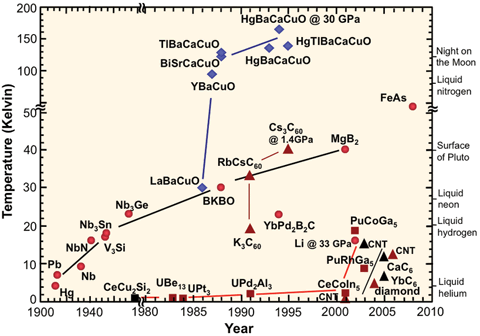
Critical Critical Type
temperature field
(Kelvin) (Teslas)
Magnesium-Boron2 39 55 2 MRI machines
Niobium3-Germanium 23.2 37 2 Field for thin films. Not widely used
Magnesium-Boron2-C 34 36 Doped with 5% carbon
Niobium3-Tin 18.3 30 2 High-performance magnets. Brittle
Vanadium3-Gallium 14.2 19 2
Niobium-Titanium 10 15 2 Cheaper than Niobium3-Tin. Ductile
Niobium3-Aluminum
Technetium 11.2 2
Niobium 9.26 .82 2
Vanadium 5.03 1 2
Tantalum 4.48 .09 1
Lead 7.19 .08 1
Lanthanum 6.3 1
Mercury 4.15 .04 1
Tungsten 4 1 Not BCS
Tin 3.72 .03 1
Indium 3.4 .028
Rhenium 2.4 .03 1
Thallium 2.4 .018
Thallium 2.39 .02 1
Aluminum 1.2 .01 1
Gallium 1.1
Gadolinium 1.1
Protactinium 1.4
Thorium 1.4
Thallium 2.4
Molybdenum .92
Zinc .85 .0054
Osmium .7
Zirconium .55
Cadmium .52 .0028
Ruthenium .5
Titanium .4 .0056
Iridium .1
Lutetium .1
Hafnium .1
Uranium .2
Beryllium .026
Tungsten .015
HgBa2Ca2Cu3O8 134 2
HgBa2Ca Cu2O6 128 2
YBa2Cu3O7 92 2
C60Cs2Rb 33 2
C60Rb 28 2 2
C60K3 19.8 .013 2
C6Ca 11.5 .95 2 Not BCS
Diamond:B 11.4 4 2 Diamond doped with boron
In2O3 3.3 3 2
The critical fields for Niobium-Titanium, Niobium3-Tin, and Vanadium3-Gallium
are for 4.2 Kelvin.
Boiling point (Kelvin)
Water 273
Ammonia 248
Freon R12 243
Freon R22 231
Propane 230
Acetylene 189
Ethane 185
Xenon 165.1
Krypton 119.7
Oxygen 90.2
Argon 87.3
Nitrogen 77.4 Threshold for cheap superconductivity
Neon 27.1
Hydrogen 20.3 Cheap MRI machines
Helium-4 4.23 High-performance magnets
Helium-3 3.19
The record for Niobium3-Tin is 2643 Amps/mm^2 at 12 T and 4.2 K.

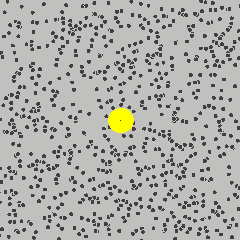
Pressure = P (Pascals or Newtons/meter2 or Joules/meter3)
Temperature = T (Kelvin)
Volume = Vol (meters3)
Total gas kinetic energy = E (Joules)
Kinetic energy per volume = e = E/Vol (Joules/meter3)
Number of gas molecules = N
Mass of a gas molecule = M
Gas molecules per volume = n = N / Vol
Gas density = D = N M / Vol
Avogadro number = Avo= 6.022⋅1023 moles-1
Moles of gas molecules = Mol= N / Avo
Boltzmann constant = k = 1.38⋅10-23 Joules/Kelvin
Gas constant = R = k Avo = 8.31 Joules/Kelvin/mole
Gas molecule thermal speed = Vth
Mean kinetic energy / gas molecule= ε = E / n = ½ M Vth2 (Definition of the mean thermal speed)
Gas pressure arises from the kinetic energy of gas molecules and has units of
energy/volume.
The ideal gas law can be written in the following forms:
P = 2⁄3 e Form used in physics
= R Mol T / Vol Form used in chemistry
= k N T / Vol
= 1⁄3 N M Vth2/ Vol
= 1⁄3 D Vth2
= k T D / M
Gas simulation at phet.colorado.edu
Derivation of the ideal gas law
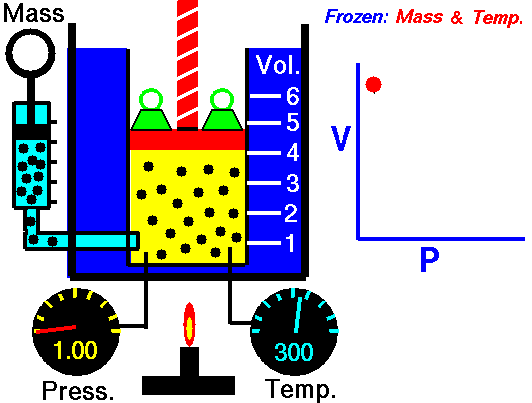
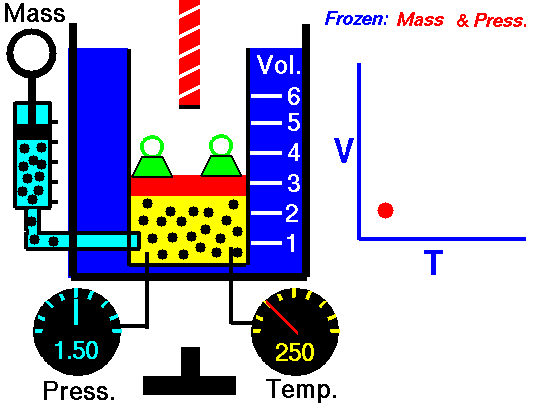
1660 Boyle law P Vol = Constant at fixed T
1802 Charles law T Vol = Constant at fixed P
1802 Gay-Lussac law T P = Constant at fixed Vol
1811 Avogadro law Vol / N = Constant at fixed T and P
1834 Clapeyron law P Vol / T = Constant combined ideal gas law
Molecule mass = M
Thermal speed = Vth
Boltzmann constant = k = 1.38⋅10-23 Joules/Kelvin
Molecule mean kinetic energy = ε
A gas molecule moving in N dimensions has N degrees
of freedom. In 3D the mean energy of a gas molecule is
ε = 3⁄2 k T = ½ M V2th
Adiabatic constant = γ
= 5/3 for monatomic molecules such as helium, neon, krypton, argon, and xenon
= 7/5 for diatomic molecules such as H2, O2, and N2
= 7/5 for air, which is 21% O2, 78% N2, and 1% Ar
≈ 1.31 for a triatomic gas such as CO2
Pressure = P
Density = D
Sound speed = Vsound
Mean thermal speed = Vth
K.E. per molecule = ε = ½ M Vth2
V2sound = γ P / D = 1⁄3 γ V2th
The sound speed depends on temperature and not on density or pressure.
Vsound = .68 Vth
These laws are derived in the appendix.
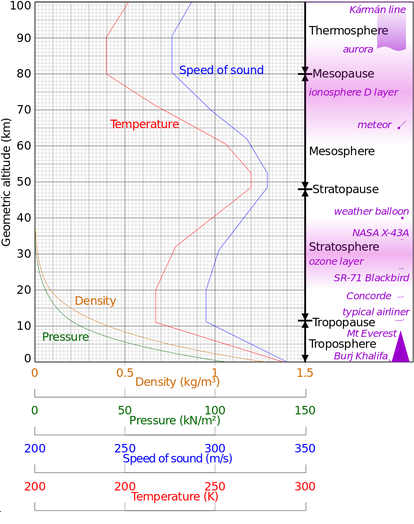
M in atomic mass units
Helium atom 4
Neon atom 20
Nitrogen molecule 28
Oxygen molecule 32
Argon atom 40
Krypton atom 84
Xenon atom 131
A helium atom has a smaller mass than a nitrogen molecule and hence has a
higher sound speed. This is why the pitch of your voice increases if you
inhale helium. Inhaling xenon makes you sound like Darth Vader. Then you pass
out because Xenon is an anaesthetic.
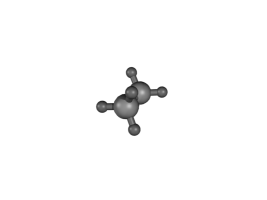

1635 Gassendi measures the speed of sound to be 478 m/s with 25% error.
1660 Viviani and Borelli produce the first accurate measurement of the speed of
sound, giving a value of 350 m/s.
1660 Hooke's law published. The force on a spring is proportional to the change
in length.
1662 Boyle discovers that for air at fixed temperature,
Pressure * Volume = Constant
1687 Newton publishes the Principia Mathematica, which contains the first analytic
calculation of the speed of sound. The calculated value was 290 m/s.
Newton's calculation was correct if one assumes that a gas behaves like Boyle's
law and Hooke's law.
Melt Boil Solid Liquid Gas Mass Sound speed
(K) (K) density density density (AMU) at 20 C
g/cm3 g/cm3 g/cm3 (m/s)
He .95 4.2 .125 .000179 4.00 1007
Ne 24.6 27.1 1.21 .000900 20.18
Ar 83.8 87.3 1.40 .00178 39.95 319
Kr 115.8 119.9 2.41 .00375 83.80 221
Xe 161.4 165.1 2.94 .00589 131.29 178
H2 14 20 .070 .000090 2.02 1270
N2 63 77 .81 .00125 28.01 349
O2 54 90 1.14 .00143 32.00 326
Air .0013 29.2 344 79% N2, 21% O2, 1% Ar
H2O 273 373 .917 1.00 .00080 18.02
CO2 n/a 195 1.56 n/a .00198 44.00 267
CH4 91 112 .42 .00070 16.04 446
CH5OH 159 352 .79 .00152 34.07 Alcohol
Gas density is for 0 Celsius and 1 Bar. Liquid density is for the boiling point,
except for water, which is for 4 Celsius.
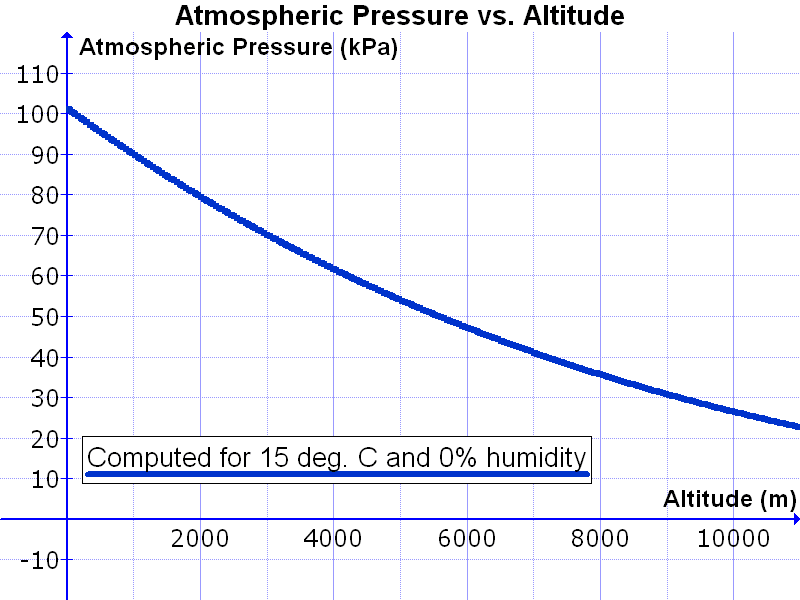
M = Mass of a gas molecule
V = Thermal speed
E = Mean energy of a gas molecule
= 1/2 M V^2
H = Characteristic height of an atmosphere
g = Gravitational acceleration
Suppose a molecule at the surface of the Earth is moving upward with speed V and suppose
it doesn't collide with other air molecules. It will reach a height of
M H g = 1/2 M V^2
This height H is the characteristic height of an atmosphere.
Pressure of air at sea level = 1 Bar
Pressure of air in Denver = .85 Bar One mile high
Pressure of air at Mount Everest = 1/4 Bar 10 km high
The density of the atmosphere scales as
Density ~ (Density At Sea Level) * exp(-E/E0)
where E is the gravitational potential energy of a gas molecule and E0 is the
characteristic thermal energy given by
E0 = M H g = 1/2 M V^2
Expressed in terms of altitude h,
Density ~ Density At Sea Level * exp(-h/H)
For oxygen,
E0 = 3/2 * Boltzmann_Constant * Temperature
E0 is the same for all molecules regardless of mass, and H depends on the
molecule's mass. H scales as
H ~ Mass^-1
S = Escape speed
T = Temperature
B = Boltzmann constant
= 1.38e-23 Joules/Kelvin
g = Planet gravity at the surface
M = Mass of heavy molecule m = Mass of light molecule
V = Thermal speed of heavy molecule v = Thermal speed of light molecule
E = Mean energy of heavy molecule e = Mean energy of light molecule
H = Characteristic height of heavy molecule h = Characteristic height of light molecule
= E / (M g) = e / (m g)
Z = Energy of heavy molecule / escape energy z = Energy of light molecule / escape energy
= .5 M V^2 / .5 M S^2 = .5 m v^2 / .5 m S^2
= V^2 / S^2 = v^2 / S^2
For an ideal gas, all molecules have the same mean kinetic energy.
E = e = 1.5 B T
.5 M V^2 = .5 m v^2 = 1.5 B T
The light molecules tend to move faster than the heavy ones. This is why
your voice increases in pitch when you breathe helium. Breathing a heavy gas such
as Xenon makes you sound like Darth Vader.
V^2 << S^2 <-> Z << 1
Escape Atmos Temp H2 N2 Z Z
speed density (K) km/s km/s (H2) (N2)
km/s (kg/m^3)
Jupiter 59.5 112 1.18 .45 .00039 .000056
Saturn 35.5 84 1.02 .39 .00083 .00012
Neptune 23.5 55 .83 .31 .0012 .00018
Uranus 21.3 53 .81 .31 .0014 .00021
Earth 11.2 1.2 287 1.89 .71 .028 .0041
Venus 10.4 67 735 3.02 1.14 .084 .012
Mars 5.03 .020 210 1.61 .61 .103 .015
Titan 2.64 5.3 94 1.08 .41 .167 .024
Europa 2.02 0 102 1.12 .42 .31 .044
Moon 2.38 0 390 2.20 .83 .85 .12
Ceres .51 0 168 1.44 .55 8.0 1.14
Even if an object has enough gravity to capture an atmosphere, it can still lose it
to the solar wind. Also, the upper atmosphere tends to be hotter than at the
surface, increasing the loss rate.
Thermal Speed < 1/5 Escape speed
Thermal speed of molecules ~ Escape speed
In the gas simulation at phet.colorado.edu, you can move the wall and watch the
gas change temperature.
3 * Boltzmann_Constant * Temperature ~ MassOfMolecules * Escape_Speed^2
For the sun, what is the temperature of a proton moving at the escape speed?
This sets the scale of the temperature of the core of the sun. The minimum temperature
for hydrogen fusion is 4 million Kelvin.
Escape speed (km/s) Core composition
Sun 618. Protons, electrons, helium
Earth 11.2 Iron
Mars 5.03 Iron
Moon 2.38 Iron
Ceres .51 Iron
M = Mass of molecule
V = Speed of the molecule
L = Space between the walls
With each collision, the momentum change = 2 M V
Force = Change in momentum / Time between collisions = M V^2 / L
Suppose a gas molecule is in a cube of volume L^3 and a molecule bounces back
and forth between two opposite walls (never touching the other four walls).
The pressure on these walls is
Pressure = Force / Area
= M V^2 / L^3
= M V^2 / Volume
Pressure * Volume = M V^2
This is the ideal gas law in one dimension. For a molecule moving in 3D,
Velocity^2 = (Velocity in X direction)^2
+ (Velocity in Y direction)^2
+ (Velocity in Z direction)^2
Characteristic thermal speed in 3D = 3 * Characteristic thermal speed in 1D.
To produce the 3D ideal gas law, replace V^2 with 1/3 V^2 in the 1D equation.
Pressure * Volume = 1/3 M V^2 Where V is the characteristic thermal speed of the gas
This is the pressure for a gas with one molecule. If there are n molecules,
Pressure Volume = n 1/3 M V^2 Ideal gas law in 3D
If a gas consists of molecules with a mix of speeds, the thermal speed is defined as
Kinetic dnergy density of gas molecules = E = (n / Volume) 1/2 M V^2
Using this, the ideal gas law can be written as
Pressure = 2/3 E
= 1/3 Density V^2
= 8.3 Moles Temperature / Volume
The last form comes from the law of thermodynamics:
M V^2 = 3 B T
Total gravitational energy = -2 * Total kinetic energy
just like for a single satellite on a circular orbit.
Gravitational energy of the sun = -2 * Kinetic energy of protons in the sun


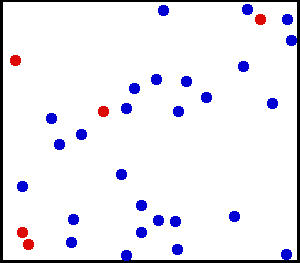
Because of Hooke's law, springs oscillate with a constant frequency.
X = Displacement of a spring
V = Velocity of the spring
A = Acceleration of the spring
F = Force on the spring
M = Spring mass
Q = Spring constant
q = (K/M)^(1/2)
t = time
T = Spring oscillation period
Hooke's law and Newton's law:
F = - Q X = M A
A = - (Q/M) X = - q^2 X
This equation is solved with
X = sin(q t)
V = q cos(q t)
A = -q^2 sin(q t) = - q^2 X
The oscillation period of the spring is
T = 2 Pi / q
= 2 Pi (M/Q)^(1/2)
According to Boyle's law, a gas functions like a spring and hence a gas oscillates
like a spring. An oscillation in a gas is a sound wave.
P = Pressure
dP = Change in pressure
Vol = Volume
dVol= Change in volume
If you change the volume of a gas according to Boyle's law,
P Vol = Constant
P dVol + Vol dP = 0
dP = - (P/Vol) dVol
The change in pressure is proportional to the change in volume.
This is equivalent to Hooke's law, where pressure takes the role of force
and the change in volume takes the role of displacement of the spring.
This is the mechanism behind sound waves.
In Boyle's law, the change in volume is assumed to be slow so the gas
has time to equilibrate temperature with its surroundings. In this case
the temperature is constant as the volume changes and the change is
"isothermal".
P Vol = Constant
If the change in volume is fast then the walls do work on the molecules,
changing their temperature. If there isn't enough time to equilibrate
temperature with the surroundings then the change is "adiabatic". You can see
this in action with the "Gas" simulation at phet.colorado.edu.
Moving the wall changes the thermal speed of molecules and hence the temperature.
If a gas consists of pointlike particles then
Vol = Volume of the gas
Ek = Total kinetic energy of gas molecules within the volume
E = Total energy of gas molecules within the volume
= Kinetic energy plus the energy from molecular rotation and vibration
dE = Change in energy as the volume changes
P = Pressure
dP = Change in pressure as the volume changes
D = Density
C = Speed of sound in the gas
d = Number of degrees of freedom of a gas molecule
= 3 for a monotomic gas such as Helium
= 5 for a diatomic gas such as nitrogen
G = Adiabatic constant
= 1 + 2/d
= 5/3 for a monatomic gas
= 7/5 for a diatomic gas
k = Boltzmann constant
T = Temperature
The ideal gas law is
P Vol = (2/3) Ek (Derived in www.jaymaron.com/gas/gas.html)
This law is equivalent to the formula that appears in chemistry.
P Vol = Moles R T
For a gas in thermal equilibrium each degree of freedom has a mean energy of
.5 k T. For a gas of pointlike particles (monotomic) there are three degrees of
freedom, one each for motion in the X, Y, and Z direction. In this case d=3.
The mean kinetic energy of each gas molecule is 3 * (.5 k T).
The total mean energy of each gas molecule is also 3 * (.5 k T).
Ek = 3 * (.5 k T)
E = d * (.5 k T)
Ek = (3/d) E
If you change the volume of a gas adiabatically, the walls change the kinetic and
rotational energy of the gas molecules.
dE = -P dVol
The ideal gas law in terms of E instead of Ek is
P Vol = (2/d) E
dP = (2/d) (dE/Vol - E dVol/Vol^2)
= (2/d) [-P dVol/Vol - (d/2) P dVol/Vol]
= -(1+2/d) P dVol/Vol
= - G P dVol/Vol
This equation determines the speed of sound in a gas.
C^2 = G P / D
For air,
P = 1.01e5 Newtons/meter^2
D = 1.2 kg/meter^3
Newton assumed G=1 from Boyle's law, yielding a sound speed of
C = 290 m/s
The correct value for air is G=7/5, which gives a sound speed of
C = 343 m/s
which is in accord with the measurement.
For a gas, G can be measured by measuring the sound speed. The results are
Helium 5/3 Monatomic molecule
Argon 5/3 Monatonic molecule
Air 7/5 4/5 Nitrogen and 1/5 Oxygen
Oxygen 7/5 Diatomic molecule
Nitrogen 7/5 Diatomic molecule
The fact that G is not equal to 1 was the first solid evidence for the
existence of atoms and it also contained a clue for quantum mechanics. If a
gas is a continuum (like Hooke's law) it has G=1 and if it consists of
pointlike particles (monatonic) it has G=5/3. This explains helium and argon
but not nitrogen and oxygen. Nitrogen and oxygen are diatomic molecules and
their rotational degrees of freedom change Gamma.
Kinetic degrees Rotational degrees Gamma
of freedom of freedom
Monatonic gas 3 0 5/3
Diatomic gas T < 1000 K 3 2 7/5
Diatomic gas, T > 1000 K 3 3 4/3
Quantum mechanics freezes out one of the rotation modes at low temperature.
Without quantum mechanics, diatomic molecules would have Gamma=4/3 at room
temperature.
E = Energy
dE = Change in energy
e = Energy density
Vol= Volume
P = Pressure
The volume expands as the universe expands.
dE = - P dVol
For dark energy, the energy density "e" is constant in space and so
dE = e dVol
Hence,
P = - e
Dark energy has a negative pressure, which means that it behaves differently
from a continuum and from particles.

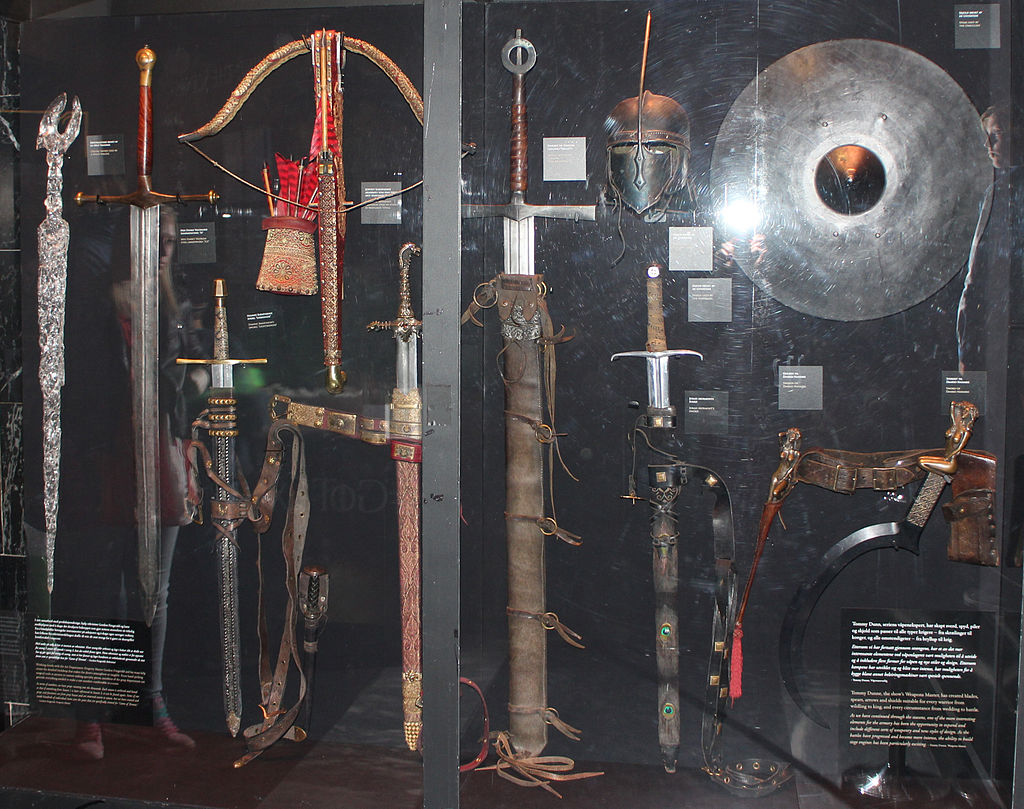
Yield Density Strength/Density
strength (g/cm3) (GJoule/kg)
(GPascal)
Beryllium .34 1.85 .186
Aluminum + Be .41 2.27 .181
LiMgAlScTi 1.97 2.67 .738
Titanium .22 4.51 .050
Titanium + AlVCrMo 1.20 4.6 .261
Vanadium .53 6.0 .076
AlCrFeCoNiTi 2.26 6.5 .377
AlCrFeCoNiMo 2.76 7.1 .394
Steel .25 7.9 .032 Iron plus carbon
Copper .12 9.0 .013
"Yield strength" is the maximum pressure a material can sustain before
deforming. "Strength/Density" is the strength-to-weight ratio.
Steel is stronger and lighter than copper.
Name Owner
Sword Longclaw Jon Snow
Sword Heartsbane Samwell Tarly
Dagger Arya
Sword Ice Eddard Stark Reforged into Oathkeeper and Widow's Wail
Sword Oathkeeper Brienne of Tarth
Sword Widow's Wail The Crown
Sword Lady Forlorn Ser Lyn Corbray
Sword Nightfall Ser Harras Harlow
Sword Red Rain Lord Dunstan Drumm
Arakh Caggo
Armor Euron Greyjoy
Horn Dragonbinder The Citadel of The Maesters
Some Maesters carry links of Valyrian steel, a symbol of mastery of the highest arts.
Reflectivity
Black paint .025
Super black .004 Nickel-phosphorus alloy
Vantablack .00035 Carbon nanotubes
Quantity Electricity Thermal Viscosity
Stuff Coulomb Joule Momentum
Stuff/volume Coulomb/m^3 Joule/m^3 Momentum/m^3
Flow = Stuff/time Coulomb/second Joule/s Momentum/s
Potential Volts Kelvin Momentum/m^3
Field Volts/meter Kelvins/meter Momentum/m^3/m
Flow density = Flow/m^2 Amperes/meter^2 Watts/meter^2 Momentum/s/m^2
Conductivity Amperes/Volt/meter Watts/meter/Kelvin m^2/s
Resistance Volts/Ampere Kelvins/Watt s/m^3
Flow density = Conductivity * Field
Flow = Potential / Resistance
Field = -Gradient(Potential)
Fluid density = ρ (kg/meter3)
Fluid velocity = V
Fluid momentum density = U = D V
Kinematic viscosity = νk (meters2 / second)
Dynamic viscosity = νd = ρ νk (Pascal seconds)
Lagrangian time deriv. = Dt
Dt U = ∇⋅(νd∇U)
Dt V = ∇⋅(νk∇V)
Dynamic Kinematic Density
viscosity viscosity (kg/m3)
(Pa s) (m2/s)
Hydrogen .00000876
Nitrogen .0000178
Air .0000183 .0000150 1.22
Helium .000019
Oxygen .0000202
Xenon .0000212
Acetone .00031
Benzine .00061
Water at 2 C .00167
Water at 10 C .00131 .0000010 1000
Water at 20 C .00100 1000
Water at 30 C .000798 1000
Water at 100 C .000282 1000
Mercury .00153 .00000012
Blood .0035
Motor oil .065
Olive oil .081
Honey 6
Peanut butter 250
Asthenosphere 7e19 Weak layer between the curst and mantle
Upper mantle .8e21
Lower mantle 1.5e21
1 Stokes = 1 cm2/s = 10-4 m2/s
Schmidt number = Momentum diffusivity / Mass diffusivity
Prandtl number = Momentum diffusivity / Thermal diffusivity
Magnetic Prandtl number = Momentum diffusivity / Magnetic diffusivity
Prandtl Schmidt
Air .7 .7
Water 7
Liquid metals << 1
Oils >> 1
n = Electron density
M = Electron mass
V = Electron thermal velocity
Q = Proton charge
k = Boltzmann constant
Temp = Temperature
Xdebye = Debye length (k*Temp/n/Q^2/(4 Pi Ke))^.5
Xgyro = Electron gyro radius M V / Q B
Fgyro = Electron gyrofrequency
Electron Temp Debye Magnetic
density (K) (m) field (T)
(m^-3)
Solar core e32 e7 e-11 -
ITER 1.0e20 e8 e-4 5.3
Laser fusion 6.0e32 e8 - National Ignition Facility. density=1000 g/cm^3
Gas discharge e16 e4 e-4 -
Ionosphere e12 e3 e-3 e-5
Magnetosphere e7 e7 e2 e-8
Solar wind e6 e5 e1 e-9
Interstellar e5 e4 e1 e-10
Intergalactic e0 e6 e5 -
ITER ion temperature = 8.0 keV
ITER electron temperature = 8.8 keV
ITER confinement time = 400 seconds
Compression Heating Fusion Heating Density Year
laser (MJ) laser (MJ) energy time (kg/m^3)
(MJ) (s)
NOVA .3 1984. LLNL
National Ignition Facility (NIF) 330 - 20 .9 2010
HiPER .2 .07 30 e-11 .3 Future
String Height of Height of String String
length Tension (Newtons) top string bottom string length length
mm E A D G C mm mm inch violin=1
Violin 320 80 50 45 45 3.2 5.2 12.6 1
Viola 388 65 55 55 55 4.8 6.2 15.3 1.21
Cello 690 160 130 130 130 5.2 8.2 27.2 2.2
Bass 1060 160 160 160 160 41.3 3.3
Guitar 650 120 120 120 120 25.6 2.0
Bass guitar 860 160 160 160 160 33.6 2.7
Values for a violin A-string
L = Length of a string = .32 meters
F = Vibration frequency of the string = 440 Hertz
V = Speed of a wave on the string = 281.6 meters/second
= 2 F L
For a given instrument and string frequency, the wavespeed is fixed.
WaveSpeed^2 = Tension / (Density * Pi * Radius^2)
The variables you can vary for a string are {Tension, Density, Radius}.
Once you have chosen the frequency and length of the string then these variables
are related by
Tension = Constant * Density * Radius^2
SoundSpeed^2 = (7/5) Pressure / Density
Force = Force on the string
A = Area of the string
S = Stress on the string
= Force / A
Smax = Tensile strength
= Maximum string stress before breaking
Z = Strength to weight ratio
Z = Smax / Density
Tensile Density Z/10^6 Young's
strength modulus
(GPa) (g/cm^3) (J/kg) (GPa)
Carbon nanotube 7 .116 60.3 Technology not yet developed
Nylon .045 1.15 .04 5
Kevlar 3.6 1.44 2.5
Zylon 5.8 1.5 3.9
Gut .2 1.5 .13 6
Magnesium alloy .4 1.8 .22
Aluminum .05 2.7
Titanium alloy .94 4.5 .21
Nickel .20 8.9
Chromium .28 7.2
Steel alloy 2.0 7.9 .25 220
Brass .55 8.7
Silver .17 10.5
Tungsten .55 19.2 .029
Gold .13 19.3
Osmium 1.0 22.6
Iridium
F = String frequency
R = String radius
A = String cross-sectional area
= Pi R^2
D = String density
L = String length
Force= String tension force (Newtons)
S = Tensile stress (Pascals)
= Force / A
Smax = Maximum string tensile stress before breaking
= Tensile strength
V = Speed of a wave on the string
= SquareRoot(P/D)
Z = String strength-to-weight ratio
= S/D
Fmax = Maximum frequency of a string
The maximum frequency of a string happens when S=Smax.
Fmax = V / (2L)
= SquareRoot(Smax/D) / (2L)
= SquareRoot(Z) / (2L)
The maximum frequency of a string depends on the strength-to-weight ratio Z.
Values for Z for various string materials are given in the table above.
Steel alloy is often used for the highest-frequency strings on a violin or
piano.
Gut Steel Zylon Carbon Tungsten
nanotube
Violin 563 781 2960 12100 266
Viola 465 644 2440 3160 220
Cello 261 362 1370 5620 123
Bass 170 236 895 3660 80
Guitar 277 385 1519 5973 131
Bass guitar 209 291 1148 4514 99
Frequencies are in Hertz.
Frequency = Constant * SquareRoot(Smax/D) / R
String frequency is inversely proportional to radius. A string can be made an
octave lower by doubling the radius.
-
Freq Length Diameter
(Hz) (mm) (mm)
Violin G 196 320 .46
Viola C 130 388 .62
Cello C 65 690 1.07
Bass E 41 1060 1.18
Guitar E 82 650 .90
Bass guitar E 41 860 1.7
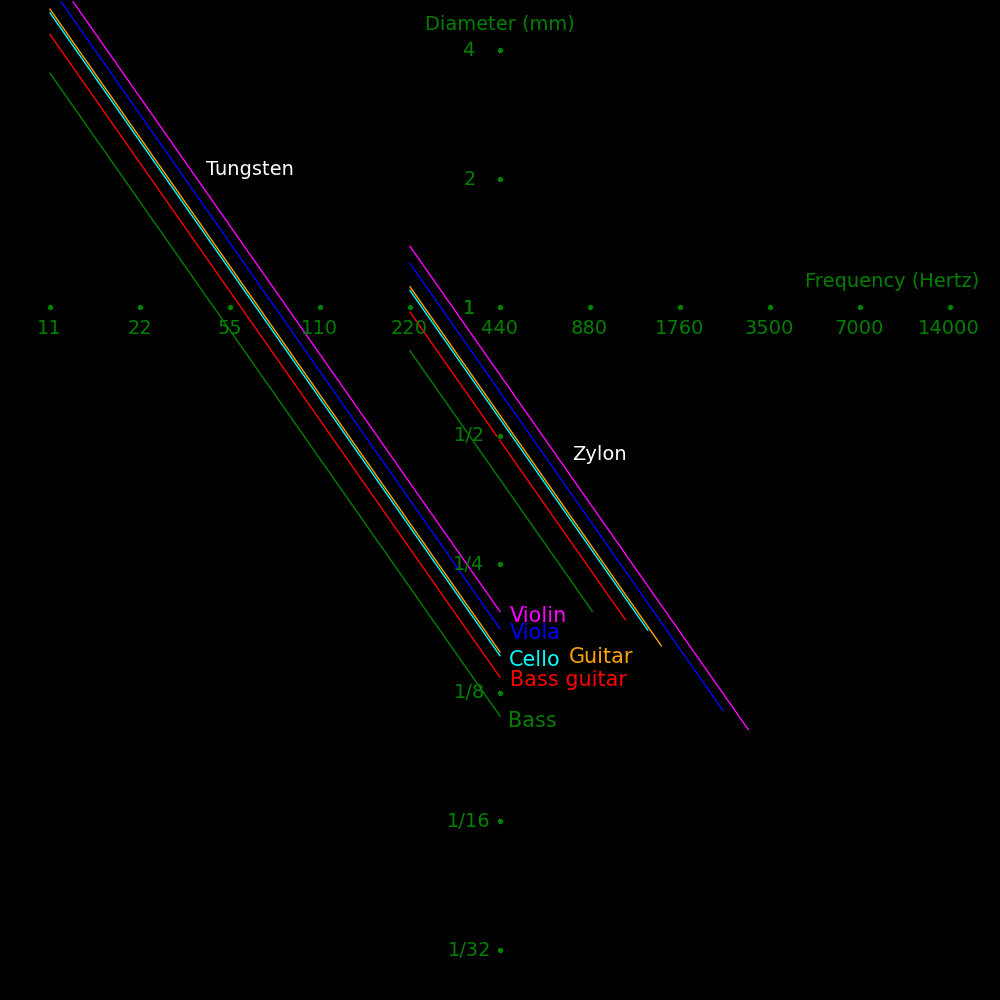

Density Price
(g/cm^3) ($/g)
Zylon 1.5 Cheap
Tungsten 19.2 .05
Gold 19.3 40
Rhenium 21.0 10
Platinum 21.4 80
Iridium 22.4 20
Osmium 22.6 20
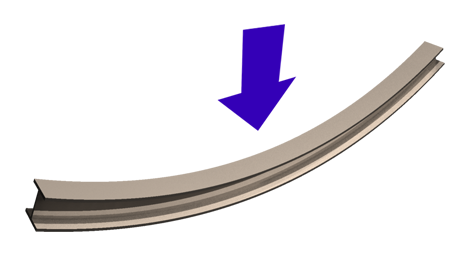
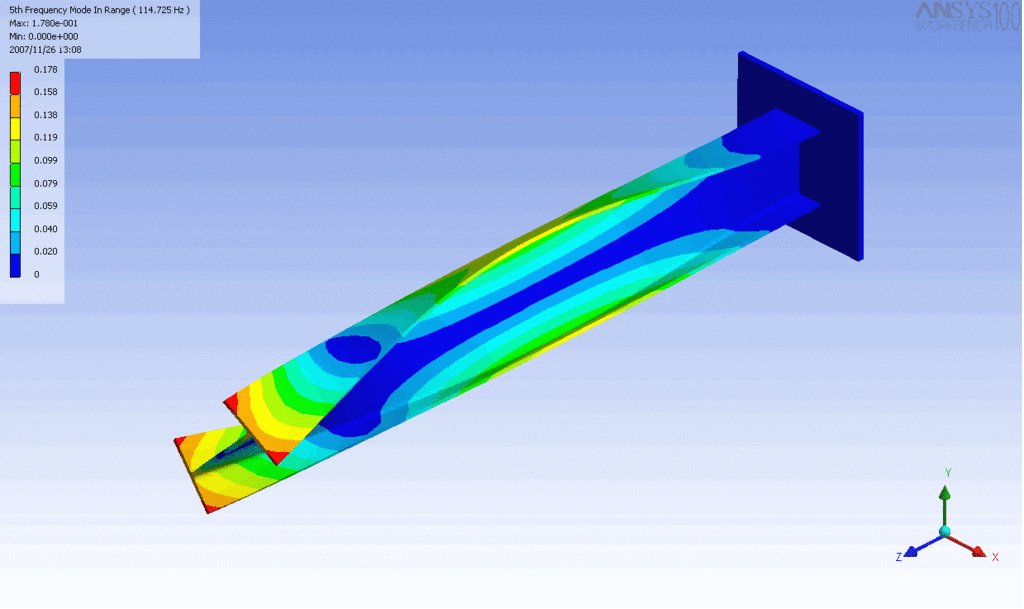

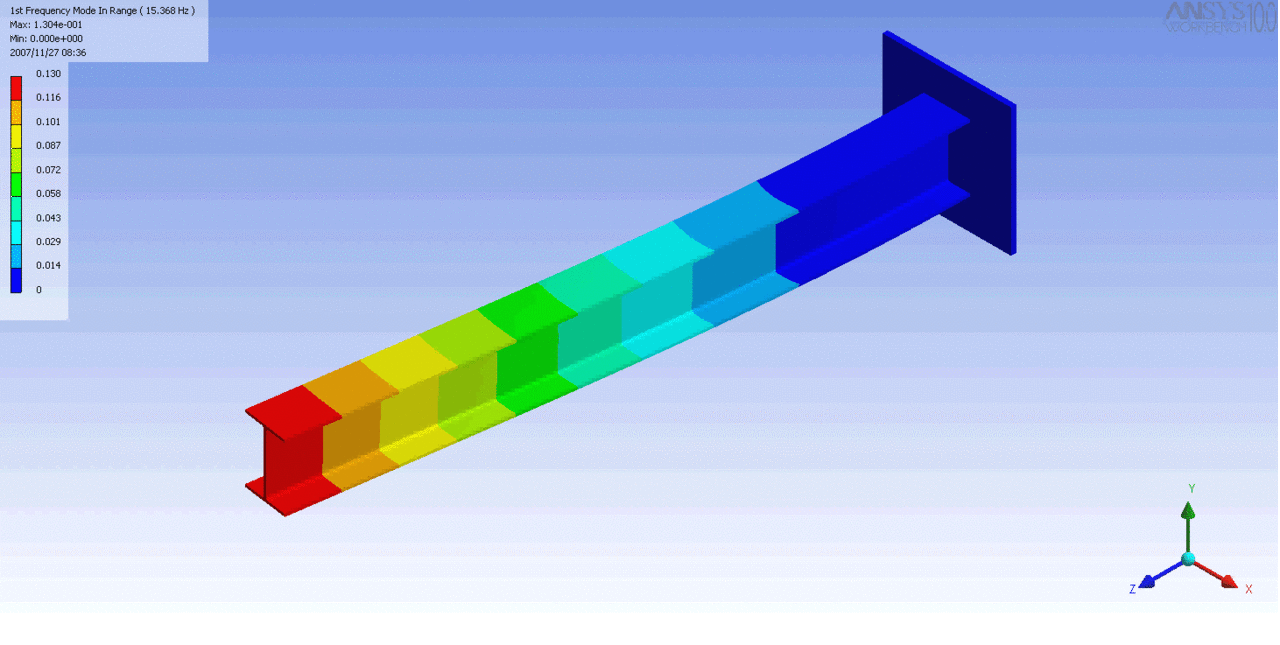
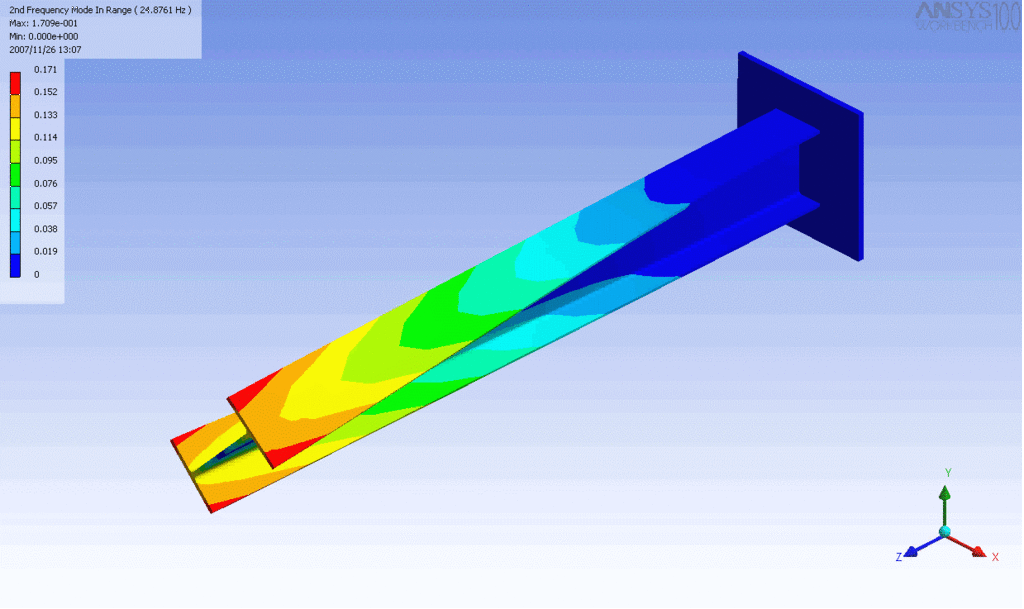
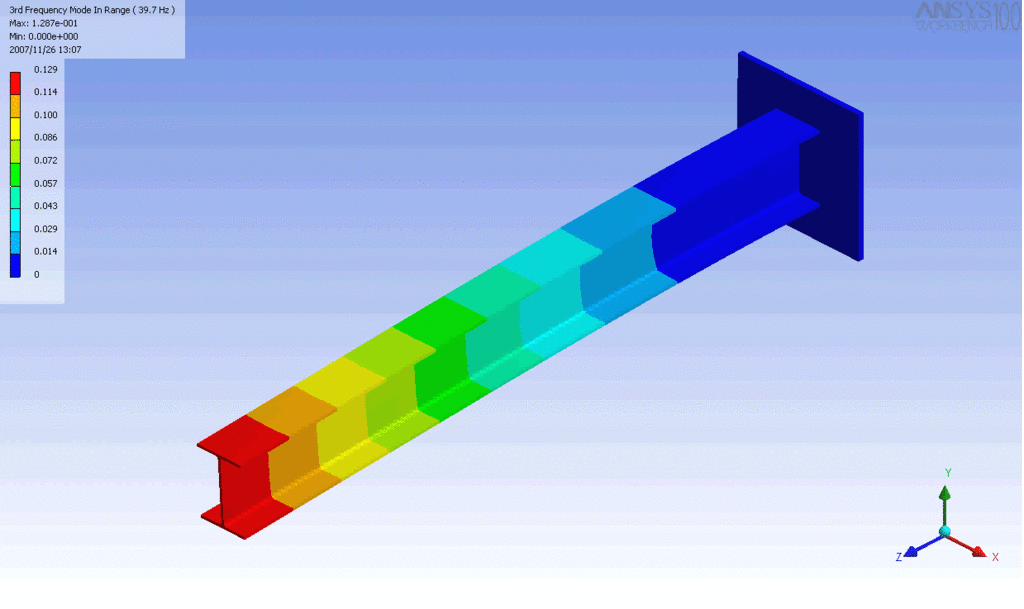
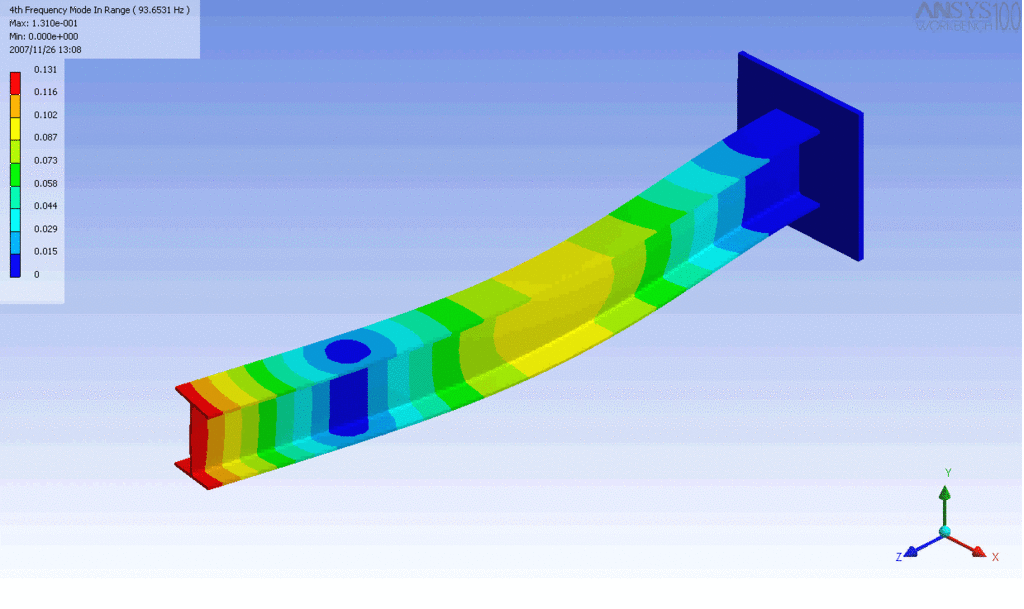

R = String radius
L = String length
D = String density
Y = Young's modulus for the string
Force= Tension force on the string
N = An integer greater than or equal to 1
Fn = Frequency of overtone N
= N F (1 + C N^2)
C = Constant of inharmonicity
= Pi^3 R^4 Y / (8 L^2 Force)
If C=0 then there is no inharmonicity and the overtones are exact integer multiples
of the fundamental mode. If the string has finite thickness then the frequencies
of the overtones shift.
C = Pi Force Y / (128 D^2 F^4 L^6)
Increasing the density decreases the inharmonicity.
String Tension Frequency Density Radius Young's C
length (Newtons) (Hertz) (g/cm^3) (mm) modulus
(mm) (GPa)
Violin E gut 320 80 660 1.5 .31 6 .000026
Violin E steel 320 80 660 7.9 .13 220 .000033
Violin G steel 320 45 196 7.9 .34 220 .00012
Viola C steel 388 55 130 7.9 .47 220 .00019
Cello C steel 690 130 65 7.9 .81 220 .000098
Bass E steel 1060 160 41 7.9 .92 220 .000047
Guitar E steel 650 140 82 7.9 .70 220 .000058
Bass guitar E 860 220 41 7.9 1.34 220 .00017
If we set the frequency shift from inharmonicity equal to the frequency resolution
for human hearing,
N^2 C = 1/170
If C=.0001 then N=7.7 (The inharmonicity appears at the 8th overtone)
L = Length of the string
R = Outer radius of the string
r = Radius of the inner core
= K R where K is a dimensionless constant
Y = Young's modulus of the core material
D = Density of the outer winding
Force= Force on the string
= k L where k is a constant
Y = Young's modulus of the core
S = Stress on the inner core
= Force / (Pi r^2)
s = Strain on the inner core
= S/Y
C = Constant of inharmonicity
= Pi^3 R^4 Y / (8 L^2 Force)
= Pi Force Y / (128 D^2 F^4 L^6)
The strain should be as large as possible to minimize the Young's modulus, but
if it is too large then the string loses functionality. We assume that the
strain is a constant value.
Force / (Pi r^2) = Y s
The larger the value of "r" the lower the value of "Y" and the lower the inharmonicity.
Force = Pi R^2 4 D F^2 L^2
= Pi r^2 Y s
We have
4 D F^2 L^2 = K^2 Y s
The inharmonicity is
C = Pi Force Y / (128 D^2 F^4 L^6)
= Pi Force 4 D F^2 L^2 / (128 K^2 s D^2 F^4 L^6)
= Pi Force / (32 K^2 D F^2 s L^4)
= Constant * Force / (F^2 L^4)
If we assume that
Force = Constant * L
then
C = Constant / (F^2 L^3)
The lowest practical frequency of an instrument scales as L^(-3/2).
Relative inharmonicity = 1/(Freq^2 Length^3)
The relative inharmonicity of the lowest string for various instruments is
given by the following table. The value is similar for all instruments.
Freq Length Relative inharmonicity
(Hz) (mm) = 1/(Freq^2 Length^3)
Violin G 196 320 .00079
Viola C 130 388 .00101
Cello C 65 690 .00072
Bass E 41 1060 .00050
Guitar E 82 650 .00054
Bass guitar E 41 860 .00094
Note Freq Tension Core Core Outer Core Core
(Hertz) stress radius radius Young strain
(N) (GPa) (mm) (GPa)
Viola C 130.4 50 .2 .28 .70 70 .0155
Viola C 65.2 50 .2 .28 1.30 70 .0155
Viola C 65.2 50 1.0 .126 1.25 70 .0155

© Jason Maron, all rights reserved.
Data from Wikipedia unless otherwise specified.